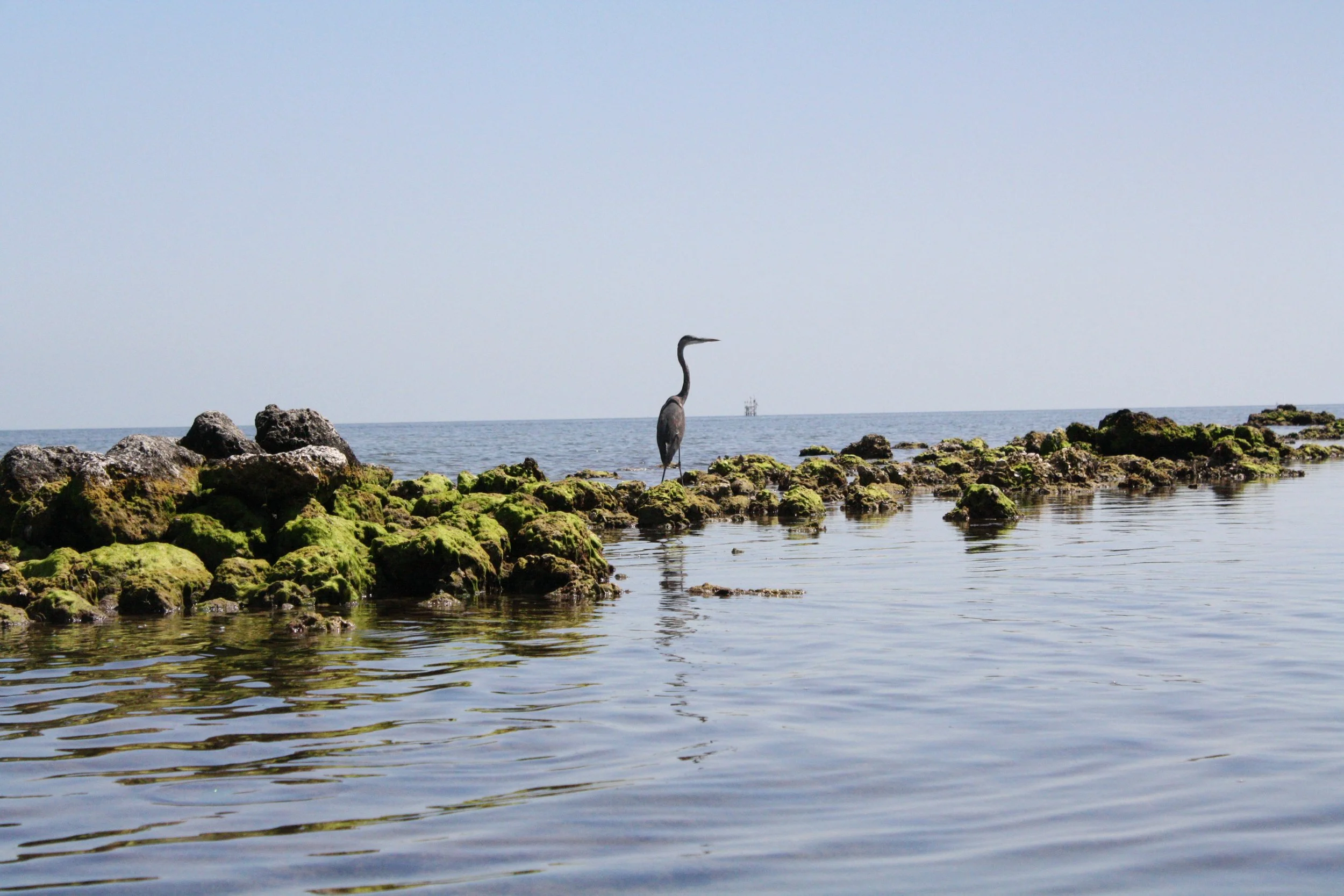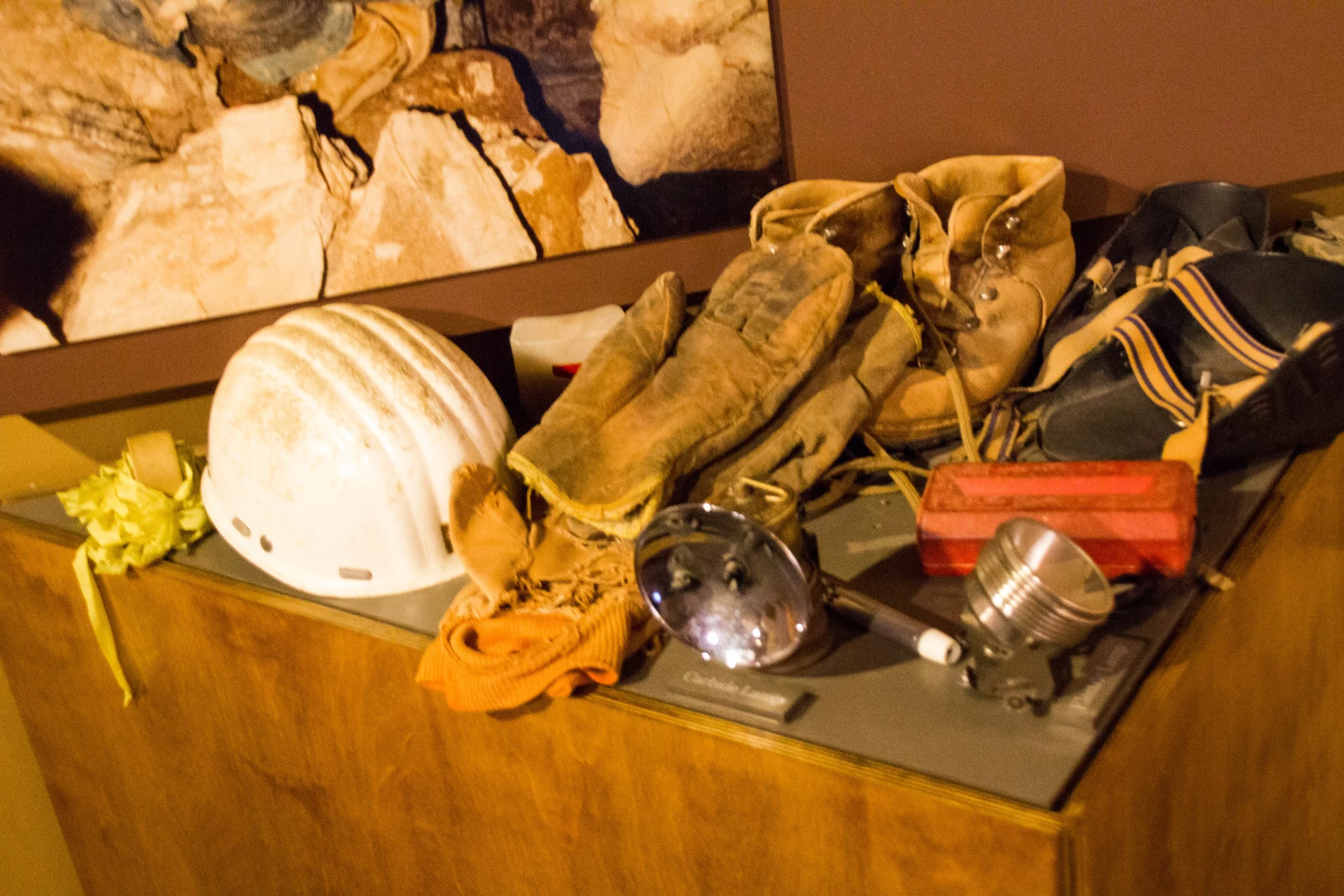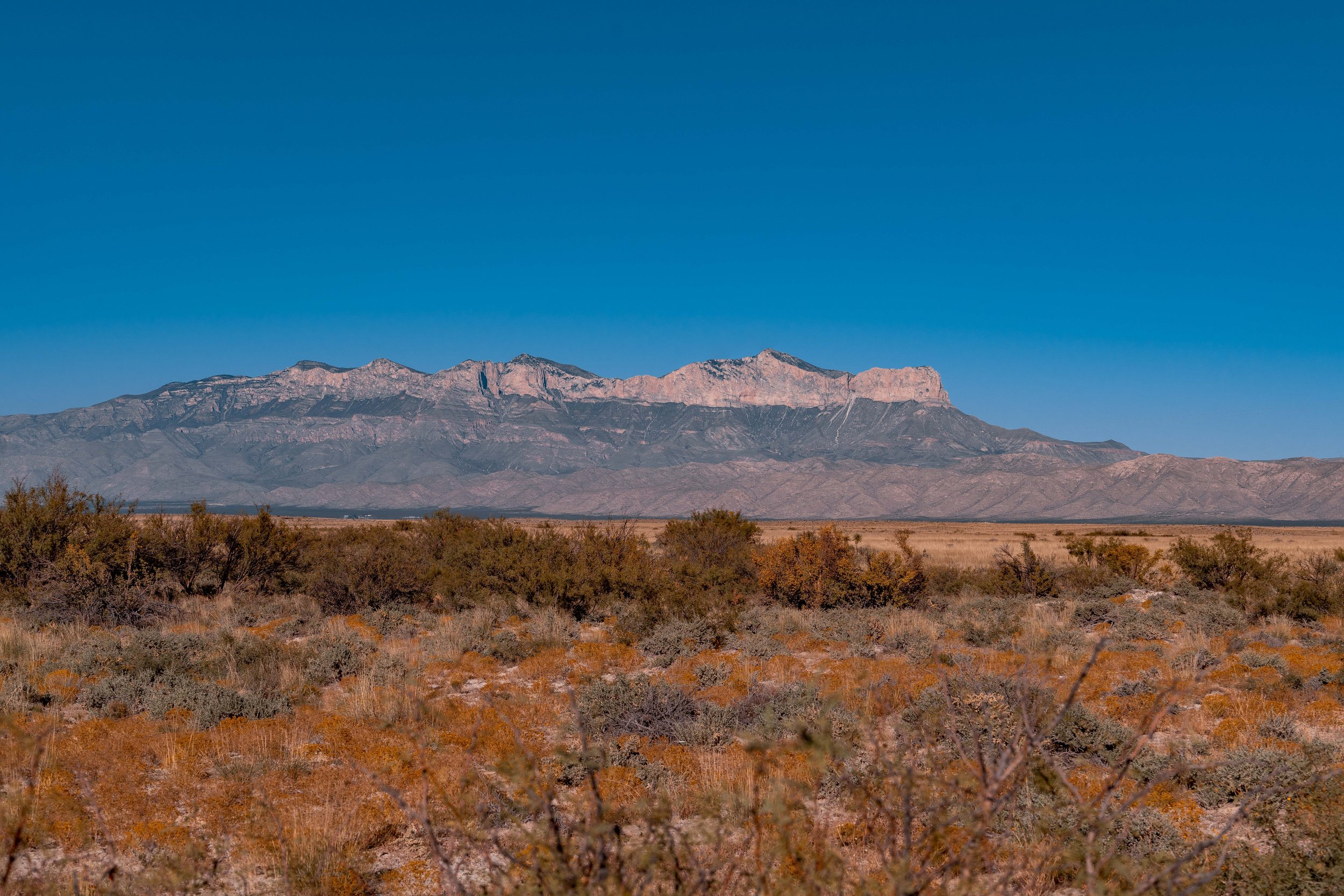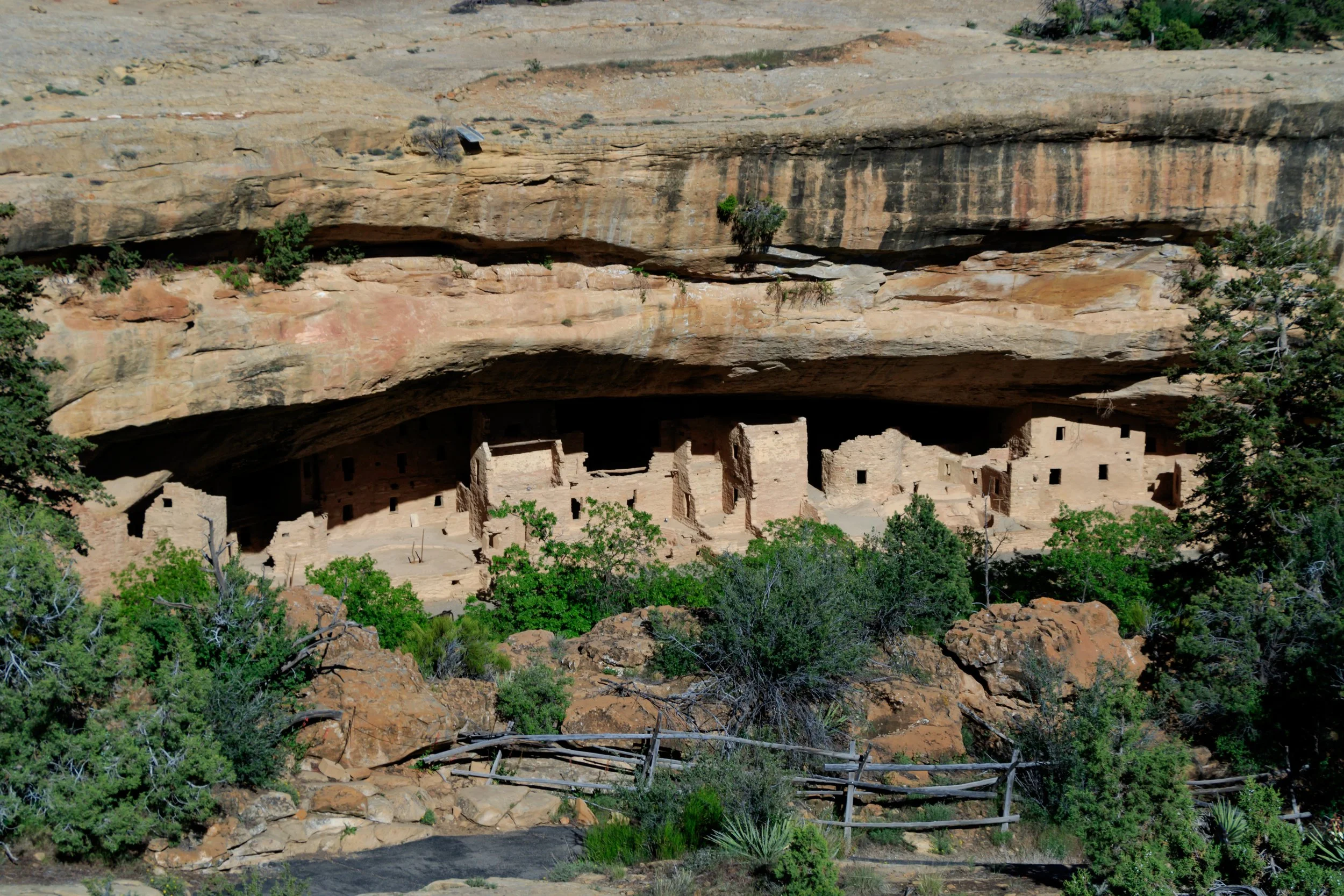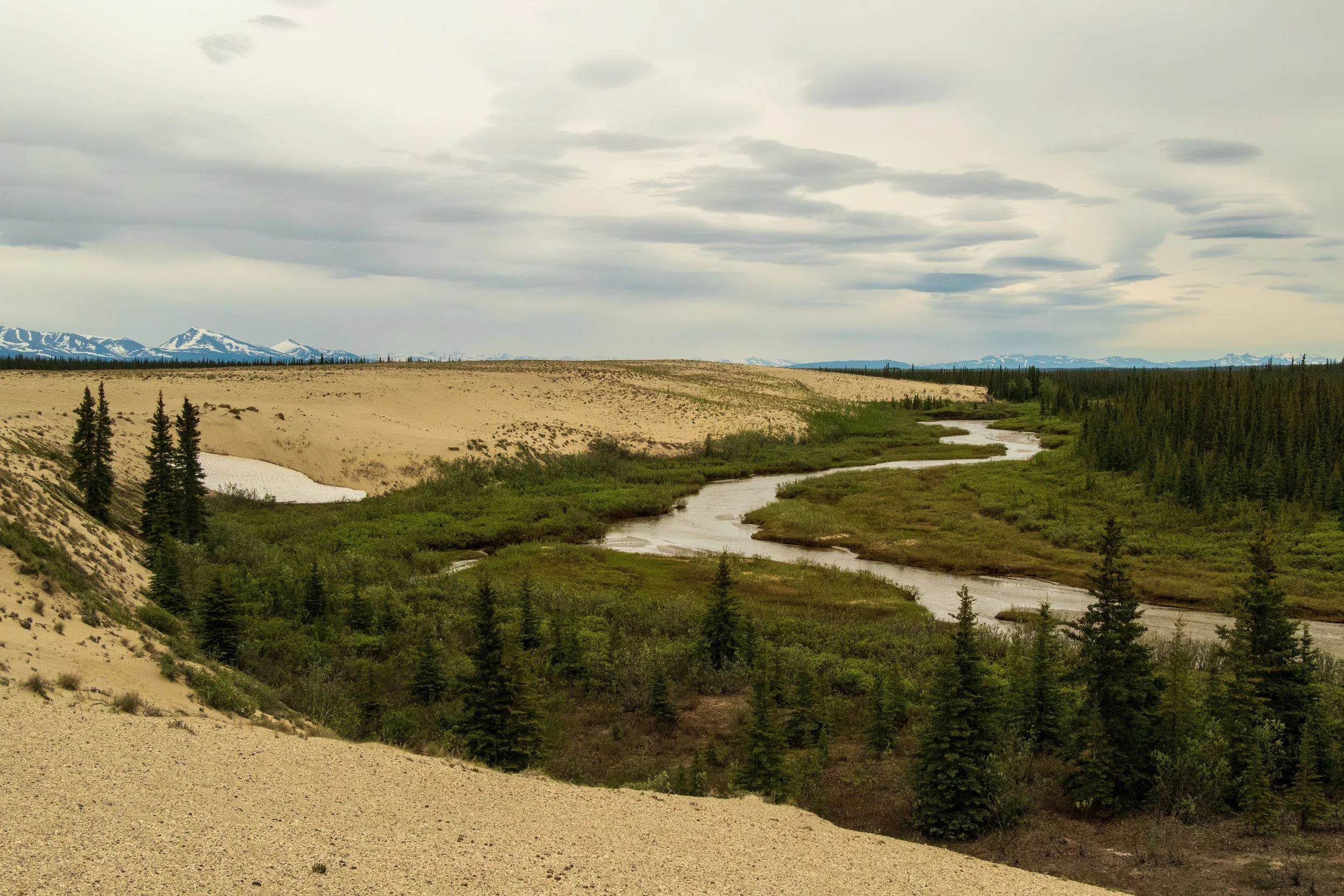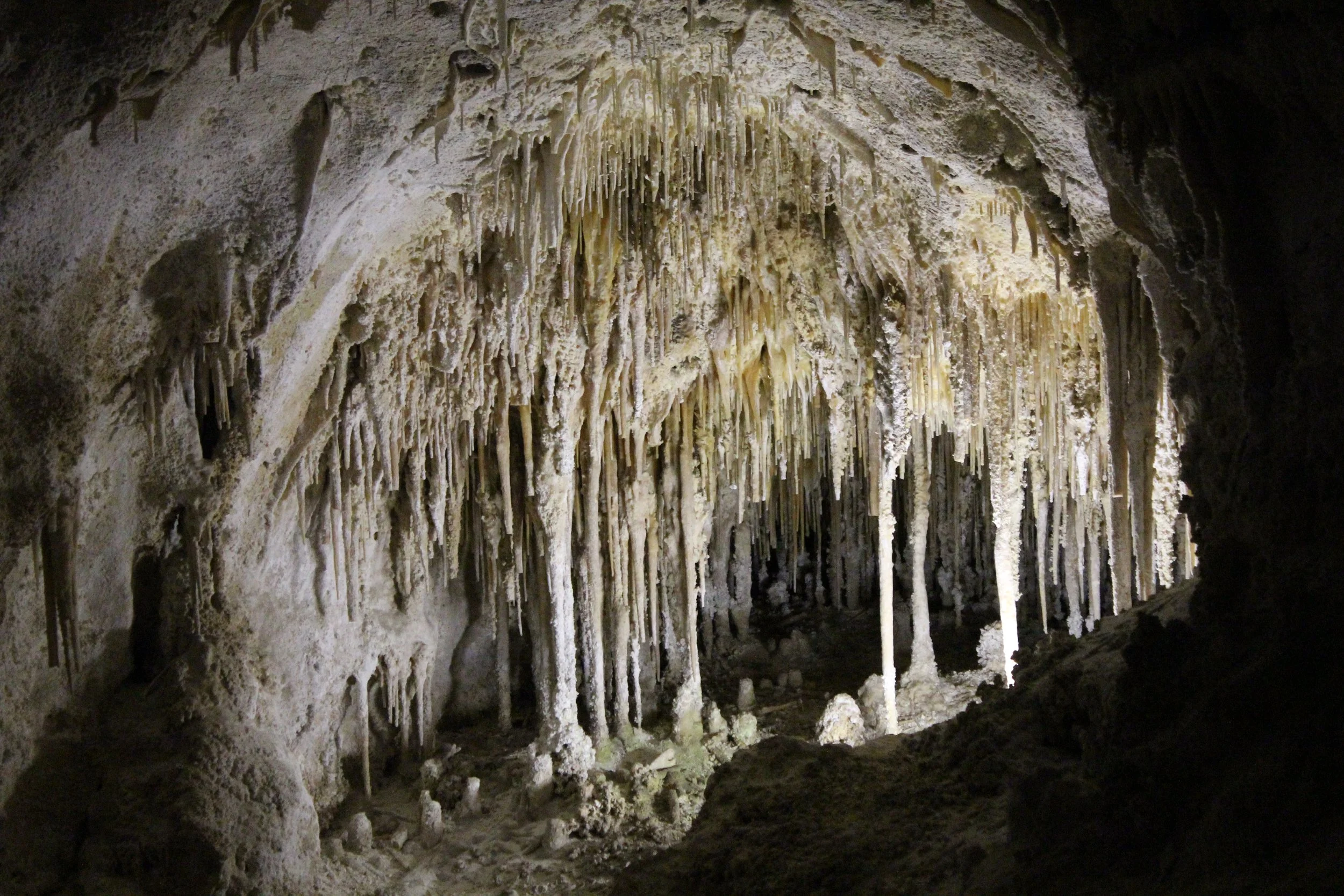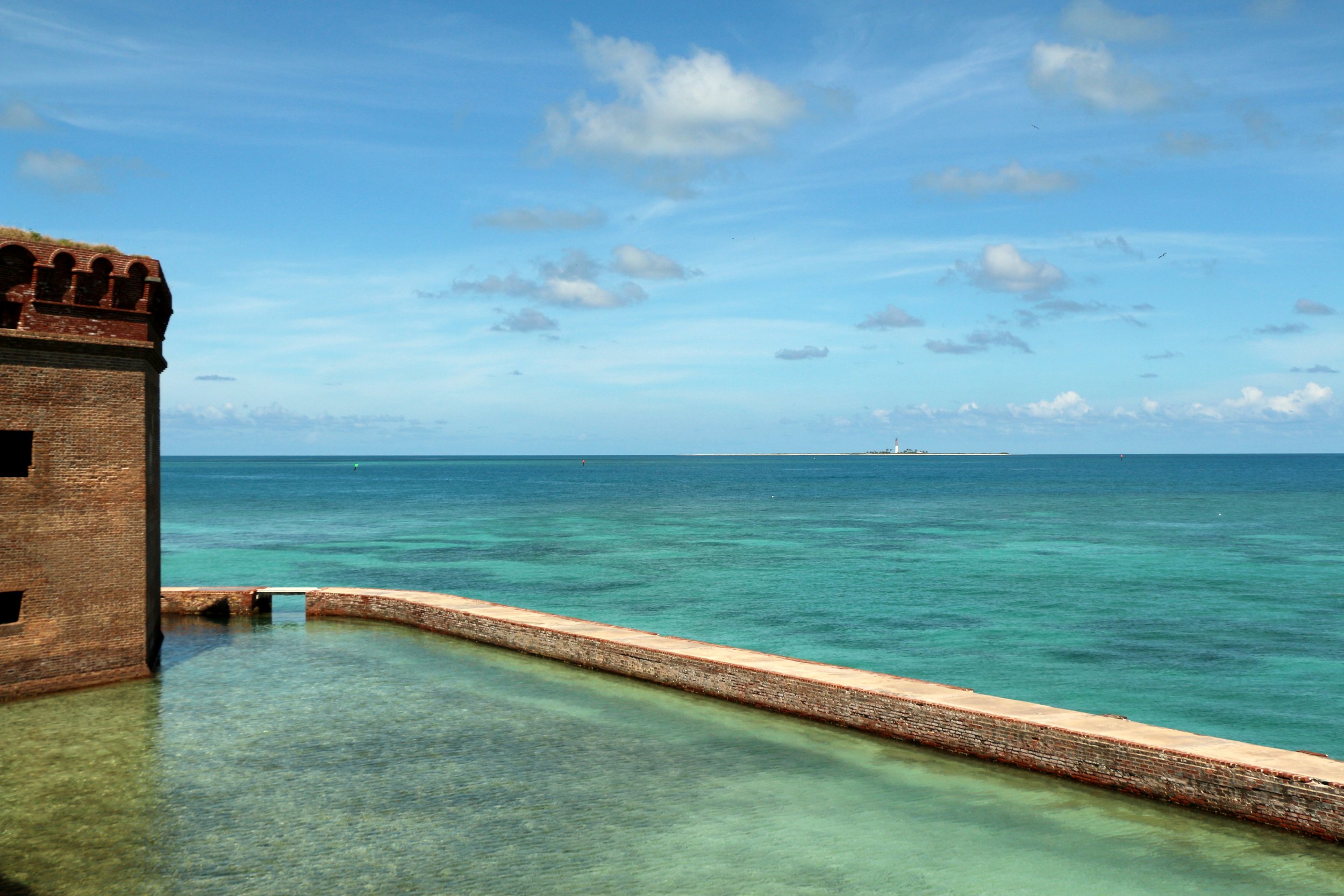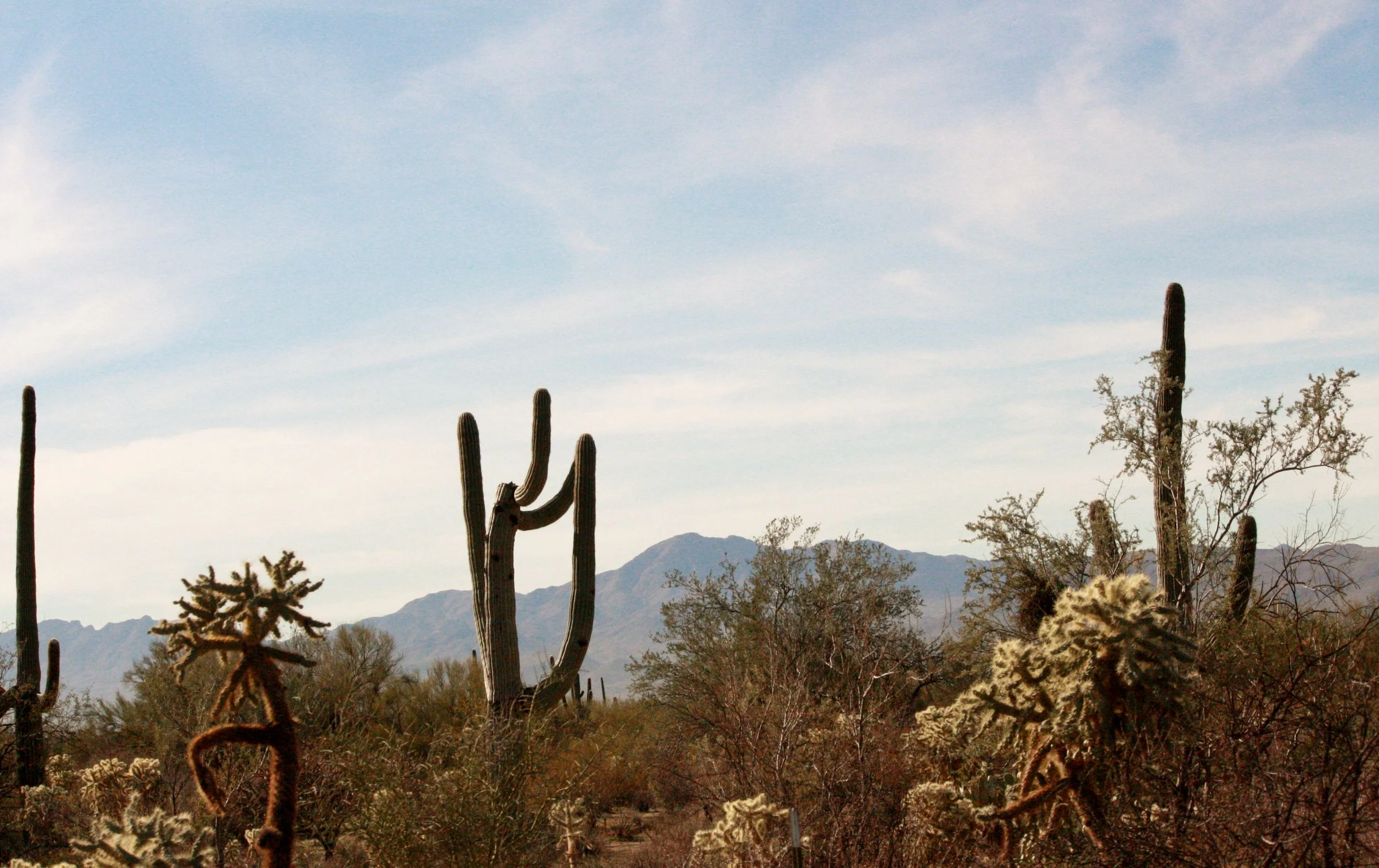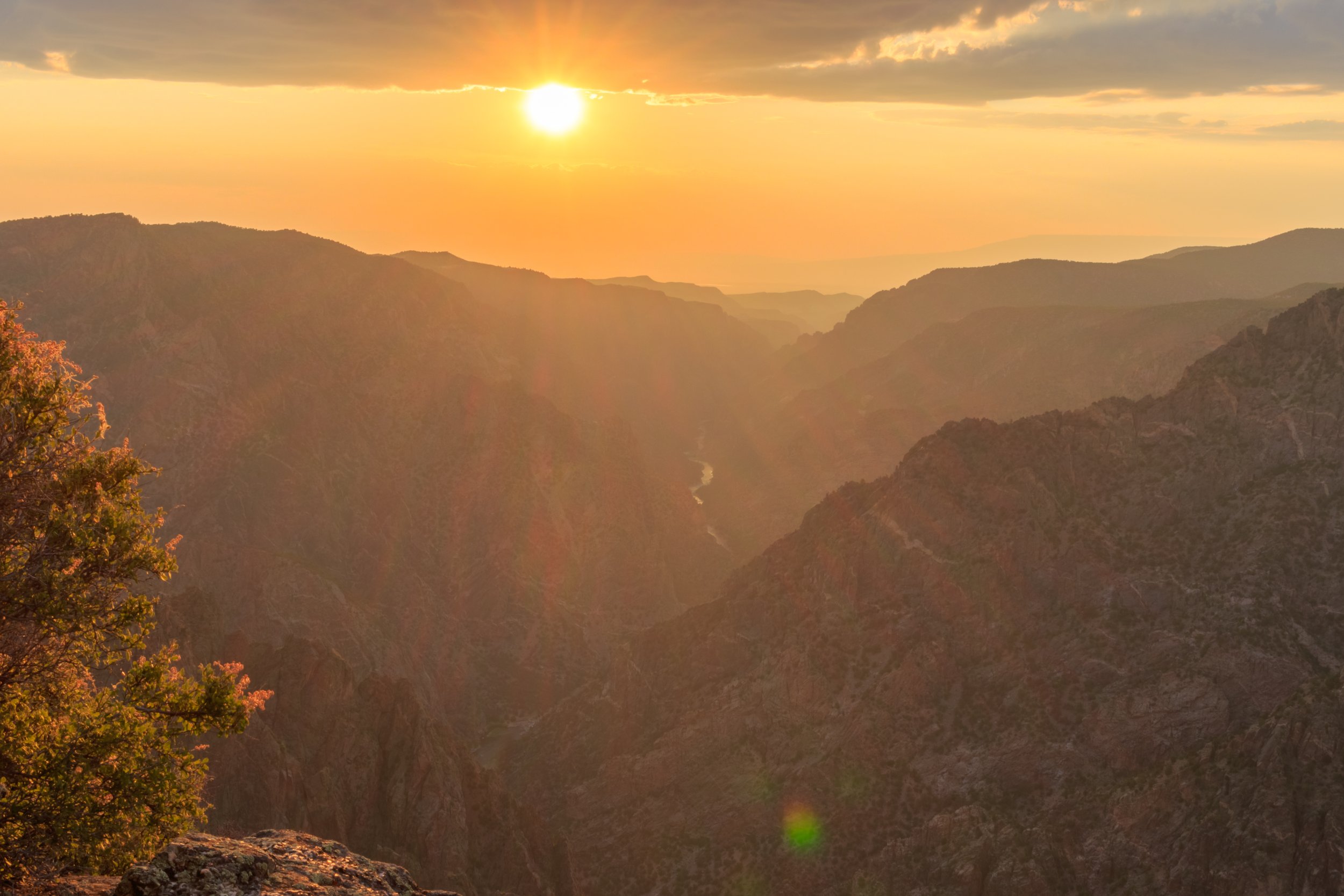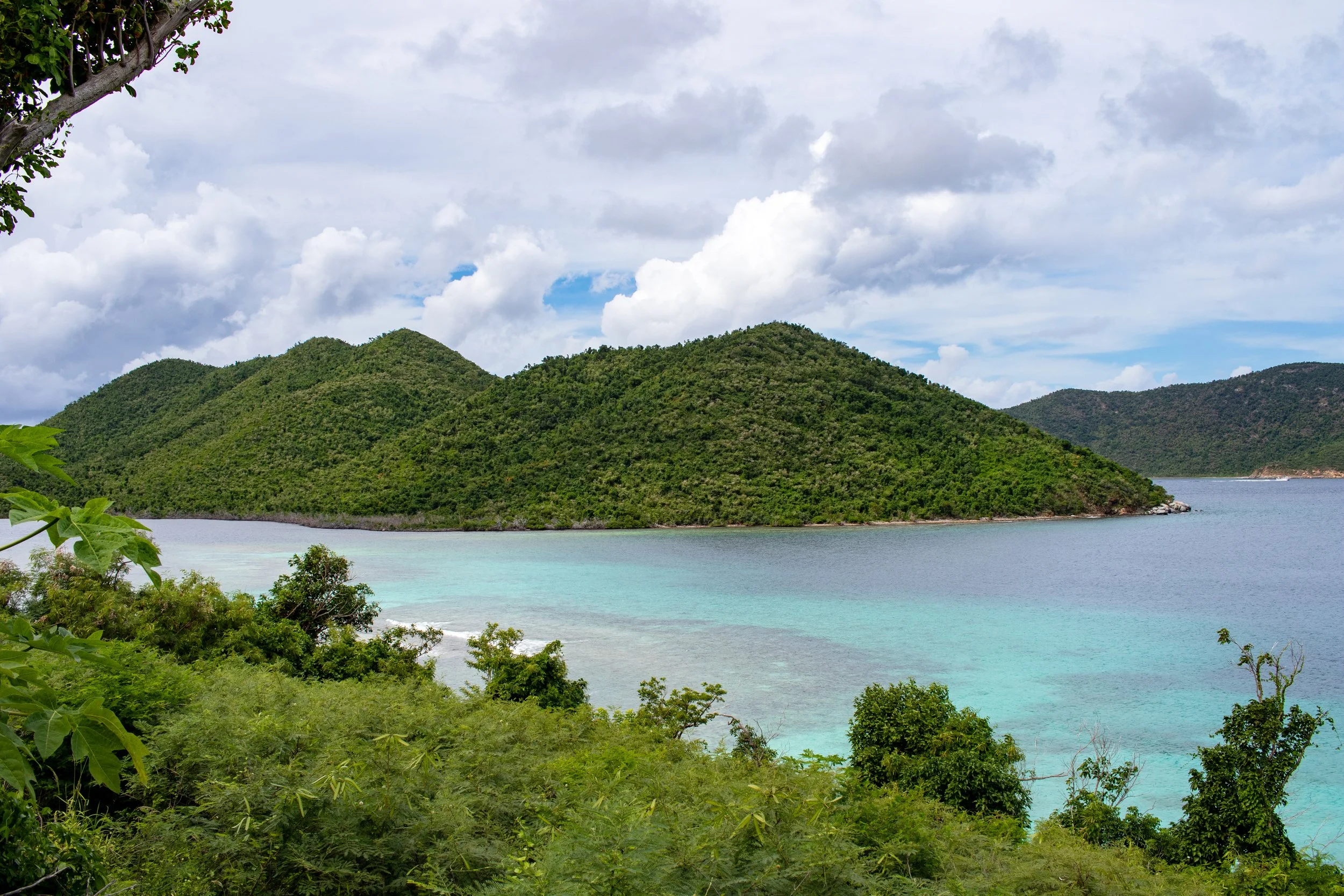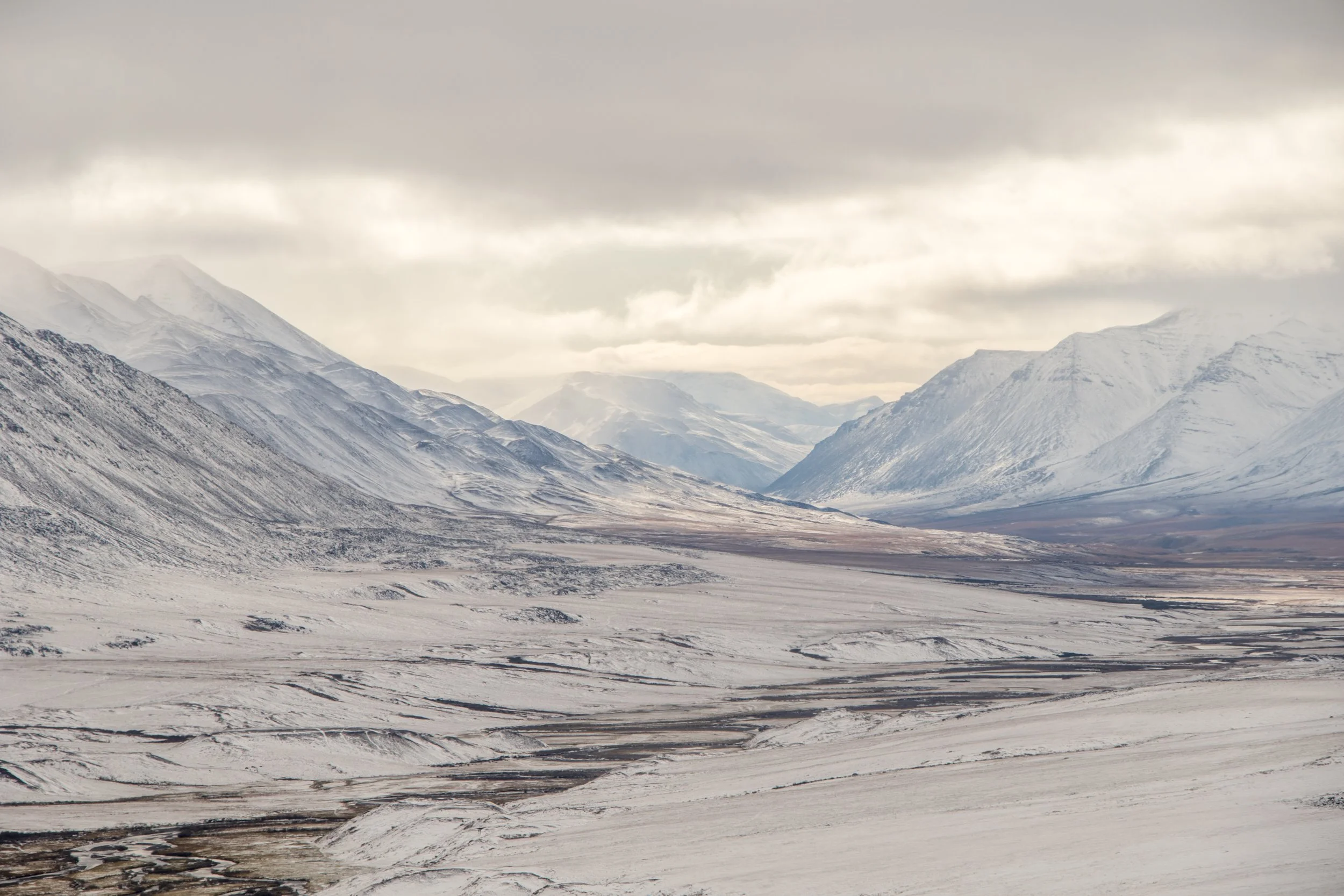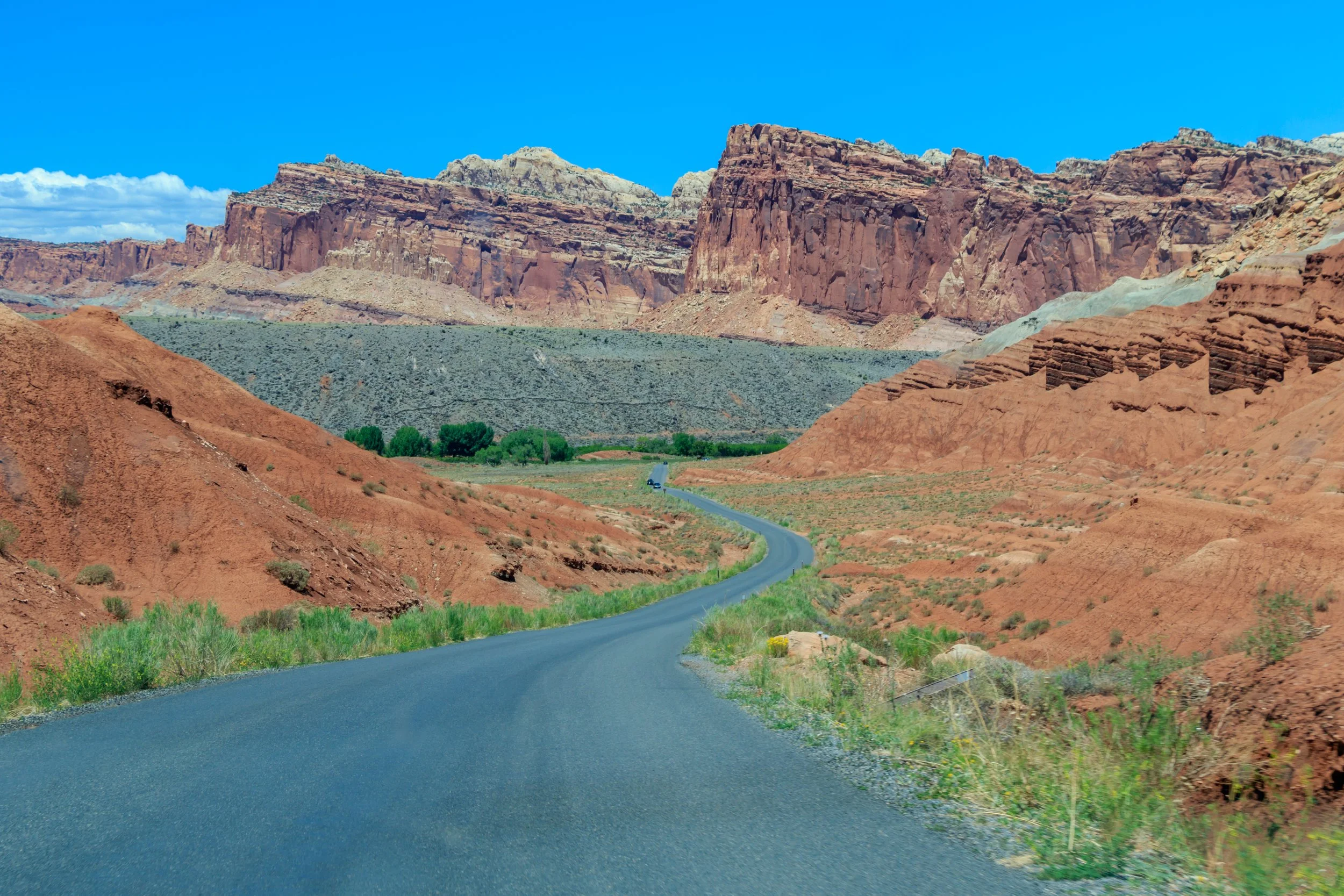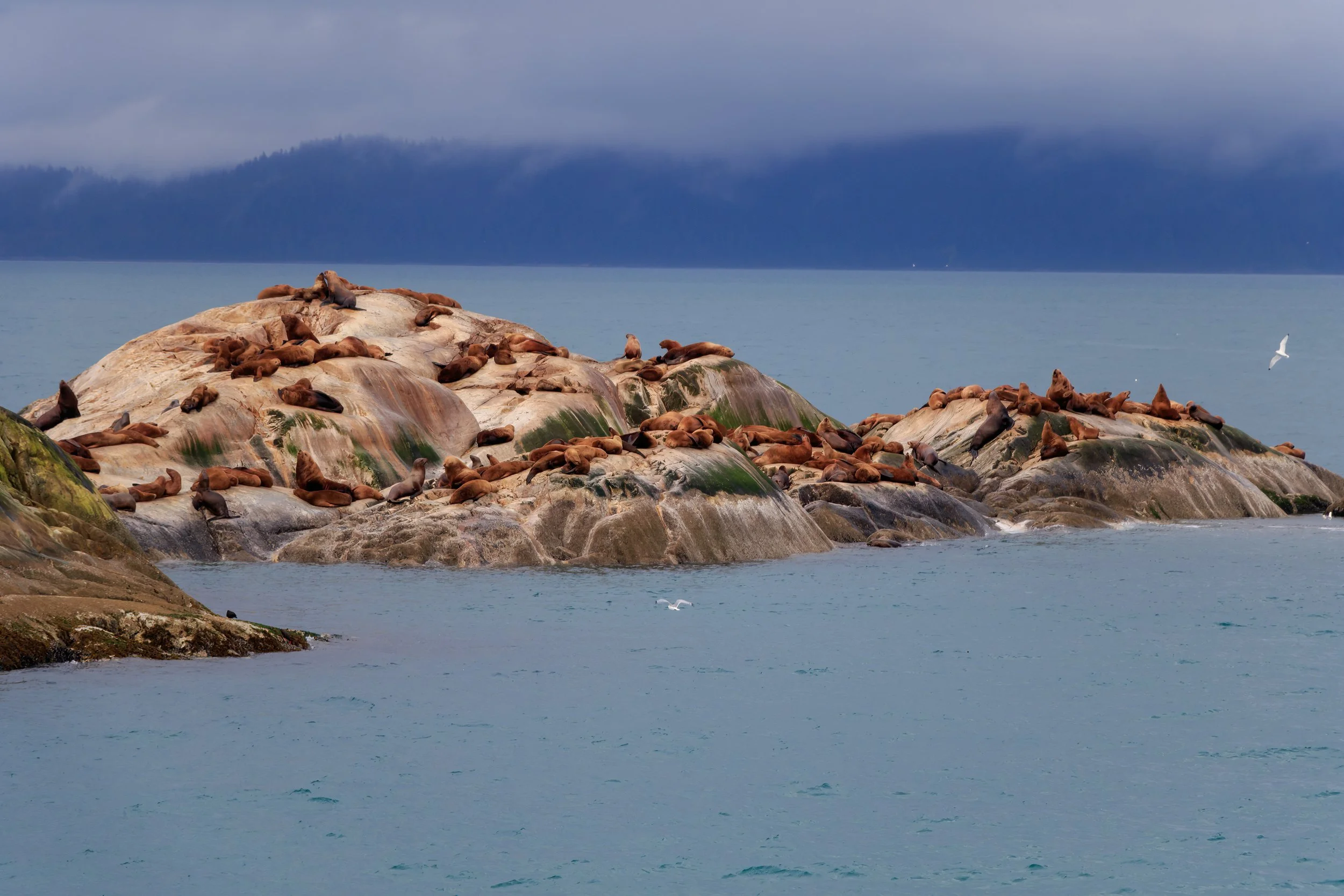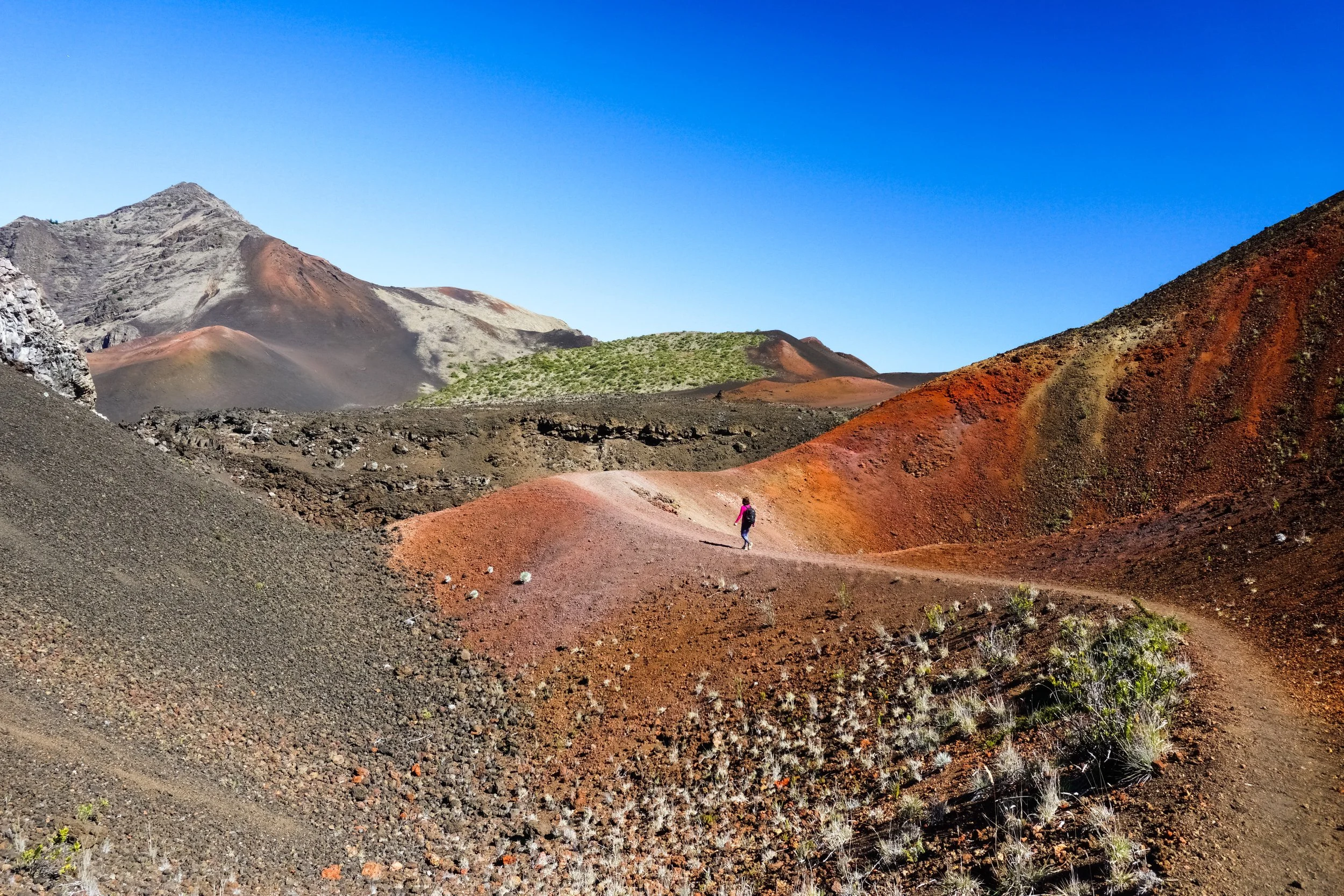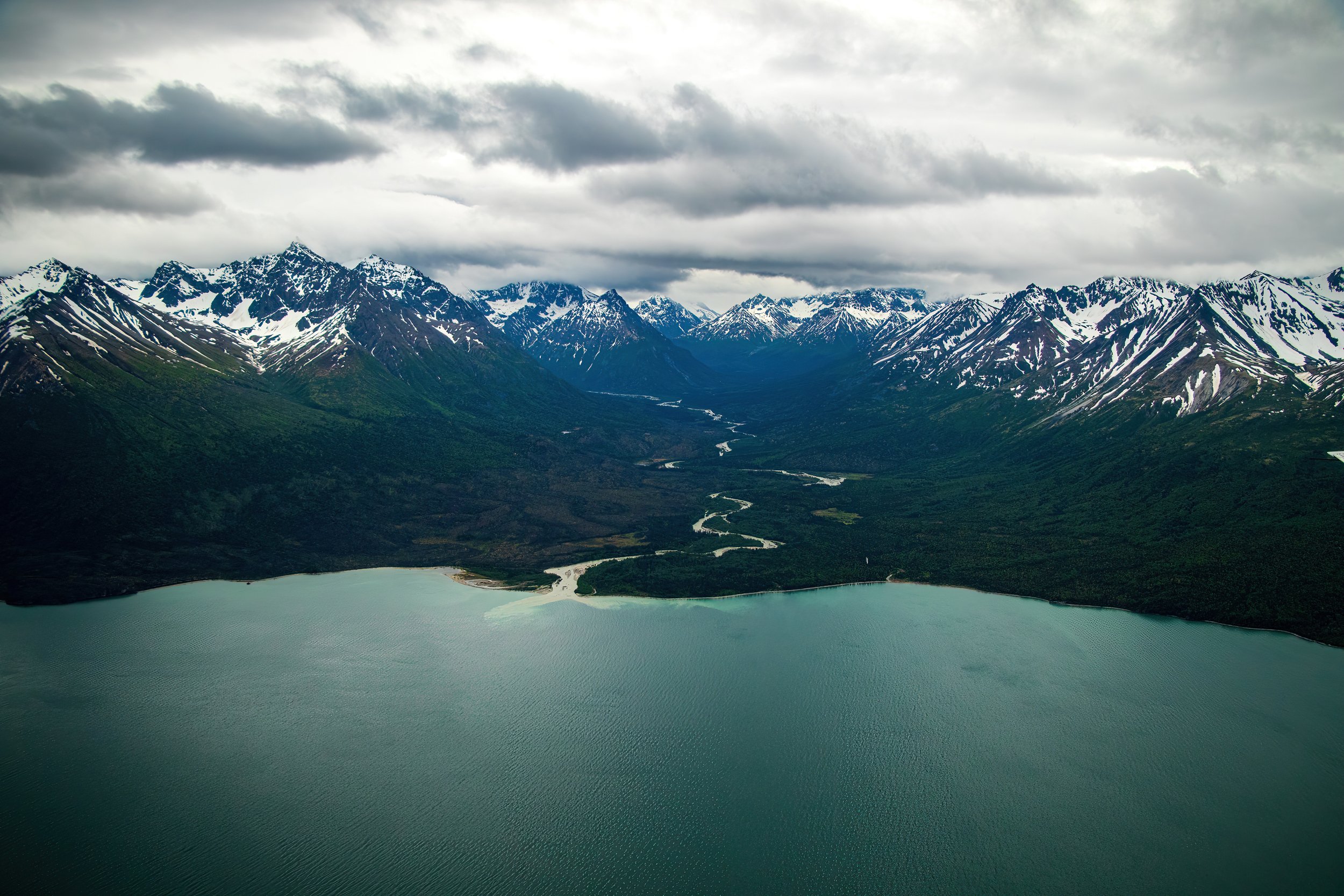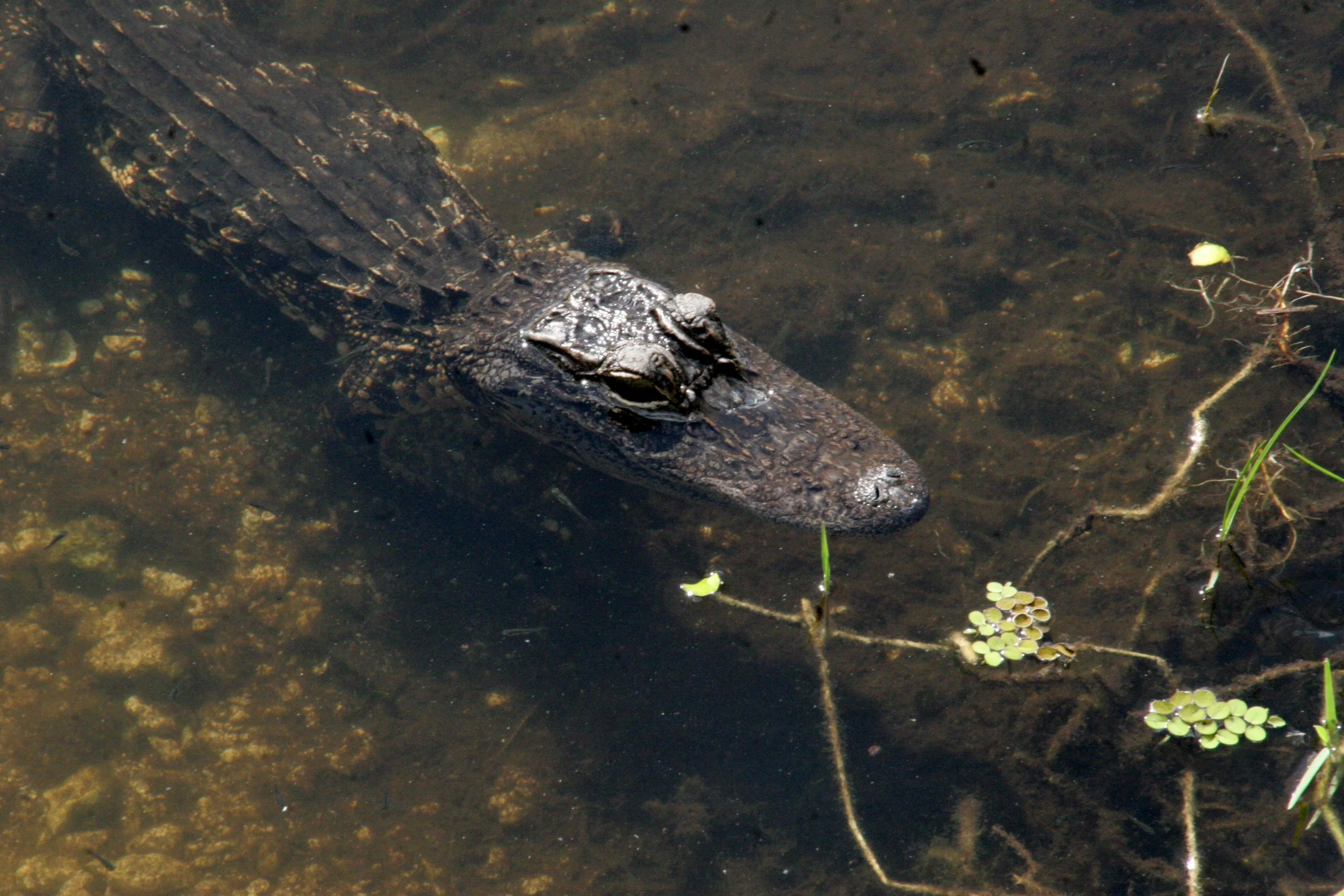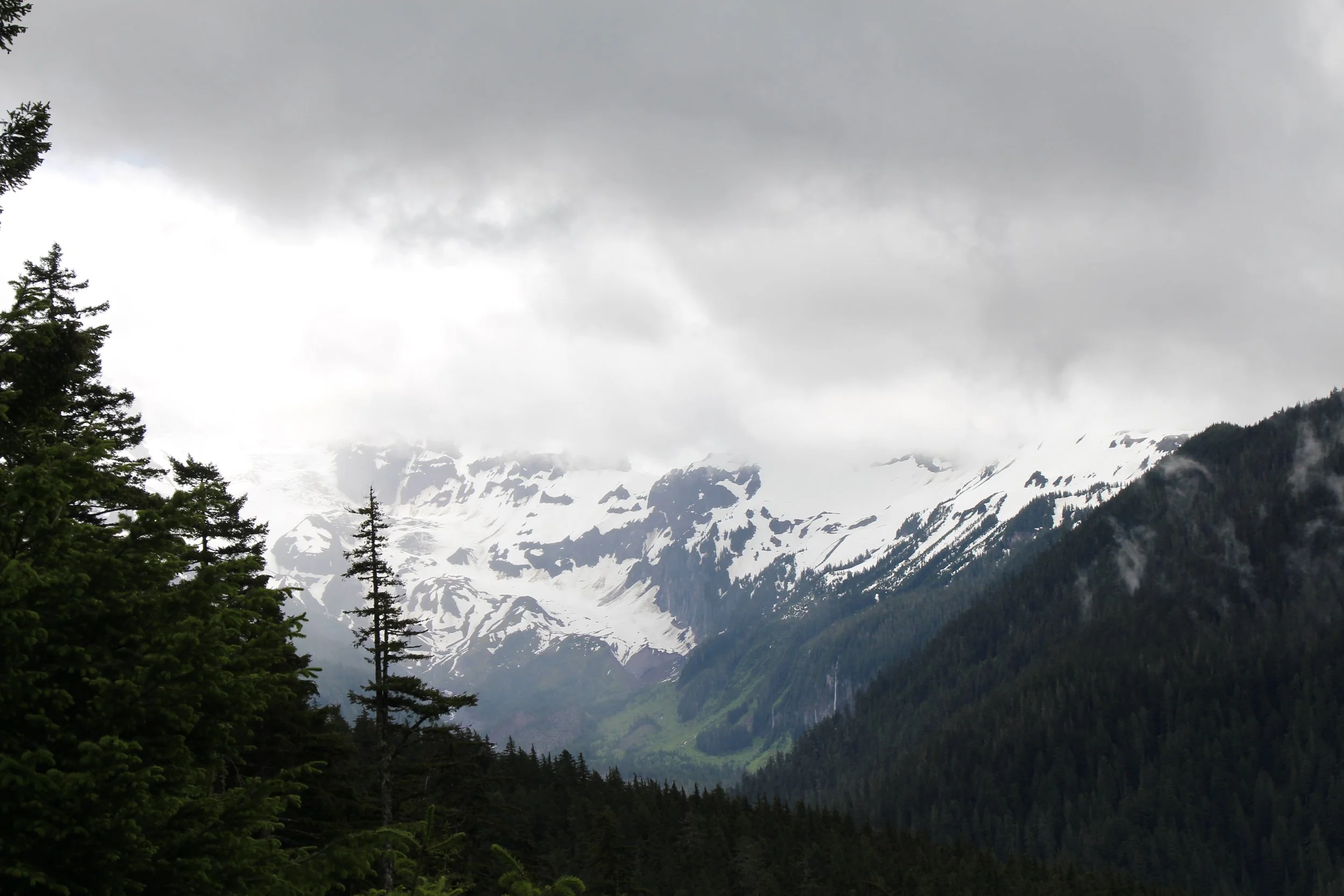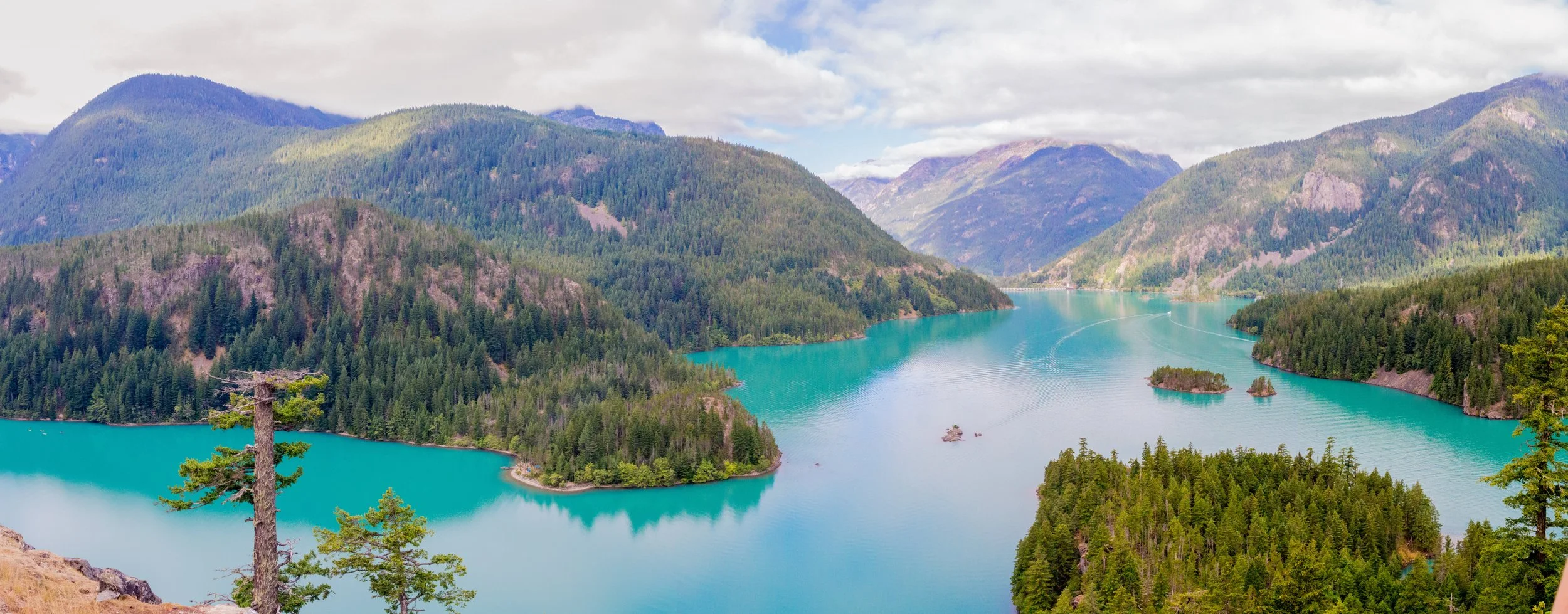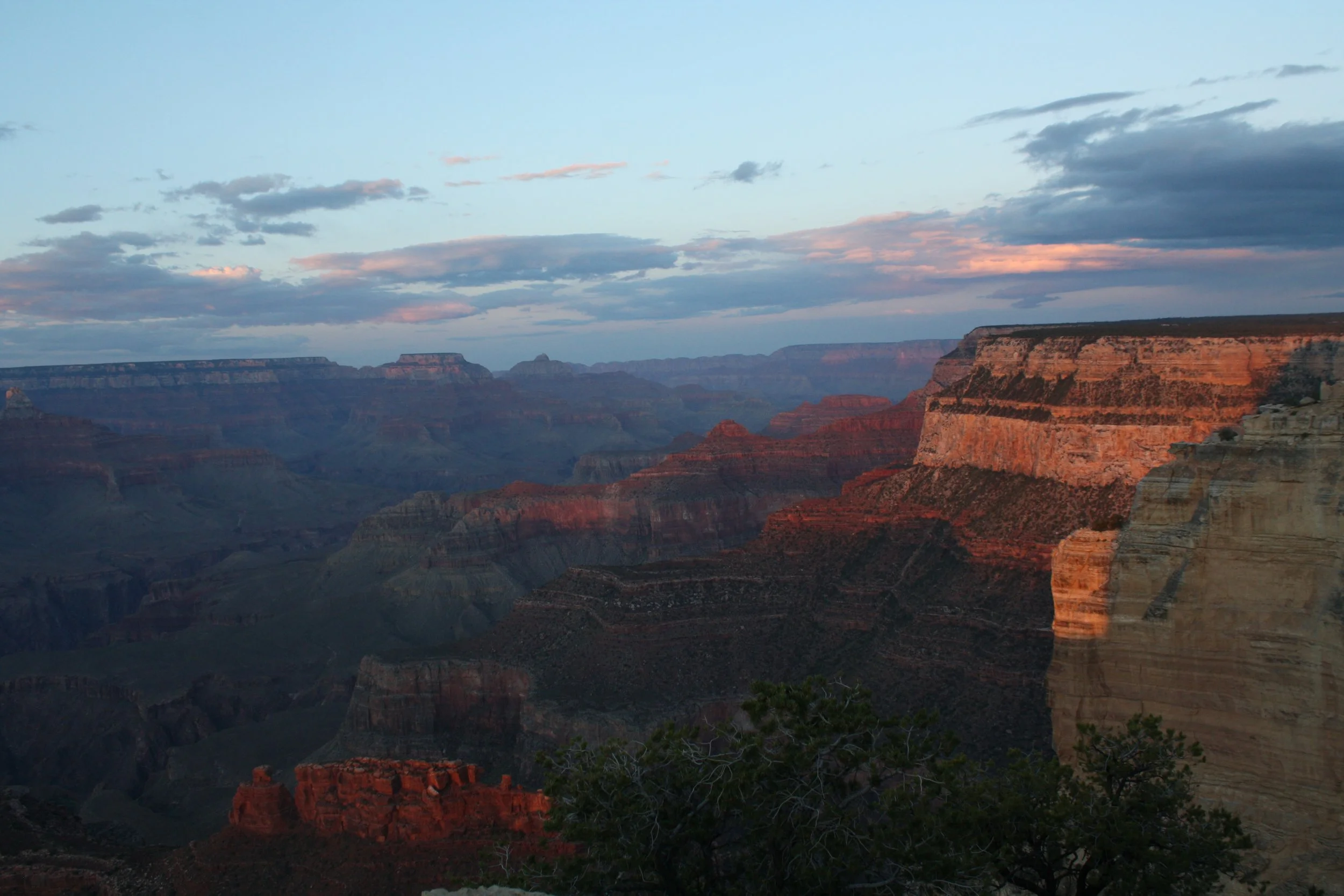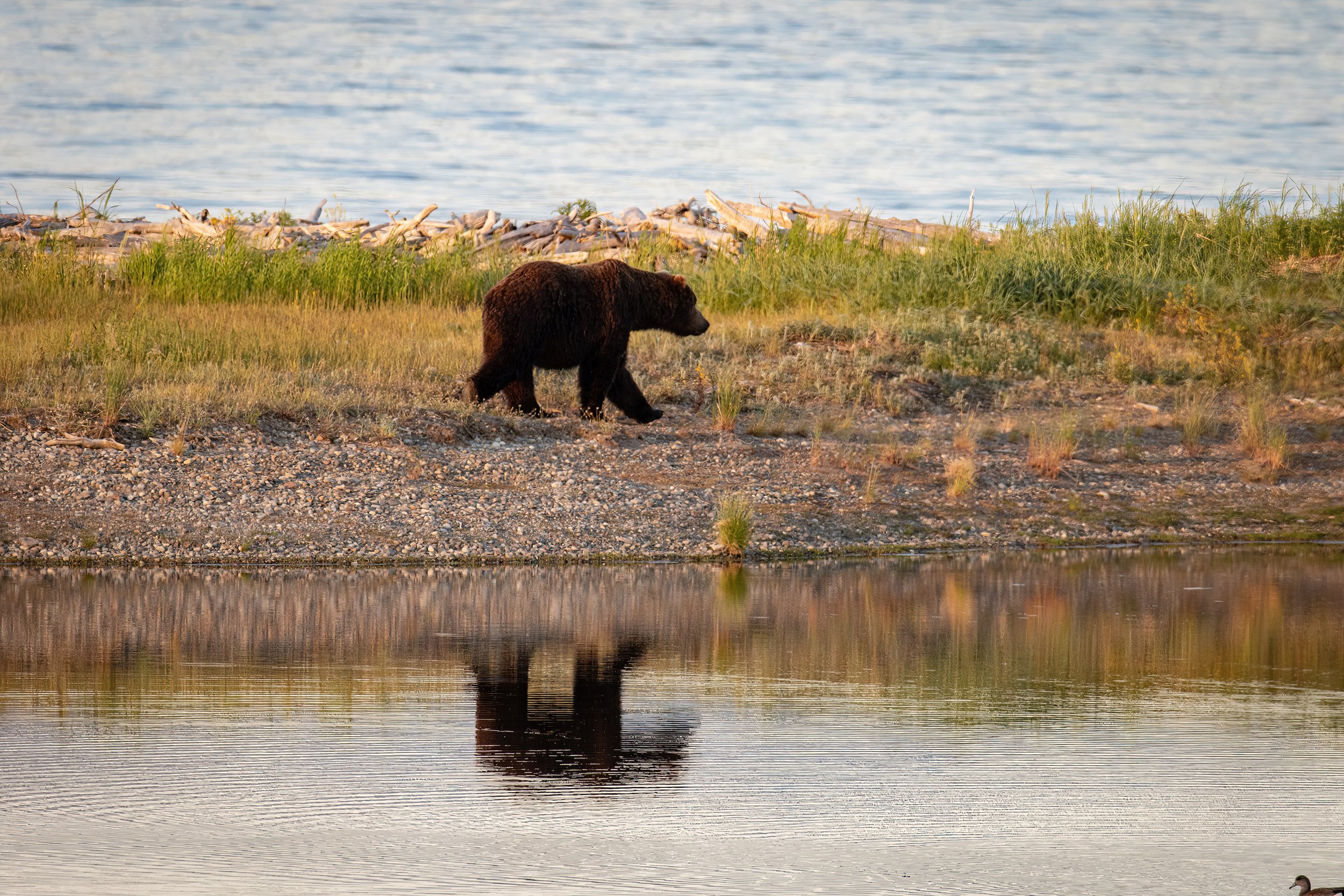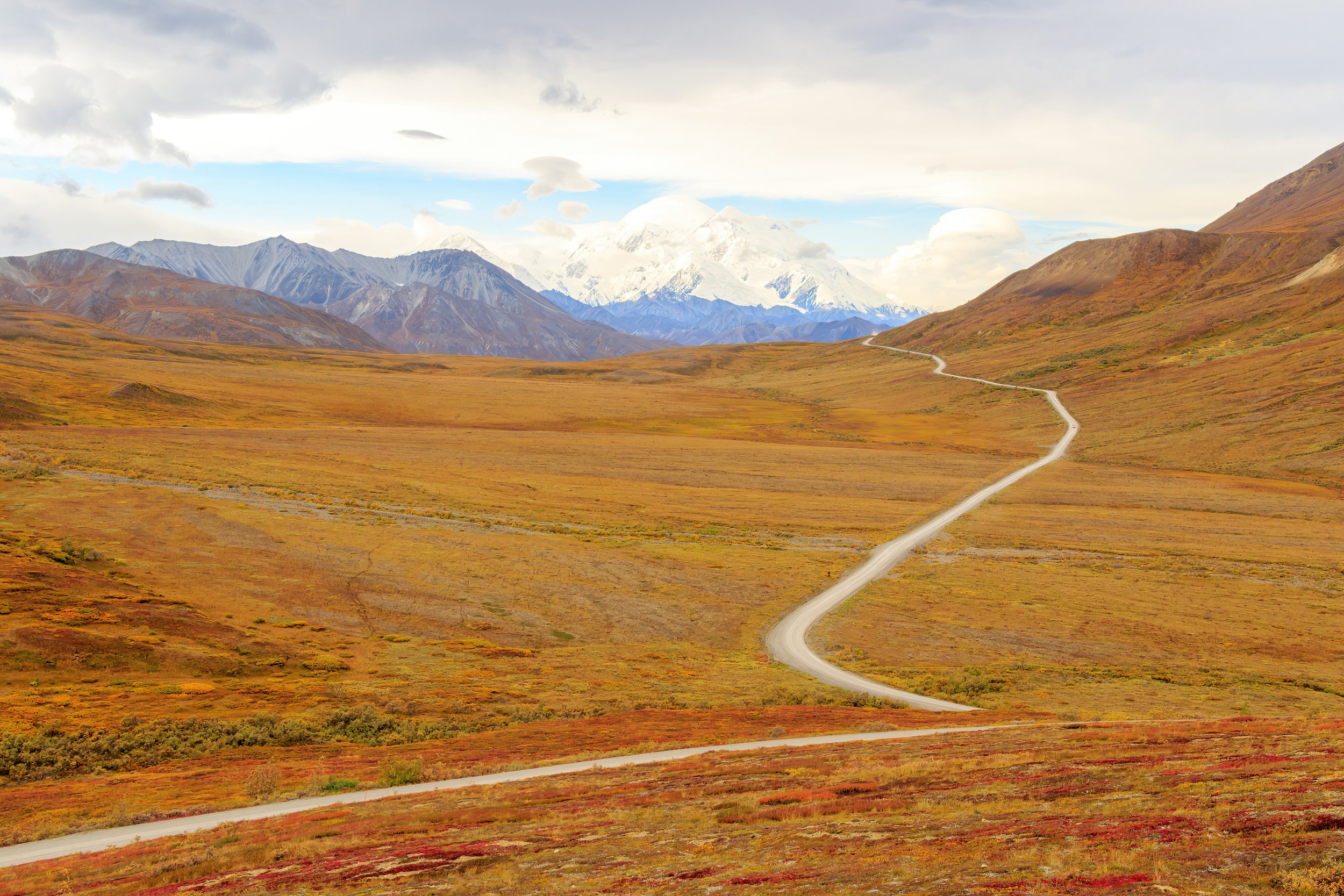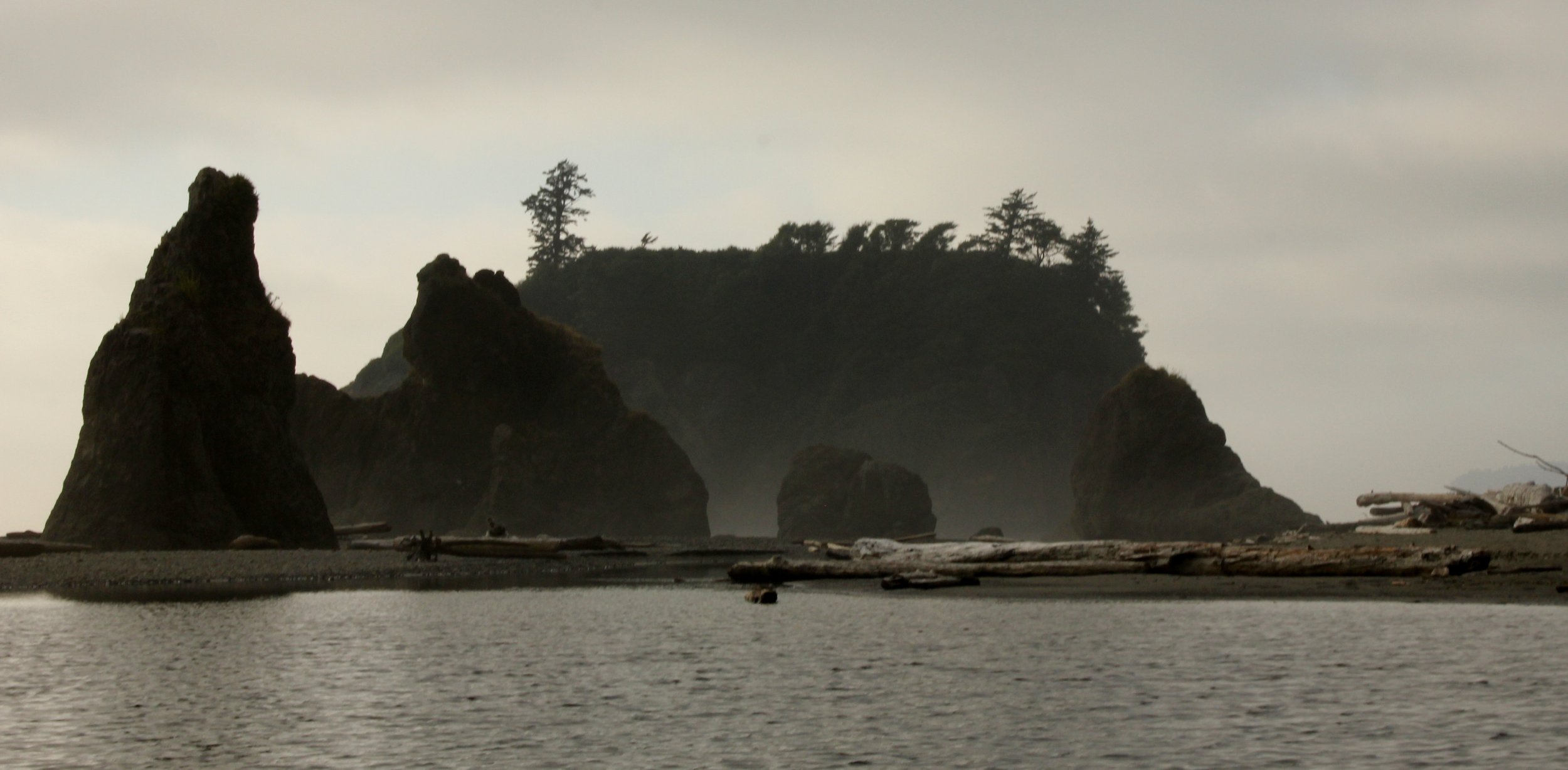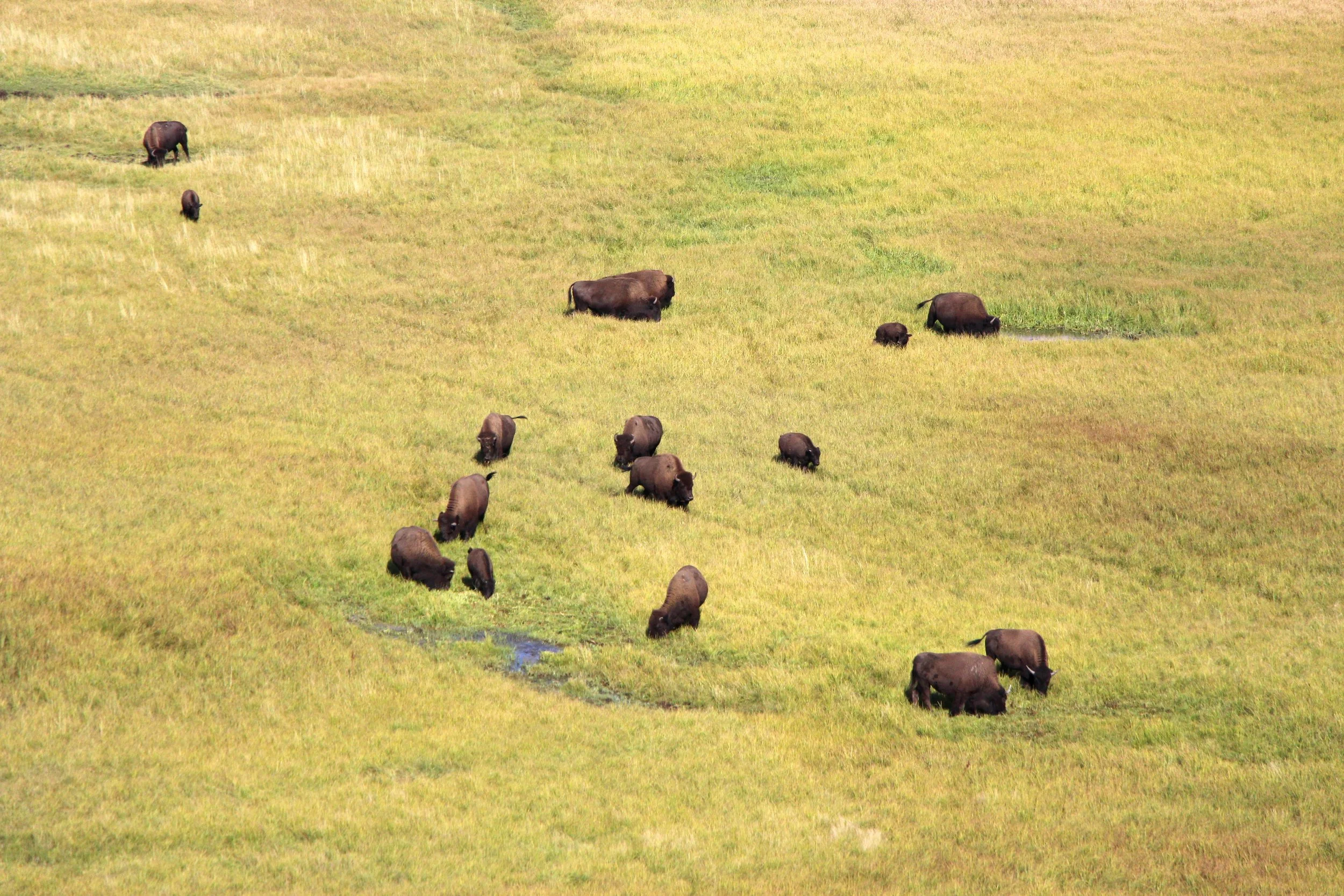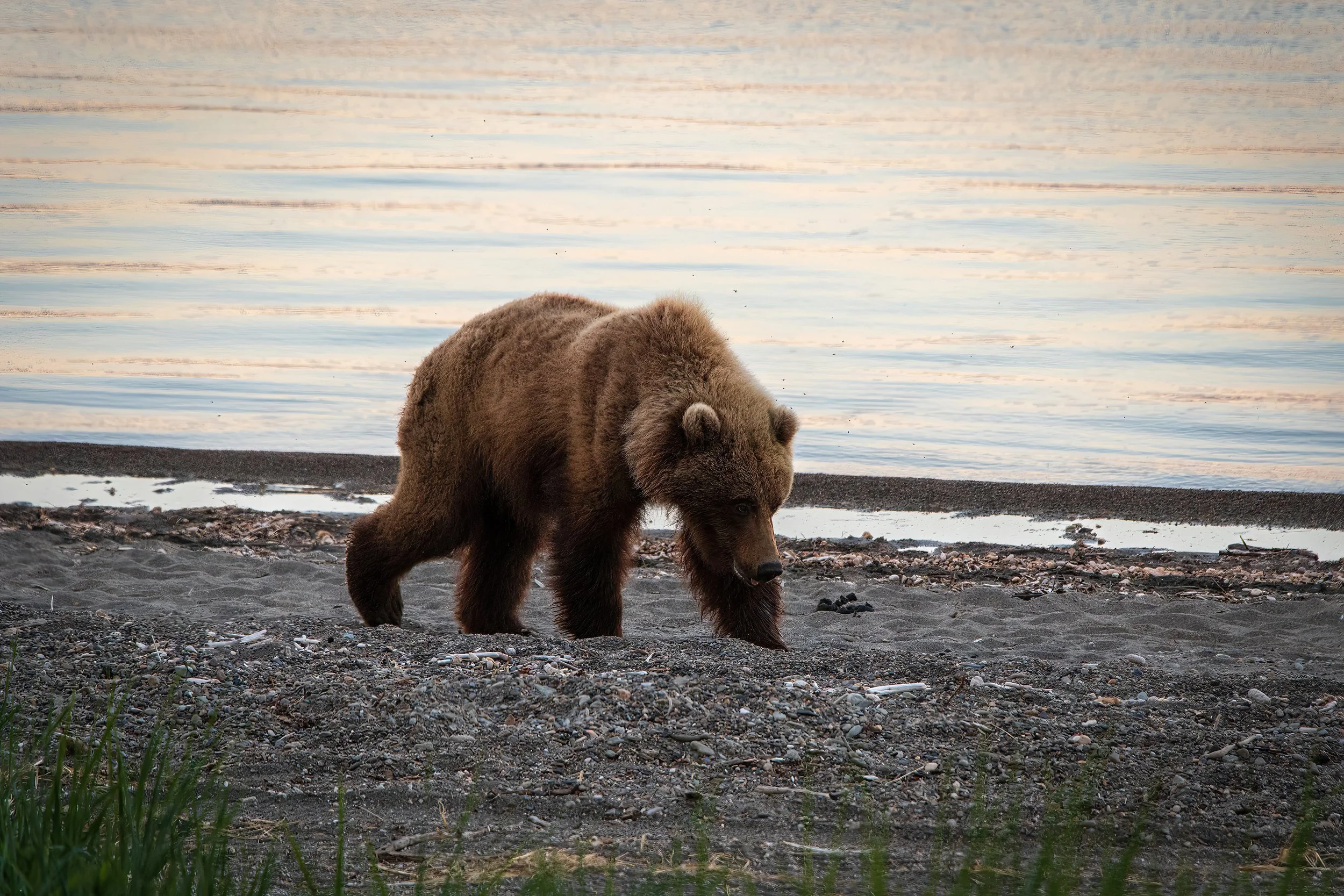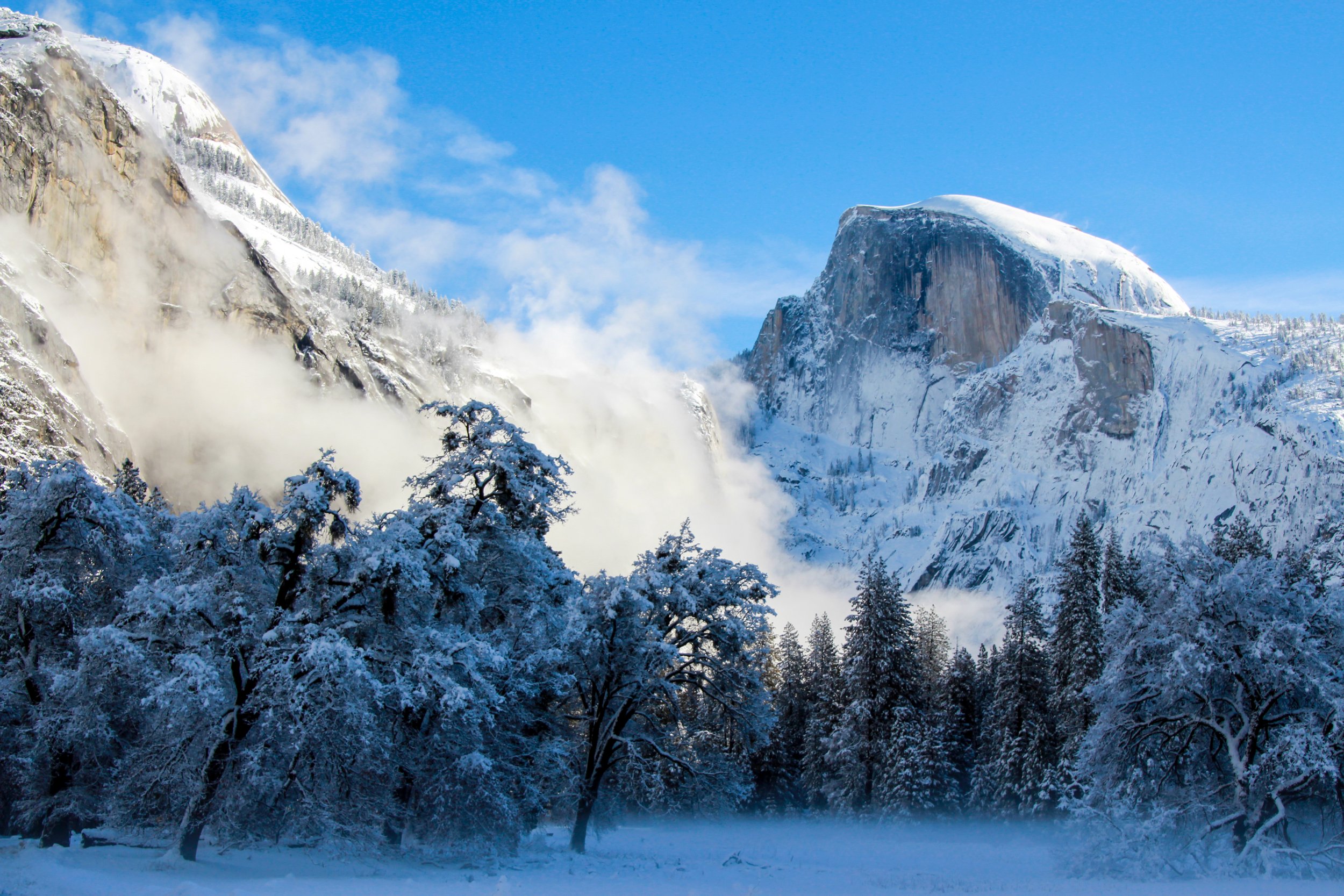Ranking all 63 National Parks in the USA.
I have had a fascination with national for my entire adult life. My first national park, Zion, truly took my breath away. As an east coast city kid, I had never seen or dreamed anything could exist like that on our planet. Over the next 15 years, every vacation day, weekend trip, or road trip took me to a new National Park. Over the course of the years, the number of National Parks I visited increased, and one of my favorite things to do would be to rank these parks amongst friends and fellow enthusiasts.
Obviously, ranking all 63 national parks in entirely subjective. What one person might view as the worst, others might view as the best. Your experience of a national park might depend on your age, the weather, the season, the time you have there, etc. And each and every one of the national parks is unique and offers something special. But after visiting 59/63 of the top National Parks (and taking a lot of video and photos) in the US, I can’t resist. So here are the top 63 national parks in the US!

The bottom of the list, but still full of some amazing Gems. There aren’t any truly bad National Parks, just different levels of greatness.
Parks 63-51
Gateway Arch National Park
Gateway Arch National Park, often criticized as mediocre among the ranks of national parks, presents a paradoxical blend of historical significance and modern limitations. While the iconic Gateway Arch stands as a symbol of westward expansion, the park's small footprint and urban environment limit its ability to provide the vast, untouched landscapes associated with higher-ranked counterparts. The lack of diverse wildlife and ecosystems, coupled with the absence of extensive recreational opportunities, leaves outdoor enthusiasts yearning for more. The park's focus on commemorating history through the Arch and its accompanying museum, while insightful, falls short of the immersive natural experiences many seek in national parks. Furthermore, the urban backdrop and limited camping options detract from the sense of remote adventure found in more prominent parks. Its ranking at 63rd reflects the challenges of balancing historical significance with the traditional expectations of a national park. While Gateway Arch National Park undoubtedly holds cultural importance, its struggle to meet the holistic criteria of a top-tier national park ultimately leaves it in the realm of mediocrity.
Park Size
91 acres
Favorite Feature
The Arch (Come On)
Park Location
St. Louis Missouri
Year(s) Visited
2022
#63
Ranking Rationale: This place is a beautiful monument that really turns St. Louis Skyline into something very special. But therein lies the reason it that is last on this list… it’s a wonderful manmade monument. It really has no business being a national park. But if you can look beyond its technical classification as a national park, it’s a great place for a day trip and one of the most iconic monuments in the United States.
Hot Spring National Park
Hot Springs National Park struggles to capture the grandeur that defines other national parks. While it boasts natural thermal springs with reputed healing properties, the park's limited size and urban setting hinder its ability to provide the immersive wilderness experience characteristic of higher-ranked parks. The historic Bathhouse Row offers glimpses into a bygone era, but the park lacks the dramatic landscapes and diverse ecosystems that draw nature enthusiasts. The absence of extensive hiking trails or iconic natural features dampens its appeal, making it less alluring for avid adventurers. Additionally, the commercial development around the springs can compromise the serene atmosphere sought by visitors seeking solace in nature. Its ranking at 63rd underscores its challenges in competing with the awe-inspiring vistas and recreational opportunities offered by other national parks. While Hot Springs National Park offers unique cultural and therapeutic elements, its overall appeal falls short of capturing the splendor that elevates its counterparts to higher acclaim.
Park Size
5,554 acres
Favorite Feature
Hot Springs Overlook
Park Location
Arkansas
Year(s) Visited
2013
#62
Ranking Rationale: I’ll be honest. This park isn’t for everyone. There are better hot springs resorts out there, but it is definitely unique within the national park system. It’s main draw, the baths, are historic, but not exactly the most beautiful. It’s a unique experience that is one you will be sure to remember, but not a place to spend a long period of time. Perfect place for a road trip stop when driving out west through Arkansas, or to the Ozarks.
Indiana Sand Dunes National Park
Indiana Dunes National Park, though surpassing the perceived mediocrity of Gateway Arch and Hot Springs, still contends with certain limitations that prevent it from ascending higher in the rankings of national parks. While it showcases a unique blend of diverse ecosystems, including lakeshore, dunes, and wetlands, its smaller size and proximity to urban areas diminish the sense of remote wilderness sought by many park enthusiasts. The park's popularity can lead to overcrowding during peak seasons, undermining the tranquility that defines more remote parks. Although the lakeside setting offers recreational opportunities, the absence of towering mountains or sweeping canyons keeps it from reaching the awe-inspiring heights of top-tier national parks. While Indiana Dunes presents a variety of habitats and supports rare species, its overall ecological significance might not match the ecological grandeur of other parks. It’s amazing view of the city, fun trails, and old school vibes make for a fun Chicago getaway, but it lacks a complete and unparalleled national park experience of other more highly ranked parks.
Park Size
15,349 acres
Favorite Feature
Rolling Dunes
Park Location
Indiana
Year(s) Visited
2015, 2016, 2017
#61
Ranking Rationale: This might not be the highest ranked National Park, but it is starting to put some real separation between this and the last 2 on the list. It’s close proximity to Chicago makes it super accessible, and although the views of Chicago are very nice, the views of the power plants going into Lake Michigan take away from a bit of the splendor. If you are looking for a real amazing Great Lakes dune experience, go a bit further north to the Great Bear Dunes for something really special. This place is great, but not even amongst the best dunes on Lake Michigan.
Biscayne National Park
Biscayne National Park harbors an understated allure that distinguishes it within the panorama of national park rankings. Its captivating blend of aquatic wonder, including vibrant coral reefs and vital seagrass beds, offers a distinct and unparalleled marine experience. While its ranking may not afford it center stage, the park's marriage of diverse ecosystems, serene mangrove forests, and waterborne adventures forms an enticing and exceptional environment.
Nestled within its crystalline waters, the park boasts underwater realms teeming with life, where vibrant coral formations and a myriad of marine creatures contribute to its ecological significance. The park's lush mangrove thickets, acting as crucial coastal buffers and vibrant habitats, further enhance its unique character. Notably, the opportunity for kayaking through these tranquil mangrove tunnels adds an extra layer of immersive beauty and discovery.
Though it may not enjoy the same level of recognition as iconic parks, Biscayne's coastal charm fosters a more intimate and contemplative communion with nature, far from the bustling crowds of more frequented destinations. The park's dedication to safeguarding its intricate marine ecosystem, providing educational avenues, and promoting kayaking adventures underscores its pivotal role. The emphasis on conservation and exploration enriches its value. Despite its unassuming prominence, Biscayne National Park's ability to unveil an authentic and secluded window into the aquatic world makes it something very special, even if rated towards to bottom.
Park Size
172,871 acres
Favorite Feature
Mangroves
Park Location
Southern Florida
Year(s) Visited
2012
#60
Ranking Rationale: This is a park with its heart in the right place. Nearly the whole park is in the water and protects a large swatch of Atlantic Ocean right outside the Floriday Keys. It offers some fun kayaking, and, if your a lucky, a chance to spot a manatee or other fun sea life. But unless you are there for the sole purpose of scuba diving, there is better snorkeling and kayaking spots on the Floriday Keys. A very important park for the biodiversity of the USA and Florida, but not the highest on a list of National Parks in the USA.
Congaree National Park
Congaree National Park, often existing in the penumbra of more widely acknowledged destinations, possesses an intrinsic charm that distinguishes it within the spectrum of national park rankings. Its unspoiled floodplain forest, the largest of its kind in the United States, offers an unparalleled and remarkable natural encounter. While its ranking may not position it prominently, the park's blend of diverse ecosystems, elevated boardwalk trails, and thriving wildlife establishes a captivating and singular environment.
Nestled within its lush floodplain, the park showcases towering trees, meandering waterways, and a rich tapestry of plant life that significantly contributes to its ecological significance. The dynamic interplay between the Congaree River and the landscape further augments the park's distinctive character. Notably, the enchanting Cedar Creek, with its sinuous path through the forest, adds an extra layer of visual splendor and serenity.
Although not bestowed with the same limelight as iconic parks, Congaree's intimate setting fosters a more immersive and solitary communion with nature, far from the bustling crowds of busier destinations. The park's commitment to preserving its vibrant forest ecosystem, offering educational avenues, and celebrating Cedar Creek's beauty is integral to its essence. The emphasis on conservation and research enriches its importance. Despite its unassuming prominence, Congaree National Park's capacity to provide an authentic and secluded glimpse into the natural world elevates it beyond the ordinary.
Park Size
26,692 acres
Favorite Feature
Creek full of creepy crawlers
Park Location
Central South Carolina
Year(s) Visited
2020
#59
Ranking Rationale: Congaree is not a park for those looking for grand vistas or fuzzy cute animals. This is a National park for those that embrace slimy and creepy crawlers. Home to gators, snakes, spiders bigger than I’ve seen anywhere else, Congaree is the park that is a swamp lovers dream. It’s unique and gorgeous in its own way but brimming with life you’d find in a swamp. Great for an adventure, but not a park you need to spend a great many days in.
Cuyahoga Valley National Park
Cuyahoga Valley National Park captures a distinct charm that sets it apart within the spectrum of national park rankings. Its mix of lush landscapes, historic sites, recreational opportunities, and the unique addition of a scenic train ride creates a truly enchanting experience. Although its ranking may not position it among the top-tier parks, the park's amalgamation of natural wonders, cultural heritage, and the nostalgia of train travel forms an appealing and unparalleled environment.
Nestled amidst its picturesque river, waterfalls, and rolling hills, the park offers a serene backdrop for a variety of outdoor activities, from leisurely hikes to invigorating bike rides. The restoration of the historic Ohio & Erie Canal adds historical depth, connecting visitors with the region's past. Cuyahoga Valley's adjacency to urban centers distinguishes it, allowing for a nature-infused respite within close proximity to city life without the typical crowds.
The park's distinctive feature, the Cuyahoga Valley Scenic Railroad, further enriches the visitor experience. This train ride offers a nostalgic journey through the park's stunning landscapes, highlighting its unique appeal. Cuyahoga Valley National Park's commitment to preserving its ecological beauty and cultural significance underscores its value. Its role in providing an accessible natural retreat within an urban context, combined with the allure of train travel, is integral. Though it may not bask in the limelight, the park's ability to harmonize history, recreation, natural splendor, and the romance of train exploration elevates it beyond the ordinary, contributing an exceptional piece to the intricate mosaic of the National Park System.
Park Size
32,571 acres
Favorite Feature
Giant Waterfalls
Park Location
Ohio
Year(s) Visited
2016
#58
Ranking Rationale: This is my current home state’s park, and it’s great that Ohio, a state with some of the least amount of protected wilderness in the US, has a national park at all. It’s especially gorgeous in the fall and taking the train through and around the park is something not many other parks can offer. It’s so close to the city, it doesn’t quite feel that sense of adventure you might get from other east coast parks that are a bit further away., but offers some great spots for photos nonetheless.
Wind Cave National Park
Wind Cave National Park, often overshadowed by more renowned counterparts in south Dakota, possesses a hidden charm that sets it apart within the tapestry of national park rankings. Its subterranean wonderland, home to one of the world's longest and most complex caves, offers a unique and captivating experience. While its ranking might not place it at the pinnacle, the park's underground beauty and diverse prairie landscapes combine to create a distinctive allure.
The intricate network of cave passages and unique calcite formations showcases nature's artistry in a mesmerizing way. The park's above-ground features, including rolling prairies and diverse wildlife, contribute to its ecological richness. Though not as widely recognized, the park's more intimate setting allows visitors to explore its wonders away from the tourist throngs of larger parks.
Wind Cave National Park's historical significance as one of the earliest national parks also adds to its unique identity. Its role in preserving both natural and cultural heritage enriches the visitor experience. While it might not be a household name, the park's ability to offer an extraordinary glimpse into the underground realm and its commitment to conservation elevate it above mediocrity, making it a distinctive piece of the National Park System puzzle.
Park Size
33,970 acres
Favorite Feature
Enormous Cave System
Park Location
South Dakota
Year(s) Visited
2016
#57
Ranking Rationale: Wind Cave is the lowest rated cave system on the list, as it doesn’t offer quite the accessibility and adventure as some of the other systems, but it does offer one of the most memorable cave tour around: the candlelight tour, which involves pitch darkness and crawling through some tight spaces to explore it’s confines. It also has some wild bison roaming on the grounds above its caves. A great stop when you are in the Black Hill country of South Dakota, but probably not a main draw if you are in the area.
New River Gorge National Park
New River Gorge National Park, while not as widely acknowledged as some of its counterparts like Shenandoah or Smoky Mountains, offers a unique and compelling experience that stands out in the realm of national park rankings. With its dramatic river gorge, towering sandstone cliffs, and vibrant fall foliage, the park presents a striking canvas of natural beauty. While its ranking might not position it at the very top, the park's blend of outdoor adventure, cultural history, and breathtaking landscapes creates a memorable and distinct atmosphere.
The New River Gorge itself, known for its excellent whitewater rafting and rock-climbing opportunities, sets the park apart as an outdoor enthusiast's haven. Its rich coal mining history adds an extra layer of significance, providing insight into the region's industrial heritage. Despite its relative obscurity, the park's expansive vistas and numerous trails offer a more intimate connection with the outdoors, away from the crowds found in busier destinations.
While New River Gorge National Park might not be a household name (It’s also one of the newer national parks), its ability to offer a diverse range of activities, from adrenaline-pumping adventures to tranquil hikes, highlights its multifaceted appeal. Its ranking serves as a reminder that even lesser-known parks hold treasures waiting to be discovered.
Park Size
7,021 acres
Favorite Feature
Giant Arch Bridge
Park Location
West Virginia
Year(s) Visited
2017, 2021, 2023
#56
Ranking Rationale: For a state with so much natural beauty, it’s surprising it took so long to get a National Park in West Virginia. New River Gorge provides some great trails, and stunning overlooks of a mountain range carved out by a river, with some amazing architectural accomplishments to boot. It’s not the largest park, and there are better East Coast parks, but it is a fun park, especially if you like whitewater rafting of fall leaves, which enhance the beauty of the park every autumn.
Guadalupe Mountains National Park
Guadalupe Mountains National Park, often overlooked in national park rankings by it’s southern sister park Big Bend, holds its own as a captivating destination. With rugged landscapes and towering peaks, such as the highest point in Texas, Guadalupe Peak, the park exudes untamed beauty. While its ranking might not be at the forefront, the park's allure lies in its escape from crowds, offering a more personal connection with nature. Its geological richness, including ancient fossil reefs and dramatic canyons, adds to its distinctiveness. Nestled in a remote location, it provides a serene wilderness experience off the typical tourist circuit. The sparse infrastructure ensures a genuine sense of solitude, allowing visitors to fully engage with the desert vistas and raw landscapes. While not a household name, Guadalupe Mountains National Park's role in preserving geological heritage and offering challenging trails paints it as a remarkable part of the National Park System's diverse mosaic.
Park Size
86,267 acres
Favorite Feature
Guadalupe Peak
Park Location
West Texas
Year(s) Visited
2012, 2022
#55
Ranking Rationale: This is an often overlooked National Park in a hotbed of National Parks around Northwest Texas/Southern New Mexico, largely because of how isolated it is. From El Paso, you can drive for hours on a flat road, seeing the mighty National Park’s mountain from hundreds of miles away. It’s quite impressive to see, and incredibly beautiful up close. It’s a great place for hiking and a day trip, but not as impressive as Big Bend or as unique as a place like White Sands, but a great stop if you are trying to visit the cluster of national parks in the area.
Pinnacles National Park
Pinnacles National Park, while not as widely celebrated as Yosemite, manages to surpass certain limitations, making it a standout in its own right. Nestled within the Gabilan Mountains, the park's unique rock formations, remnants of an ancient volcano, offer a distinctive landscape that sets it apart from other parks. Its relatively smaller size and lesser-known status contribute to a quieter, less crowded atmosphere, allowing for a more intimate connection with nature. While it lacks the grandeur of Yosemite's iconic waterfalls and towering cliffs, Pinnacles compensates with a network of challenging trails and opportunities for rock climbing, appealing to outdoor enthusiasts seeking a different kind of adventure. The park's diverse habitats, including chaparral, oak woodlands, and caves, contribute to its ecological significance, offering a haven for various plant and animal species. Pinnacles' avian residents, including the California condor, add to its allure for birdwatchers and wildlife aficionados. While not positioned at the zenith of the national park hierarchy, Pinnacles' ability to provide unique geological features, biodiversity, and outdoor recreation options firmly places it above the realm of mediocrity, showcasing the distinctive beauty that defines the National Park System.
Park Size
26,685 acres
Favorite Feature
Rock Caves
Park Location
California
Year(s) Visited
2016, 2019
#54
Ranking Rationale: Pinnacles is an impressive National Park that has a low ranking in large part due to the amazingness of the National Parks around California that overshadow it (a common theme for parks in this range). It’s enormous rock structures and trails that take it above and over those rocks makes a fun and unique trail system. That being said, it is not the largest park, and doesn’t offer as much as other parks in the area. If you are in the Monterey area, this is a great detour if it is part of a bigger trip, but not necessarily worth a trip all for itself.
American Samoa National Park
American Samoa National Park, nestled in the heart of the South Pacific, stands as an exquisite gem that defies easy access within the array of national park rankings. With its pristine landscapes encompassing dense rainforests, vibrant coral reefs, and idyllic coastlines, it offers a captivating and unmatched tropical escape. Its ranking may not secure widespread recognition, yet the park's fusion of diverse ecosystems, cultural heritage, and the inherent challenge of reaching its remote shores crafts an environment that is nothing short of remarkable and extraordinary.
Set in an isolated corner of the Pacific Ocean, American Samoa National Park requires a dedicated journey to unveil its treasures, adding an element of adventure to the experience. Enveloped by lush rainforests hosting unique flora and fauna, and guarded by thriving coral reefs sheltering marine life, the park resonates with natural wonders. Cultural richness is deeply embedded in its fabric through the traditions of the local Samoan people.
While it may not command the spotlight, American Samoa's far-flung location endows it with an intimate connection to nature, far removed from the usual tourist crowds. The park's unwavering commitment to conserving its ecological and cultural legacy, despite its logistical complexities, underscores its enduring significance. Despite the challenges of its journey, American Samoa National Park's capacity to offer an unspoiled, culturally profound, and genuinely remote experience firmly establishes its position as a vital and peerless component within the National Park System.
Park Size
8,256 acres
Favorite Feature
Rain Forest Covered Peaks
Park Location
American Samoa
Year(s) Visited
N/A
#53
Ranking Rationale: This is a park I have not visited, so it was something I had to get ratings from others for. For those living outside American Samoa, this is likely the hardest to reach National Park on the list due to how far away this is from everywhere else. But, from those who have gone, they have described it as a rich rainforest with wild and amazing beaches that feel wild and beautiful. It was compared to portions of parts of Hawaii, but is a highlight of visiting American Samoa.
Mesa Verde National Park
Mesa Verde National Park, nestled in the southwestern corner of Colorado, is a captivating testament to ancient human ingenuity and the preservation of cultural treasures. Its stunning landscapes, crowned by dramatic cliff dwellings, showcase the exceptional achievements of the Ancestral Pueblo people who once called this region home. While its ranking may not position it at the very forefront, the park's unique blend of archaeological wonders, expansive vistas, and its role in preserving an intricate cultural legacy establishes an environment that is truly exceptional and enlightening.
Perched on the mesa tops and tucked within alcoves, Mesa Verde's cliff dwellings offer a remarkable insight into the lives and architectural prowess of these ancient inhabitants. The intricate carvings, construction techniques, and the rich history they reveal contribute to the park's distinctive character. Exploring these dwellings provides an immersive journey through time, as visitors step into the past.
While not commanding the same attention as some other national parks, Mesa Verde's cultural significance and the legacy it safeguards foster a deep connection with history. The park's commitment to preserving these archaeological sites, despite the challenges of time and conservation, underscores its enduring value. Mesa Verde National Park's ability to offer a genuine glimpse into the lives of the Ancestral Pueblo people, coupled with its scenic beauty, makes it a truly unique place in the National Park Landscape.
Park Size
52,485 acres
Favorite Feature
Cliff Dwellings
Park Location
Southwest Colorado
Year(s) Visited
2017
#52
Ranking Rationale: Mesa Verde is a beautiful park on top of western Colorado Mountain tops with amazing cliff side dwellings from natives here long before the USA was established. This is a park for history buffs, with some opportunity for hikes as well. Located just outside the “Great 5” of Utah, it’s a good side detour for those hitting up the Utah parks, but would be hard to spend days in just this park alone. There are also similar national monuments and state parks that offer similar history throughout the US, but none quite matching the grandeur of this. Since most of what I put into ranking the national parks had more to do with natural wonders that make the National Park system great, this park is a little lower on the list, but still offers a ton to appreciate.
Kobuk Valley National Park
Kobuk Valley National Park, tucked away in Alaska's remote wilderness, stands as a testament to untouched beauty that defies easy access and challenges adventurers. Its expansive landscapes, featuring massive sand dunes, sprawling tundra, and the iconic Kobuk River, create a breathtaking tapestry of nature's wonders. While its ranking might not place it in the limelight, the park's unique blend of remote isolation, diverse ecosystems, and the arduous journey to reach it crafts an environment that is both extraordinary and humbling.
Situated in Alaska's remote northwest, Kobuk Valley demands a committed expedition to unlock its treasures, inviting a profound sense of adventure. Its colossal sand dunes, believed to be the Arctic's largest, and the majestic Kobuk River bestow a stark contrast that embodies the park's distinctive character. The limited accessibility of this remote jewel adds an element of exclusivity, making the trek to its boundaries an unforgettable part of the experience.
Although it may not draw the same crowds as other national parks, Kobuk Valley's isolation immerses visitors in an intimate and untouched connection with nature, far from the hustle of modern life. The park's dedication to preserving its fragile ecosystems, despite its logistical complexities, underscores its enduring significance. Despite the challenges posed by its remoteness, Kobuk Valley National Park's ability to offer an unspoiled, raw, and genuinely remote encounter cements its place as a vital and irreplaceable component within the National Park System.
Park Size
1,750,716 Square Miles
Favorite Feature
Endless Dunes and Isolation
Park Location
Northwest Alaska
Year(s) Visited
2018
#51
Ranking Rationale: This park is one of the largest by land areas, and also one of the most remote places on earth. Getting here is an adventure, because even if you choose to fly here, you are making multiple connections and getting dropped off on a sand dune, or if you choose to boat here, you are boating for quite some ways before getting to the park. The park itself is fascinating, stretching as far as you can see in every direction, and is as desolate as you can imagine. The scenery is amazing, and if you are lucky (or unlucky) you’ll spot some wildlife like caribou (or bears). It’s a park for National Park completionists and those looking for an adventure, but not one for those who want something more guided, casual, or jam packed.
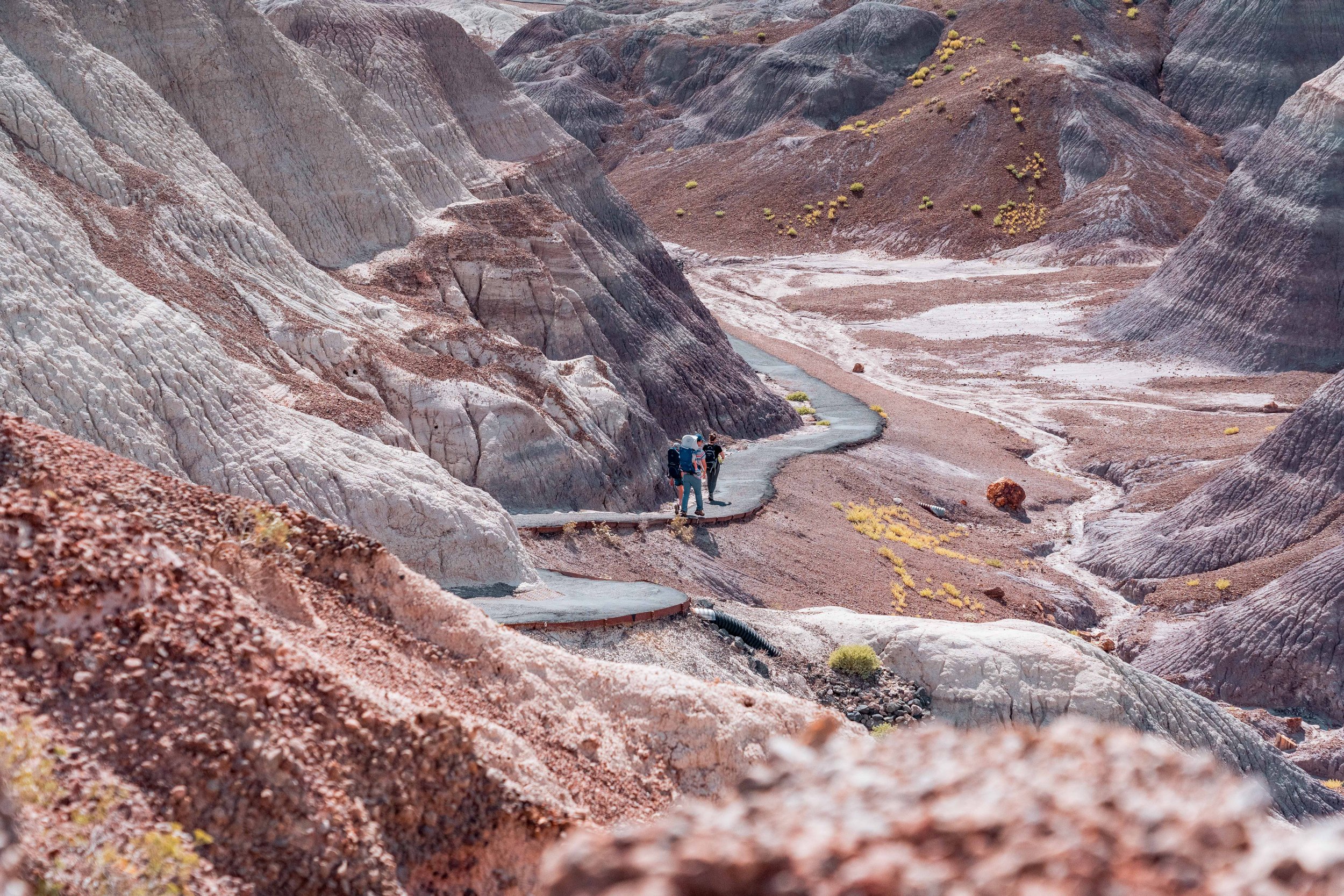
There isn’t really a bad park on this portion of the list. These might not be towards the top, but they are all worth visiting and truly amazing in their own right.
Parks 50-41
Carlsbad Caverns National Park
Carlsbad Caverns National Park’s subterranean landscapes, characterized by colossal chambers adorned with intricate formations, provide an unparalleled canvas of nature's grandeur.
Venturing into Carlsbad Caverns unveils an adventure unlike any other, where visitors can step into an otherworldly labyrinth of caverns that teem with geological marvels. The Big Room, a renowned highlight, spans an incredible expanse, showcasing formations that rival the creativity of human architecture. This unique underground cathedral transports adventurers into an ethereal realm that captures the imagination.
The sheer size of Carlsbad Caverns National Park astonishes, with a vast network of caverns and chambers that stretch beneath the surface, offering boundless opportunities for exploration. The park's commitment to preserving this subterranean realm while fostering learning is truly admirable. From guided tours that reveal hidden wonders to the thrill of witnessing the bats' twilight emergence, the park immerses visitors in an adventure that unfolds within the Earth's very heart.
Carlsbad Caverns' allure lies not only in its grandeur, but in its distinctiveness as a realm hidden from view. Its beauty, formed through eons of geological processes, presents an astonishing sight that captivates the senses. Amidst the underground formations, one can't help but marvel at the delicate balance between time and nature's artistic hand.
Carlsbad Caverns National Park's blend of adventure, unique subterranean wonders, expansive size, and unparalleled beauty make it a jewel within the National Park System. Its invitation to explore an underground world evokes a sense of awe, unveiling nature's hidden masterpieces that inspire appreciation for the marvels that lie beneath our feet.
Park Size
46,766 acres
Favorite Feature
Bats exiting at sunset
Park Location
New Mexico
Year(s) Visited
2012
#50
Ranking Rationale: BATS! If that first word scared you, stay away, but if the idea of seeing and hearing tens of thousands of bats come out of a cave at sunset intrigues you, this is the place for you! No other cave on our list has this kind of relation to bats as Carlsbad Caverns. The caves itself are impressive, though the hiking is limited, and that freedom of exploration is what holds back a lot of the caves on this list, but it feels especially limited in exploration compared to Wind Cave or Mammoth, and offers less above the caves than the other two.
Mammoth Cave National Park
Descending into Mammoth Cave unveils a world of enchanting exploration, where adventurers traverse an underground maze adorned with intricate stalactites, stalagmites, and awe-inspiring chambers. The vastness of this underground expanse is astonishing, with an intricate network of passages that captivate the imagination. The park's dedication to preserving this subterranean wonderland while fostering learning is commendable.
Mammoth Cave's allure resides in its unparalleled size and its role as a living museum of geological artistry shaped over eons. The intricate formations and pitch-dark passages present an awe-inspiring sight that reveals the Earth's history through its sculptures. Amidst the darkness, one can't help but be humbled by the enduring forces of nature that created this mesmerizing masterpiece.
Mammoth Cave National Park's amalgamation of underground exploration, unique subterranean beauty, expansive dimensions, and preservation efforts positions it as a treasure within the National Park System. Its invitation to delve into the secrets of Earth's depths evokes a sense of wonder, unearthing nature's hidden wonders that inspire reverence for the marvels that lie beneath the surface.
Park Size
54,016 acres
Favorite Feature
Neverending Caves
Park Location
Kentucky
Year(s) Visited
2017
#49
Ranking Rationale: Another cave, though this is one that rises above the rest. Part of a cave system that stretches hundreds of miles, these caves truly are Mammoth, and offer plenty of options to explore the cave system around its park. The onsite cabins and above ground trails through the Kentucky forest are especially beautiful in the fall. Caves are a feature of many national parks (Sequoia, Great Basin, and more) that aren’t the main draw that put parks dedicated to just caves a little lower down the list, but if you want to dive into caves (or sperlunk) than this is the cream of the crop.
Theodore Roosevelt National Park
Theodore Roosevelt National Park stands as an embodiment of adventure and untamed beauty, drawing adventurers into a landscape that distinguishes it as an extraordinary and captivating national park. Its rugged terrains, punctuated by colorful badlands, present a unique canvas of nature's splendor. With its focus on exploration, conservation efforts, extensive size, and distinctive charm, Theodore Roosevelt National Park offers an experience that blends excitement and enlightenment.
Exploring Theodore Roosevelt National Park is an immersive adventure, where visitors delve into a dynamic landscape shaped by time and the elements. The striking badlands, a distinctive hallmark, paint a vivid picture of nature's artistic hand, with layers of vibrant rock forming a geological masterpiece. The park's commitment to preserving this rugged wilderness while facilitating understanding is both commendable and crucial.
The allure of Theodore Roosevelt National Park lies not just in its vastness but in its inherent uniqueness as a testament to the rugged beauty of the Great Plains. Its expansive size encompasses diverse ecosystems and offers endless opportunities for exploration. The landscape's breathtaking beauty, sculpted by the forces of nature, evokes a sense of awe that captures the heart.
Theodore Roosevelt National Park's fusion of adventure, distinctive landscapes, extensive dimensions, make North Dakota’s only National Park a worthy stop.
Park Size
70,446 acres
Favorite Feature
Badlands mixed with grass
Park Location
North Dakota
Year(s) Visited
2016
#48
Ranking Rationale: Theodore Roosevelt National Park seems very much like a smaller, more green version of the Badlands, with a bit less ability to explore. That is not to say that this park is bad, or devoid of beauty, quite the opposite. Wild Bison, Horses, and prairie dogs are everywhere here against the colorful painted backgrounds of the badlands with a bit more greenery mixed in than the Badlands, but offers less trails and camping options, and is quite a bit smaller than the Badlands, which one ups this park just south in South Dakota. Worth a stop on a trip out east/west and a detour, but not a multi-day park to visit.
Great Sand Dunes National Park
Its landscapes, from towering dunes to the rugged Sangre de Cristo Mountains, create a distinctive stage for nature's enchanting masterpiece. With its mix of mesmerizing encounters, wind-carved wonders, and a tapestry woven with the allure of the tallest dunes in North America, Great Sand Dunes National Park crafts an experience that seamlessly blends awe and exploration.
Venturing into Great Sand Dunes leads explorers into a realm where the massive dunes seem to touch the sky, an illusion created by the powerful winds that shape the landscape. The park's allure lies in the dynamic dance between earth and air, as the sand shifts and undulates like a living entity. The chance to ascend these golden giants, the wind sculpting their contours, offers a unique perspective on the boundless power of nature.
The park's significance reaches beyond its sandy expanse, delving into the juxtaposition of these wind-formed dunes against the rugged backdrop of the Sangre de Cristo Mountains. The landscapes not only hold the stories of the wind but also reflect the harmonious interplay between two distinct worlds. The park's embrace of the elements, from the windy sand to the lofty peaks, provides a canvas for exhilarating experiences.
Park Size
107,345 acres
Favorite Feature
Climbing the Dunes
Park Location
Central Colorado
Year(s) Visited
2017
#47
Ranking Rationale: In the mountains of Colorado, which themselves are beautiful, these stick out as something incredibly unique and unexpected. The dunes themselves are enormous, and stretch on for miles, creating a visual contrast to the rugged mountains in the background. It’s perfect for a day of exploring and climbing on your own accord, though be prepared for a sand rash on a windy day as the sand can get everywhere and pelt you all over your body. We are really starting to enter another tier of park now, and it’s no longer a matter of if the park is amazing or not (these really are), but about putting them into context of the rest of the national parks in the system.
Dry Tortugas National Park
With its mix of captivating encounters, marine marvels, and a tale woven with maritime history and the mystique of this remote sanctuary, Dry Tortugas National Park conjures an experience that seamlessly intertwines wonder and exploration.
The journey to Dry Tortugas from Key West on a boat adds an extra layer of excitement, as adventurers traverse the open waters, watching the distant horizon transform into an enchanting oasis. Venturing into Dry Tortugas leads explorers to turquoise waters cradling the historic Fort Jefferson, perched on an island amid the sea. The park's fascination arises from its unspoiled marine wonders and the historical legacy etched within the fort's walls. The chance to snorkel amidst vibrant coral reefs, where marine life thrives in its natural domain, unveils an underwater world of unparalleled beauty.
Dry Tortugas' significance reaches beyond its marine marvels, delving into the maritime history that resonates within the fort's ancient architecture. The landscapes not only harbor the secrets of a bygone era but also mirror the delicate equilibrium between humanity and the untamed. The park's remoteness adds an aura of exclusivity, allowing visitors to immerse themselves in a sanctuary that feels worlds apart from Key West.
Park Size
64,701 acres
Favorite Feature
Fort Jefferson
Park Location
Florida Keys
Year(s) Visited
2014
#46
Ranking Rationale: For probably the park with the most amount of water out of any on this list, the name doesn’t quite fit, but this park offers a Caribbean island beauty just off the coast of Key West. Picture a fort built off a FLorida Key, with the crystal clear water and bright Florida sun, but without a Hard Rock Cafe or people to bug you. That’s what this place is. The snorkeling here is some of the best in the USA, and if you are lucky enough to get a chance to stay here overnight, jump on that opportunity, because it is one of the best camping experiences in any national park out there. It’s not very big, and doesn’t offer a ton of hiking, but the experience is top notch and worth a trip to Florida Keys to see.
Petrified Forest National Park
Compelling encounters, geological wonders, and a tapestry interwoven with the legacy of the Navajo people and the allure of the park's historical landmarks, including its connection to Route 66, Petrified Forest National Park creates an experience that seamlessly blends awe and exploration.
Exploring Petrified Forest leads adventurers through a realm where vibrantly colored badlands frame the preserved remains of ancient trees transformed into stone. The park's allure lies in its unique fusion of geological marvels with the layered history etched into the land, along with the echoes of travelers along Route 66. The opportunity to stroll amidst these time-honored giants, transmuted by eons into gleaming treasures, invites a journey through both the passage of ages and the artistry of nature, along a path once trodden by generations of travelers.
Petrified Forest's significance extends beyond its geological wonders, delving into the legacy of the Navajo people and the park's historical landmarks, including the historic Painted Desert Inn along the iconic Route 66. The landscapes hold not just a testament to nature's craftsmanship but also a reflection of cultural heritage spanning centuries, shaped by the park's connection to this storied road.
Park Size
221,390 acres
Favorite Feature
Blue Mesa Trail Badlands
Park Location
Northwest Arizona
Year(s) Visited
2022
#45
Ranking Rationale: This is one of many examples of national parks who’s name is so on the nose that it sometimes takes away from the rest of what this national park has to offer. Yes, the petrified wood scattered throughout this park is plentiful and impressive, but what I think the real star of the show here is the painted badlands. This place has some of the most colorful landscapes of any national park on this list. It’s a bit out of the way, not really near any other national park on this list, but is near some impressive national monuments. Worth a stop by this old route 66 park and a place where you can easily spend a day or 2 exploring its nooks and crannies.
Saguaro National Park
Saguaro, a park with mesmerizing encounters, iconic flora, and a tapestry woven with the desert's magic and the towering presence of saguaros, Saguaro National Park crafts an experience that seamlessly marries awe and exploration.
Exploring Saguaro leads adventurers through a realm where the arid beauty of the desert converges with the unique spectacle of towering saguaro cacti. The park's allure lies in its striking contrast, where the relentless desert sun contrasts with the stoic endurance of these iconic giants. The invitation to wander amidst these ancient sentinels, each bearing the scars of time and the stories of generations, offers an opportunity to connect with a landscape that thrives against all odds.
Saguaro's significance extends beyond its cacti, inviting visitors to embrace the vibrant hues of the desert and the rich diversity of its inhabitants. The park's ecosystems, adapted to life in a challenging environment, tell a story of survival and adaptation that resonates with the resilience of the natural world. The park's beauty is accentuated by the warm glow of the desert sunsets, offering a picturesque backdrop to the desert's daily dramas.
Park Size
92,867 acres
Favorite Feature
The Saguaro’s at Sunset
Park Location
Arizona
Year(s) Visited
2010
#44
Ranking Rationale: Located just west of Tucson, Saguaro is a relatively easy to access national park compared to some of the more remote National Parks of Arizona. The cactus the park is named after is impressive, and the hills surrounding it offer some easy dessert escape with the opportunity for nice wildlife and bird viewing. All that said, the west coast is full of even more amazing national parks, which is why this is on the bottom half, but still part of a strong group of National Parks that call Arizona home.
Black Canyon of the Gunnison National Park
A park with intoxicating views, towering walls, and a tapestry woven with the power of the Gunnison River and the raw splendor of its canyons, Black Canyon of the Gunnison National Park crafts an experience that seamlessly marries reverence and exhilaration.
Exploring the Black Canyon leads adventurers through a realm where the sheer magnitude of rock formations contrasts with the delicate dance of the Gunnison River. The park's allure lies in its imposing vistas, where walls of rock drop precipitously into the depths below, creating a breathtaking landscape of contrast. The invitation to hike along the rim or venture into the heart of the canyon unveils an encounter that awakens the senses to the scale of geologic time.
Black Canyon's charm extends beyond its imposing landscapes, delving into the realm of geological history and the vibrant ecosystems that call its walls home. The ancient rock layers reveal a story that spans millions of years, and the myriad flora and fauna that have adapted to this challenging environment add depth to the narrative. The park's isolation from the bustle of urban life allows for a deep connection to the natural world and the celestial ballet above.
Park Size
30,799 acres
Favorite Feature
Canyon overlook at sunset
Park Location
Central Colorado
Year(s) Visited
2017
#43
Ranking Rationale: This is probably the lowest ranked canyon on the list, but that does not mean that this is not an impressive park. It’s canyon is truly spectacular, and much different (and narrower) than the grand canyon, with an especially impressive view at sunset. It offers substantially less hiking and adventure than a Canyonlands or Grand Canyon national Park, but is an amazing addition to the collection of National Parks in Colorado, and offers something very different than anything else in the area.
Great Basin National Park
Great Basin National Park, a remote park with intricate cave systems, unique flora, and a tapestry woven with the desert's allure and towering peaks. Great Basin National Park crafts an experience that marries solitude and exploration.
Exploring Great Basin leads adventurers through a realm where the desolate beauty of the desert converges with the grandeur of towering peaks. The park's allure lies in its contrasting terrains, where high alpine landscapes give way to ancient cave systems adorned with intricate formations. The invitation to explore these subterranean wonders, where life thrives in the darkness, adds a layer of intrigue to the experience.
Great Basin's charm extends beyond its landscapes, delving into the realm of the rare and the unique. The ancient bristlecone pine trees, gnarled and resilient, stand as silent sentinels of time, adding an air of ancient wisdom to the landscape. The park's isolation from urban sprawl lends an air of tranquility, offering a canvas for stargazing that is unmatched in its brilliance.
Park Size
77,180 acres
Favorite Feature
Total Isolation in the desert
Park Location
Central Nevada
Year(s) Visited
2016
#42
Ranking Rationale: Great Basin doesn’t, on paper, seem like it is that hard to get to. But after driving for hours past nothing, your realize how in the middle of nowhere this park really is, and how big Nevada is outside of Las Vegas. It actually sticks out quite a bit compared to the terrain of the rest of Nevada, but it is quite a sight to see. It is not a park where you will likely spend days upon days, but it is one of the most remote contintental USA parks out there, and its remoteness means you’ll get a slice of wildlife just to yourself. Make sure to check out the night sky while you are there, it doesn’t get much dark than this place.
White Sands National Park
White Sands National Park unfurls a captivating narrative of otherworldly beauty and intriguing history, beckoning inquisitive spirits into a realm that stands as a mesmerizing gem among national parks. Its landscapes, from rolling gypsum dunes to cerulean skies, set a unique stage for nature's ethereal masterpiece. Mesmerizing encounters, enigmatic geology, and a rich tapestry of historical narratives, White Sands National Park creates an experience that puts together wonder and fascination.
Exploring White Sands leads adventurers through a realm where vast dunes stretch as far as the eye can see, their luminous glow transforming the landscape into a dreamlike vision. The park's allure lies in its enigmatic geology, where gypsum sand forms waves of pristine beauty, akin to a sea of frozen ripples. The invitation to explore this surreal environment, where sand sledding becomes an art form, beckons to embrace a world of both playfulness and exploration.
White Sands' allure extends beyond its sandy expanse, as the park's history is interwoven with a captivating blend of science and military intrigue. Nearby missile ranges and NASA's White Sands Test Facility have played pivotal roles in space exploration, setting a unique backdrop to the park's beauty. The echoes of nuclear history and military bases lend an air of mystery to the landscape, adding layers to its allure.
Park Size
146,344 acres
Favorite Feature
Rolling White Dunes
Park Location
Southern New Meixco
Year(s) Visited
2012, 2022
#41
Ranking Rationale: This is my favorite nuclear testing site National Park! Seriously, it’s history is ridiculous (check out the video below for more on that), and the park is also ridiculously fun. Yes, it also doubles as a missile testing range, but its never ending gypsum sand that stretch from what seems like mountain range to mountain range make this place feel like a foreign world. It is so easy to get lost here in fact, that they have orange guide sticks to ensure you don’t wander off into the desert forever. A relatively new National Park, it already fits right into the National Park system in a unique way. Add this to your Carlsbad Cavern and Guadalupe National park loop.

We are getting to a territory where some real amazing parks start to show up. Some might even argue some in this range should be in the top ten. That speaks more the quality of those above it than the lack of quality here.
Parks 40-31
Redwood National Park
Redwoods National Park’s landscapes, from towering groves to serene coastlines, set an unparalleled stage for nature's towering masterpiece. Redwood’s awe-inspiring towering giants, coastal allure, and a rich tapestry of ecosystems, Redwood National and State Parks create an experience that effortlessly blends reverence and exhilaration.
Exploring the redwoods leads adventurers through a realm where ancient trees stand as living giants, their colossal trunks reaching skyward. The park's allure lies in its capacity to immerse visitors in a primeval landscape that evokes a sense of awe, a tribute to Earth's enduring history. The invitation to wander amidst these arboreal wonders, where sunlight filters through towering canopies, is an invitation to traverse a time portal.
Redwood's charm extends beyond the forest, inviting visitors to embrace the coastal majesty that graces the park's edge. The ethereal beauty of the coastline, where the redwoods meet the crashing waves, presents a juxtaposition of tranquility and energy that captivates the senses. Its dedication to preserving the serenity of the forest and the wild harmony of the coast is both laudable and essential.
Park Size
138,999 acres
Favorite Feature
Redwood Groves
Park Location
Northern California
Year(s) Visited
2010, 2013
#40
Ranking Rationale: Redwood National Park is an amazing place, with unfathomably large trees and a rainforest-like landscape that makes you feel like you are living in an ancient world. The only reason that this park is not higher is due to Kings Canyon, Yosemite, and Sequoia, which each offer incredibly large tree forests and a lot more. That isn’t to take away from making the Redwood NP special, just that California has some truly incredible national parks.
Voyageurs National Park
Voyageurs National Park unfurls a tale of adventure and shifting seasons, beckoning intrepid spirits into a realm that stands as a hidden gem within national parks. Its landscapes, from tranquil lakes to verdant forests, set a captivating stage for nature's symphony. With its infusion of exhilarating escapades, unique island-hopping experiences, and a rich tapestry of changing seasons, Voyageurs National Park creates an encounter that effortlessly blends excitement and profound appreciation.
Exploring Voyageurs leads adventurers through a realm where boating becomes a vessel to traverse the interconnected waterways, each island offering its own secrets and stories. The park's allure lies in its ability to evolve with the seasons, from the tranquility of winter's frozen wonderland to the vibrant energy of summer's verdant expanse. The invitation to island-hop, discovering hidden coves and unspoiled beauty, is an invitation to traverse nature's canvas.
Voyageurs' charm extends beyond the shores, offering a canvas of experiences that reflect the changing face of each season. The beauty of this dynamic landscape, paired with the thrill of boating through the interconnected waterways, transforms every journey into a vivid adventure. Its dedication to preserving this intricate aquatic tapestry while offering a seamless immersion into the island life is both commendable and vital.
Park Size
218,222 acres
Favorite Feature
Hundreds of Islands
Park Location
Minnesota
Year(s) Visited
2018
#39
Ranking Rationale: This place is an explorer's dream, where you can rent a pontoon houseboat and spend days exploring the park's many islands. It’s one of two upper Midwest National Parks (along with Isle Royale), where one of the main draws is island hopping across the lake, but with hundreds of islands to explore, you are going to scratch that explorers itch with ease. Come with curiosity and a sense of adventure and prepare to be blown away.
Virgin Islands National Park
Its landscapes, from turquoise waters to lush rainforests, present a mosaic of beauty that defies convention. With its juxtaposition of mesmerizing encounters, marine wonders, and a tapestry woven with the allure of coral reefs and the rich history of the Caribbean, Virgin Islands National Park offers an experience that seamlessly weaves curiosity and exploration.
Amidst this tropical paradise, Virgin Islands National Park showcases a palette of nature's quirkiest wonders. From the oddly shaped plants to the peculiar marine life, the park's diversity of life evokes awe and fascination. Beneath the waves, vibrant coral reefs teem with marine creatures, their colors and patterns weaving a tapestry of life seldom witnessed elsewhere.
The park's wildlife extends from the depths of the ocean to the verdant rainforests. Iguanas bask in the sunlight, their prehistoric forms adding a touch of the ancient to the landscape. Birds serenade from the treetops, while sea turtles glide gracefully through the waters. Every corner of this sanctuary is alive with the calls, rustles, and melodies of its inhabitants.
Park Size
15,052 acres
Favorite Feature
Snorkeling in the reefs
Park Location
St. Johns Island, VI
Year(s) Visited
2018
#38
Ranking Rationale: It is still kind of amazing that the USA has the Florida Keys, Puerto Rico, and Virgin Islands that stretch into the Caribbean, and it's great that a place like Virgin Islands National Park exists to ensure that that land stays wild and not replaced with a Hyatt vacation rental property. This park is a snorkeler's dream, and I was able to explore it by car (where we drive on the opposite side of the road), and boat. Each way to explore opens up a new perspective in this beautiful national Park on St. Johns that makes you think back to when these islands were truly wild.
Gates of the Arctic National Park
Nestled in Alaska's Arctic expanse, this park stands as a testament to the pursuit of nature's raw beauty. The journey to reach its borders, often involving bush planes and a spirit of exploration, sets the stage for an unparalleled experience.
This park's vastness is awe-inspiring, stretching as a vast canvas of unforgiving terrain. The challenging terrain is epitomized by the Anaktuvuk Pass, a high mountain pass that offers passage to those willing to navigate its rugged slopes. The park's authenticity lies in its lack of marked trails, offering a blank slate for explorers to chart their course and experience nature in its most primal state.
Wildlife roams freely in this remote sanctuary, displaying a harmony with their surroundings that transcends time. From caribou migrations to the elusive grizzlies and wolves, the park's inhabitants thrive in a delicate balance with the land. Their presence, a testament to the resilience of nature's creations, adds a layer of wonder to this pristine landscape.
Park Size
7,523,897 acres
Favorite Feature
Huge mountains and endless isolation
Park Location
Central Alaska
Year(s) Visited
2017
#37
Ranking Rationale: This, along with Kobuk Valley and Lake Clark, are some of the hardest parks to visit in the entire National Park system. We entered the park from Fairbanks, flying on a small propeller plane to Anaktuvuk Pass in the center of the park and venturing out from there. The ranger at that station claimed less than 500 folks visit this park annually and is only counted higher due a visitor center in Fairbanks. Whatever the number, it is remote, and with over 7 million acres, it’s possible one of the most remote places on earth. It’s also one of the most beautiful, and for those that can make the trek, the views of this very northern mountain range are about as wild as anywhere in the world.
Bryce Canyon National Park
The journey to witness its mesmerizing landscapes involves traversing winding roads that unveil the park's majestic vistas and intricate rock formations. The park's iconic hoodoos, whimsical spires of red rock that defy gravity, become a playground for the imagination as they cast ever-changing shadows in the shifting light.
Exploring Bryce Canyon offers the chance to traverse its network of trails, each revealing a new perspective on its geological wonders. From the rim, the panoramic vistas stretch out like a tapestry, and as visitors descend into the amphitheaters, they're enveloped in the sheer scale of nature's creation. The contrast of the lush green of the forests against the vibrant red hues of the rocks creates a visual symphony that dances before the eyes.
Wildlife adds a touch of life to this seemingly otherworldly landscape. From the elusive mule deer to the energetic chipmunks, the park's inhabitants share their home with visitors. The clear night skies, free from light pollution, create an astronomical canvas for stargazing, where the Milky Way stretches across the heavens in a breathtaking display.
In its ethereal allure, its intricate landscapes, and the mesmerizing interplay of light and color, Bryce Canyon National Park emerges as a realm where nature's artistry is on full display.
Park Size
35,835 acres
Favorite Feature
Hoodoos
Park Location
Utah
Year(s) Visited
2017, 2024
#36
Ranking Rationale: Bryce Canyon, iconic for its hoodoos (probably the most fun word in the english language), is a truly stunning landscape. It’s a super accessible park that folks of all ages can enjoy. It’s also, on the National Park scale, on the smaller side, and compared to the other National Parks in Utah, doesn’t quite have the variety of activities and hiking that others have. It does however offer one of the best views of any national park in the US… plus you can say “Hoodoo” all you want.
Capitol Reef National Park
The vastness of Capitol Reef, characterized by its towering monoliths and sinuous canyons, serves as a testament to the enduring power of geological forces. The park's Waterpocket Fold, a 100-mile-long wrinkle in the Earth's crust, tells a story of eons of upheaval and transformation. The park's most iconic cliffs, like those at Chimney Rock and Hickman Bridge, add a sense of scale to the landscape's grandeur.
Exploring Capitol Reef takes visitors through narrow slot canyons and along meandering trails that reveal hidden arches, petroglyphs, and panoramic vistas. The diverse landscapes, from lush orchards to arid canyons, create a tapestry of experiences that change with each twist and turn. The park's scenic drive is a journey through time, where layers of rock reveal the passage of millennia.
Wildlife thrives amidst the rugged terrain, with desert bighorn sheep, mule deer, and a variety of bird species adding life to the desert landscape. The night sky over Capitol Reef, undisturbed by city lights, transforms into a celestial spectacle, where stars and planets paint a mesmerizing canvas.
Park Size
241,904 acres
Favorite Feature
Waterpocket Fold
Park Location
Utah
Year(s) Visited
2017
#35
Ranking Rationale: Another one of Utah’s 5 National Parks, what makes this more special than some others is its sprawling rock mountains and twisty road that takes you through some amazing Utah landscape. After visiting all of Utah’s National Parks, it's amazing to still find yourself amazed at the desert landscape and the environment you find yourself in, but going to Capital Reef does just that. It’s not quite as grand as Zion or Canyonlands, but if you want a good hike, make sure to check this place out, and do not skip it when checking out Utah’s mighty 5.
Crater Lake National Park
Crater Lake National Park unveils an awe-inspiring spectacle within Oregon's volcanic landscapes, urging adventurers to explore a remarkable testament to nature's artistry. The journey through lush forests and dramatic volcanic terrain sets the stage for an encounter with one of the planet's deepest and clearest lakes. This park's essence emanates from the surreal beauty of Crater Lake, a sapphire gem cradled within a caldera sculpted by ancient volcanic forces.
The grand scale of Crater Lake, characterized by its profound blue depths and the towering caldera rim, unveils the transformative power of geology. The iconic Wizard Island, a cinder cone that pierces the lake's surface, adds a striking visual element to the scene. The reflection of surrounding cliffs on the lake's serene surface crafts an illusion of a hidden world beyond.
Unveiling Crater Lake rewards visitors with rim drives offering sweeping vistas across the crater's expanse. Varied landscapes, from evergreen forests to barren pumice fields, create a tapestry of textures and colors that shift with the sun's journey. The Cleetwood Cove Trail, descending to the water's edge, invites a close encounter with the lake's crystalline waters.
Wildlife finds a home within the park's diverse habitats, as elk, deer, and elusive black bears roam amidst the untouched wilderness. Be sure to stay late, because the night sky over Crater Lake is legendary.
Park Size
183,224 acres
Favorite Feature
Crater Lake’s Blue Water
Park Location
Oregon
Year(s) Visited
2019
#34
Ranking Rationale: This park is exactly what the name describes, a giant crater lake, with an inexplicable island towards the center. Why is a giant crater so high on the list of National Parks? The Crater is enormous, deep, and has a shade of blue so vivid, it looks fake. The surrounding area is full of hikes and adventures, and each angle of the lake and island fills you with awe. It’s a very accessible park, with a beautiful lodge located inside the park that feels right at home. It’s somehow Oregon’s only park (criminally under-parked), but if Oregon is only going to have one National Park, this one is a beacon that stands proud.
Glacier Bay National Park
Glacier Bay National Park emerges as a pristine realm within Alaska's icy wilderness, extending an invitation to explore a land where glaciers and marine ecosystems entwine in a symphony of nature's grandeur. The journey to this untamed sanctuary takes travelers through fjords and coastal forests, laying the foundation for a remarkable encounter with a dynamic landscape shaped by glacial forces. The park's allure is intertwined with the captivating beauty of Glacier Bay itself, where towering glaciers calve into the sea and marine life thrives amidst the icy waters.
The vastness of Glacier Bay, marked by its majestic glaciers and the rugged embrace of fjords, showcases the profound impact of glacial carving. The iconic tidewater glaciers, like Margerie Glacier, present awe-inspiring displays of nature's powerful transformations. The reflection of these ice giants on the serene waters creates a mirror of wonder.
Exploring Glacier Bay rewards adventurers with the chance to cruise through its icy fjords, witnessing the movement of glaciers and the dance of marine life. The diverse ecosystems, from lush rainforests to tidewater glaciers, offer an exquisite blend of terrestrial and marine environments. The park's remote wilderness, accessible mainly by boat, allows for intimate encounters with nature's untouched beauty.
Wildlife thrives within the park's coastal and aquatic habitats, as humpback whales, sea otters, and bald eagles inhabit this marine wonderland. The park's dynamic ecosystem unfolds in front of travelers' eyes, painting a portrait of the interconnectedness between land, ice, and sea.
Park Size
3,223,384 acres
Favorite Feature
Towering Glaciers
Park Location
Southeast Alaska
Year(s) Visited
2017
#33
Ranking Rationale: This is a park most experience by cruise, but I was lucky enough to experience by staying in the glacier park lodge and utilizing the National Park’s ferry system on Gustav Island. This park is right in the middle of the National Park rankings, held back only by its lack of trails (although there are some), and uniqueness (similar in many ways to Kenai Fjords). All that being said, this park is magic, and one of the most accessible Alaskan parks to experience if you want to see it by boat.
Kenai Fjords National Park
Kenai Fjords National Park emerges as a rugged masterpiece along Alaska's coastal expanse, inviting adventurers to embark on a journey where glaciers and marine ecosystems weave a tale of untamed beauty. The passage to this wilderness paradise carries explorers through winding fjords and ancient forests, setting the stage for an extraordinary encounter with a landscape sculpted by ice and time. This park's allure is magnified by its close-knit relationship with the icy world, where glaciers meet the sea in a dramatic symphony.
The majesty of Kenai Fjords, characterized by its icy giants and coastal fjords, unveils nature's captivating artistry. The park's grandeur is personified by the colossal Harding Icefield, from which countless glaciers flow into the valleys below. The juxtaposition of the rugged peaks and the serene waters paints a picture of harmonious contrast.
Exploring Kenai Fjords rewards adventurers with the chance to hike across the expanses of Exit Glacier, witnessing the ancient forces of ice shaping the land. The diverse ecosystems, from coastal rainforests to alpine meadows, offer an immersive blend of habitats that showcase Alaska's remarkable biodiversity. The park's accessibility for hiking and wildlife watching sets it apart, allowing for intimate connections with its untamed spirit.
Wildlife thrives within the park's maritime landscapes, with orcas, sea lions, and puffins gracing the icy waters. The park's closeness to the Seward community makes it easily accessible, yet its untouched beauty creates an aura of remoteness that is truly unique.
Park Size
669,650 Square Miles
Favorite Feature
Kayaking near a glacier
Park Location
Southern Alaska
Year(s) Visited
2017
#32
Ranking Rationale: It’s no mistake that this park is so close to Glacier Bay National Park. Both offer a ton of similarities: glaciers, sea life, fjords, and boating; but what sets Kenai Fjords slightly above Glacier Bay is its accessibility to adventure. From Seward, you can experience parts of Kenai Fjords by car and foot, with the ability to hike to exit glacier and soak in a view rivaled only by Mendenhall glacier in Juneau. It also offers much more intimate kayaking tours and is generally all around a bit more adventure focused. Not to mention the drive from Anchorage to Seward is a treat in and of itself. It’s less popular than Glacier Bay, but do not let that fool you, both are amazing and worthy of a trip.
Haleakala National Park
Traverse through lush tropical forests and volcanic landscapes, setting the scene for a rendezvous with the colossal volcanic crater that defines this park's essence. The park's magnetism is woven into the mesmerizing tapestry of Haleakalā Crater, an expansive basin shaped by the island's ancient volcanic turmoil.
The sprawling expanse of Haleakalā, characterized by its rugged topography and the embrace of the crater rim, showcases the astonishing impact of geological evolution. The island's diverse ecosystems come alive, from vibrant rainforests to arid cinder cones, creating a chromatic dance that shifts with the ever-changing sun.
Exploration of Haleakalā unravels a network of trails leading to awe-inspiring viewpoints. Varied landscapes, like the mystical summit and lush valley floors, offer contrasting perspectives of the island's diverse environments. The park's lookouts, such as the awe-inducing Pu'u Ula'ula, unveil vistas that stretch from the island's heart to its shores.
Wildlife finds sanctuary amidst the park's varied habitats, where nēnē geese, Hawaiian petrels, and an array of bird species grace the skies. The park's cultural tapestry adds another layer of intrigue, weaving the stories and traditions of Hawaii's indigenous people into the fabric of the land.
Park Size
33,264 acres
Favorite Feature
Colorful Desert
Park Location
Hawaii
Year(s) Visited
2024
#31
Ranking Rationale: This is one of those parks that makes you feel like you are living on a different planet. The colorful dunes that spot the high desert are truly unique in the USA (possibly only matched by Lassen and Petrified Forest), but it’s location within a lush tropical island so far from the continental USA somehow elevates this experience even higher. What holds it back from being higher on this list is the wildlife. While good, doesn’t compare to some of the places higher on this list (but if you are a bird lover, you will find many birds endemic to Hawaii here, like the Nene). It’s not the only old volcano on this list, but it is one of the more unique ones. And depending on what time of day you visit, the experience can be radically different.
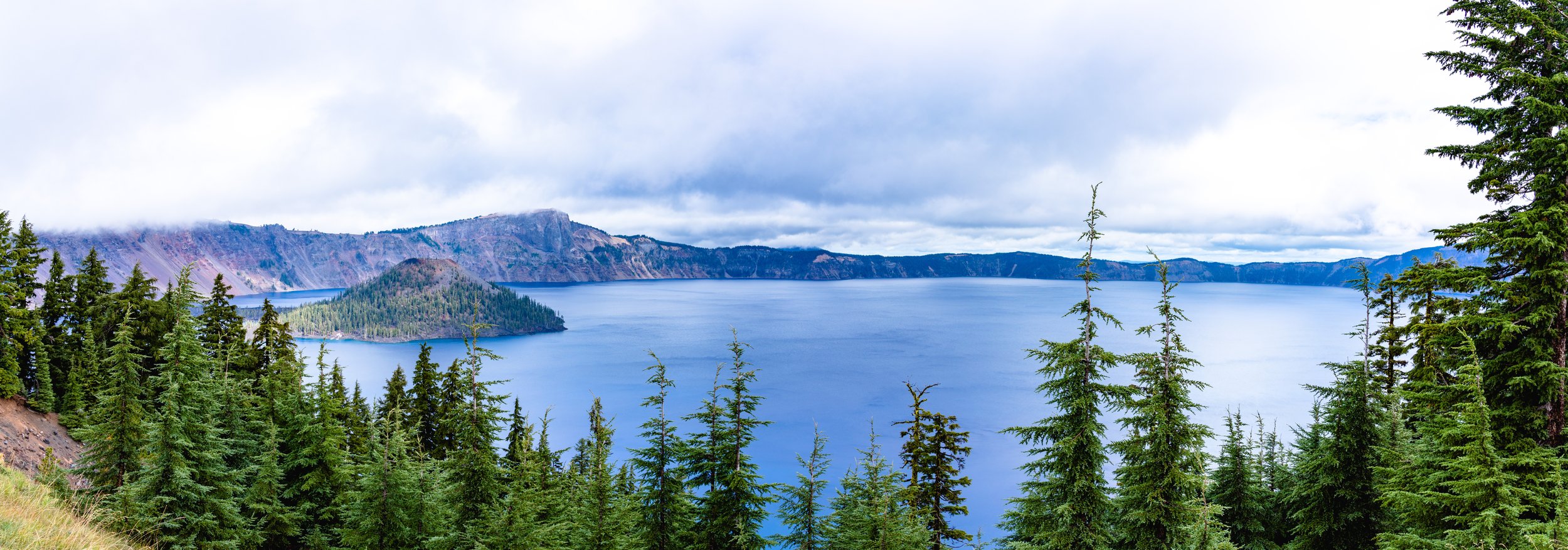
We have made it to the upper half of the list, and these are awesome parks. These might not be the best of the US, but they can each be argued you have entered “A” tier. I even got engaged under the Arch in Arches National Park.
Parks 30-21
Shenandoah National Park
Shenandoah National Park unfolds as a picturesque haven within Virginia's landscape. Meandering through lush forests and rolling hills, the journey to this sanctuary sets the tone for an encounter with the captivating splendor of the Blue Ridge Mountains.
The expansive vistas of Shenandoah, defined by the undulating hills and the majestic peaks of the Blue Ridge Mountains, unveil the seamless melding of geology and artistry. The iconic Skyline Drive winds its way through the heart of the park, offering panoramic views that showcase the seasons in an ever-changing display of colors.
Exploring Shenandoah unveils a network of trails that lead to breathtaking viewpoints and serene waterfalls. The diverse ecosystems, from dense forests to open meadows, create a harmonious blend of habitats that house a multitude of flora and fauna. The park's most photogenic season, the vibrant fall, transforms the landscape into a canvas of warm hues that ignite the imagination.
Wildlife thrives amidst the park's diverse habitats, with black bears, deer, and a variety of bird species making their presence known. It’s one of east coast’s finest parks.
Park Size
200,192 acres
Favorite Feature
Multiple Mountain Overlooks in Fall
Park Location
Virginia
Year(s) Visited
2015,2016,2017,2018,2019,2020
#30
Ranking Rationale: I lived in Virginia for many years, so this was, for about half a decade, my hometown national park, and boy was I lucky to live near something so grand. This little slice of the Appalachian Mountains is riddled with trails, views, and camping, offering adventure for any type of mood. What makes this park really special though is its seasons it goes through. Whether the snowy covered mountains of winter, vibrant fall colors, flowers of spring, or the lush green of summer, this park is almost like having 4 parks in one, as it experiences each season in an exaggerated fashion. It is not the best park on the east coast (As you’ll see below), but it is perfect for those looking for an east coast mountain getaway.
Channel Islands National Park
Channel Islands National Park beckons with a coastal charm that's both serene and captivating. It's not just a place to visit; it's a chance to explore a collection of islands, each with its own distinct character, where nature's beauty takes center stage.
Santa Cruz Island, the largest of the islands, welcomes visitors with its diverse landscapes. From rugged coastline to rolling hills, it's an outdoor enthusiast's paradise. Hiking trails reveal sweeping vistas that encompass both the ocean and the island's interiors.
Santa Rosa Island is a haven for nature lovers. Its pristine beaches and windswept grasslands offer an opportunity to witness unspoiled landscapes. Its enormous size means you can explore, camp, and photograph this island for days.
Anacapa Island captivates with its dramatic cliffs and iconic lighthouse. Its smaller size makes it perfect for a day trip, where you can explore the rugged coastline and spot sea lions basking in the sun (or in our case, get attacked by birds).
San Miguel Island is a haven for wildlife enthusiasts. Seabird colonies and seals populate its shores, creating a vibrant ecosystem that's both fascinating and humbling. It’s also one of the more difficult islands to get to, so if you get a chance to go, jump on it.
Santa Barbara Island, the smallest of the bunch, boasts crystal-clear waters and abundant marine life. Snorkeling and diving unveil a world beneath the surface, where vibrant kelp forests and playful seals provide a sensory feast.
Wildlife finds its home here, from foxes that roam the hills to dolphins that dance in the waves. The park's waters teem with marine life, creating a rich tapestry of biodiversity that's a testament to nature's abundance.
The allure of Channel Islands National Park lies in its simplicity. It's a chance to disconnect from the hustle of daily life and reconnect with nature's rhythms. The rugged coastlines, the chorus of seabirds, and the rustle of island flora offer a respite that's both calming and rejuvenating.
Park Size
249,561 acres
Favorite Feature
Anacapa Island
Park Location
Southern California
Year(s) Visited
2013, 2021, 2023
#29
Ranking Rationale: Sometimes when you think of California, it’s easy to forget that their are a slew of islands off the southern coast. One of the islands, Catalina, is a popular tourist destination for San Diego area residents, but north, outside of Oxnard (north of LA) are these group of islands that make up an enormous national park right outside of the second biggest metro area in the USA. The channel island offers amazing snorkeling, kayaking, hiking, and overall exploring. Check out the video below for a look into Anacapa island… and me getting attacked by birds during nesting season.
Badlands National Park
One of the park's standout features is its iconic rock formations. Towering spires, deep canyons, and intricate hoodoos create an otherworldly panorama that captivates the imagination. The stark contrast between the harsh terrain and the soft pastel hues of the rock formations creates a surreal visual feast.
Badlands is home to an array of unique and diverse wildlife. Bison roam the prairies, bighorn sheep navigate the steep cliffs, and prairie dogs scurry across the grasslands. Observing these creatures in their natural habitat is an immersive experience that brings the park's ecosystem to life.
The Door Trail is a must for hikers, offering a glimpse into the heart of the Badlands. The trail winds through a landscape of canyons and formations, revealing unexpected vistas that seem to stretch endlessly.
For stargazers, Badlands National Park is a designated International Dark Sky Park. The absence of light pollution creates an opportunity to witness celestial wonders in a pristine setting, a journey through the cosmos under the expansive South Dakota sky.
Park Size
242,755 acres
Favorite Feature
Prairie Dogs
Park Location
Western South Dakota
Year(s) Visited
2016
#28
Ranking Rationale: The badlands are a part of Americana as much for driving through them (think Easy Rider), as they are experiencing them (think Nomadland), but they are an integral part of American culture for good reason. The Badlands, representing an easy drive, still feel like going through a frontier land. It invites a sense of wonder and awe despite being surrounded by kitschy tourist traps. It’s a weird juxtaposition of a park being so popular for being so barren, and so authentic for tourists' traps that feel inauthentic and ridiculous. It’s kind of the perfect National Park.
Lake Clark National Park
Lake Clark National Park is a hidden gem nestled within the wilds of Alaska, a place of pristine beauty that rewards those willing to undertake the journey. Remote and rugged, this park stands as a testament to untouched landscapes and untamed wilderness. The journey to Lake Clark is an adventure in itself, accessible only by boat or small aircraft, but the effort is well worth the reward.
One of the park's defining features is its awe-inspiring landscapes. From the rugged coastlines along the Cook Inlet to the towering peaks of the Alaska Range, Lake Clark offers a diverse tableau of natural wonders. The park's namesake lake is a shimmering jewel, surrounded by lush forests and reflecting the majesty of its surroundings.
Lake Clark's wildlife is a highlight for any nature enthusiast. The park is a sanctuary for brown bears, with the highest density of these majestic creatures in North America. Observing them in their natural habitat is a humbling experience, a reminder of the delicate balance of life in the wilderness.
The Telaquana Trail is a must for hikers, offering a journey through boreal forests, over mountain passes, and along serene lakeshores. The tranquility of the trail and the sense of isolation immerse hikers in the heart of Alaska's backcountry.
Park Size
2,619,816 acres
Favorite Feature
Endless mountains and isolation
Park Location
Southern Alaska
Year(s) Visited
2018
#27
Ranking Rationale: Lake Clark’s size is overwhelming, it is remote, and its landscape is unforgiving. Glacier covered mountains, Brown Bears, Wolves, and isolation few places in the US can match, it’s a park for those who want to see the great unknown. Accessible only by boat or private plane, most of its non-back country trails are small, and really is best enjoyed via backcountry or with an experienced guide. It is truly beautiful, and for those with the means, time, and patience to experience it will be rewarded by its next level beauty.
Lassen Volcanic National Park
Nestled in Northern California, this park is a captivating blend of geological wonders and natural beauty, making it a destination like no other. From its striking landscapes to its diverse ecosystems, Lassen Volcanic National Park offers a glimpse into the Earth's fiery past and its ongoing transformation.
One of the park's standout features is its impressive collection of hydrothermal wonders. Bubbling mud pots, steaming fumaroles, and colorful hot springs create a surreal landscape that seems almost otherworldly. Visitors can walk among these geothermal features, marveling at the power of nature's underground forces.
Another highlight is the Lassen Peak Trail, which leads to the summit of the park's namesake volcano. The panoramic vistas from the top reward hikers with sweeping views of the surrounding terrain, from lush forests to desolate moonscapes.
Bumpass Hell, named after a pioneer who discovered it, is a geothermal area that offers a dramatic display of boiling pools and vibrant mineral deposits. The trail to Bumpass Hell winds through dense forests and opens up to reveal this captivating landscape.
Kings Creek Falls is a must-see for those seeking tranquility and scenic beauty. The trail takes you through meadows and forests before culminating in the sight of the falls cascading gracefully into the valley below.
For stargazers, Lassen Volcanic National Park is a designated Dark Sky Park. The lack of light pollution provides an opportunity to observe celestial wonders in a pristine setting.
Park Size
105,589 acres
Favorite Feature
Bumpass Hell
Park Location
Northern California
Year(s) Visited
2019
#26
Ranking Rationale: Lassen Volcanic reminds me a lot of Yellowstone, in that it has a little bit of a sampler of tons of national parks. It has painted hills like Petrified Forest, Acid lakes like Yellowstone, mountain hiking like Great Basin, lakes like the Rockies, and much more. It’s in an area of the country full of natural beauty (check out Bernie Falls), and tons of adventure. It’s a bit out of the way compared to the other national parks in California but stands on its own as being one of the most unique and beautiful parks in the USA, and worthy of a stand-alone trip where you can spend days there.
Arches National Park
It might be known for “That one arch (Delicate Arch)”, but Arches is plural, and there are quite a few to feast your eyes on.
Amidst the ochre-colored terrain, the Delicate Arch stands as a symbol of beauty and endurance. Rise early to witness the magic of sunrise, as the arch is bathed in the soft, golden light. The Fiery Furnace beckons to the intrepid explorer. Venture into this intricate maze of narrow canyons and towering rocks, guided by experts who unveil its secrets with each twist and turn.
Balanced Rock, a testament to nature's sculptural prowess, leaves you marveling at the delicate balance of the colossal rock atop its slender base. As you stand in its presence, the grandeur of nature's architecture unfolds before you.
The Double Arch invites you to wander beneath its elegant embrace. The short hike through a desert adorned with ancient junipers and wildflowers leads to this spectacular duo of arches, an architectural masterpiece of nature.
For a more extensive adventure, the Devils Garden Loop beckons with its diverse tapestry of arches. Traverse the undulating terrain, encountering the iconic Landscape Arch and marveling at the vistas that stretch far and wide.
Park Size
76,678 acres
Favorite Feature
Delicate Arch (I got engaged there)
Park Location
Utah
Year(s) Visited
2013, 2017
#25
Ranking Rationale: Arches National Park is incredibly near and dear to my heart. It was in the summer of 2017 I went under the delicate Arch and proposed to my wife (getting cheers from the crowd taking in the sunset). It’s one of the most beautiful landscapes you can imagine in a national park, with rock arches that truly defy logic and leave you breathless. So why is this in the middle of the pack? Wildlife at this park is less rich than some above it and it has recently seen highly elevated crowds, meaning you don’t get quite the isolation you do in a place like Canyonlands.
Canyonlands National Park
This place is very similar to the Grand Canyon, but with significantly less crowds and a different spin, depending on where you visit. The park's four districts offer distinct perspectives of its beauty. Island in the Sky provides a sweeping vista that's nothing short of awe-inspiring. As you gaze across the immense chasm, the scale of the canyons and the forces that carved them come into sharp focus.
The Needles district paints a different picture, with its iconic sandstone spires and rugged trails. The sheer diversity of formations, from arches to bridges, creates a dynamic landscape that's as mesmerizing as it is unique.
Mesa Arch, in particular, captivates with its delicate beauty. As the sun rises, its glow illuminates the canyon below, a reminder of the interplay of light and rock that defines the park's charm. This place often gets overlooked by folks looking to go to Arches or Zion, but this place hold its own and is worthy of a stop if you are in the Moab area.
Park Size
337,597 acres
Favorite Feature
Canyon overlooks
Park Location
Utah
Year(s) Visited
2017
#24
Ranking Rationale: This park exists in the shadow of Arches National Park in Moab, but that doesn’t mean it is lightly visited or inferior. It’s a park with two different entrances (Canyon and Needles) that offer distinct experiences of either its grand vistas or desert crevices and rock formations. The northern entrance, with the grand views of the canyon is the more popular and easier to access from Moab, but the Needles is the less crowded and more unique experience of the two parks. The park itself is huge, and for those truly brave, you can rent a car and drive through canyon over a period of days on some of the most hairpin driving I’ve ever seen.
Everglades National Park
The park's diversity is evident in its varied habitats. From the coastal mangroves that edge the Gulf of Mexico to the pine rocklands that dot the landscape, each environment tells a different story of survival and adaptation.
The Anhinga Trail is a highlight, where boardwalks lead you through the heart of the swamp. Here, the heat is palpable, a reminder that you're in a land where humidity and wildlife thrive. Alligators bask in the sun, and wading birds stalk the waters, creating a living tableau of nature's intricacies.
The allure of the Everglades lies in its unique balance of life. Cypress domes and hardwood hammocks offer a glimpse into a world where ancient trees shade vibrant undergrowth. Airboat rides allow you to skim the water's surface, witnessing the delicate dance of water lilies and the chance encounters with wildlife.
The park's wildlife is as diverse as its landscapes. From elusive panthers that roam the depths of the wilderness to the playful antics of manatees in the waterways, the Everglades is a sanctuary for species both rare and iconic.
Park Size
1,508,938 acres
Favorite Feature
Abundant Wildlife
Park Location
South Florida
Year(s) Visited
2012, 2015
#23
Ranking Rationale: This park scores amongst the highest for wildlife, and it’s one of the few east coast national parks to score the highest for wildlife viewing. But with every kind of imaginable swamp and coastal wetland creature you can imagine here, you’ll be guaranteed to spot something awesome. Hiking on foot is limited outside the designated path, but that just means you can take an airboat to go see the rest of the park. Probably not the best place to camp, but an amazing palace to experience, and as one the largest National Parks in the continental US, there is plenty to explore. Just make sure to stay alert, this place is very much alive.
Joshua Tree National Park
The draw of Joshua Tree lies in its extraordinary landscapes and unique geology. The park's namesake, the Joshua Tree, stands as a sentinel amidst the arid landscape with a tree designed like something out of a Dr. Suess book. As you traverse the trails, the juxtaposition of cacti and boulders creates an ever-changing scenery that's nothing short of captivating. Wildlife finds its home here too, from bighorn sheep to desert tortoises.
During the day, the desert unveils its own magic. The sun casts a golden glow on the rock formations, highlighting their intricate textures. The iconic Cholla Cactus Garden, with its silhouettes against the horizon, offers a snapshot of the resilience of life in a harsh environment.
As twilight descends, the park takes on a new aura. The desert skies come alive with stars, unobscured by urban lights. This is a place where you can witness the grandeur of the Milky Way and feel a profound connection to the universe.
Park Size
795,155 acres
Favorite Feature
Joshua Trees
Park Location
California
Year(s) Visited
2015
#22
Ranking Rationale: Not only is this a great U2 Album, but the album photo (taken in Joshua Tree) is pretty cool too. It’s basically a desert full of amazing rock formations/hills/mountains with trees that look like something out of a Dr. Suess book. It’s an ideal place for night sky viewing, rock climbing, and exploring the deserts of California (in a place a bit less hot than Death Valley). The landscape is not as dynamic as some other California National Parks, but is still amazing enough to be among the upper echelon of National Parks in the USA.
Mount Rainier National Park
Mount Rainier itself is a sight to behold, its snow-covered crown visible from miles away. The park's trails offer diverse experiences, from wandering through dense forests to wandering across open meadows that frame the mountain's grandeur in unique ways.
During the winter months, the allure of Paradise comes alive. Covered in a pristine blanket of snow, it's a haven for snowshoeing and skiing enthusiasts. The snow-kissed trees and the gentle fall of flakes create an enchanting scene that captures the magic of the season.
As the park transitions to the rainy season, the landscape transforms yet again. Valleys burst into a riot of wildflowers, painting the scene with vibrant colors. The scent of wet earth and the sound of raindrops create an immersive experience that's a departure from the norm.
The unique charm of Mount Rainier lies in the interplay of snow and rain. Glaciers shimmer in the daylight, while waterfalls tumble over rocks in a testament to the forces shaping the land. Rivers flow purposefully, powered by the blend of melting snow and rainwater.
Wildlife thrives here, from mountain goats to curious marmots. Birds fill the air with their melodies, a testament to the vitality of the ecosystem. As the day ends, clear skies reveal a stunning display of stars, a reward for being in a place where nature takes center stage.
Park Size
236,381 acres
Favorite Feature
Mt. Rainier
Park Location
Western Washington
Year(s) Visited
2014
#21
Ranking Rationale: Probably the first thing you see when landing in the Seattle Airport, you can see this giant mountain looming over what seems like the whole state, reaching into the sky like Mt. Olympus. It’s a truly spectacular park, with glacial cover all year round, and a size and scope that is difficult to write about and requires experience with in person to truly understand. Most of the activities here revolve around the Mountain, but waterfalls, vistas, and trails surround the area around the mountain and offer days of activities to keep you entertained and curious.
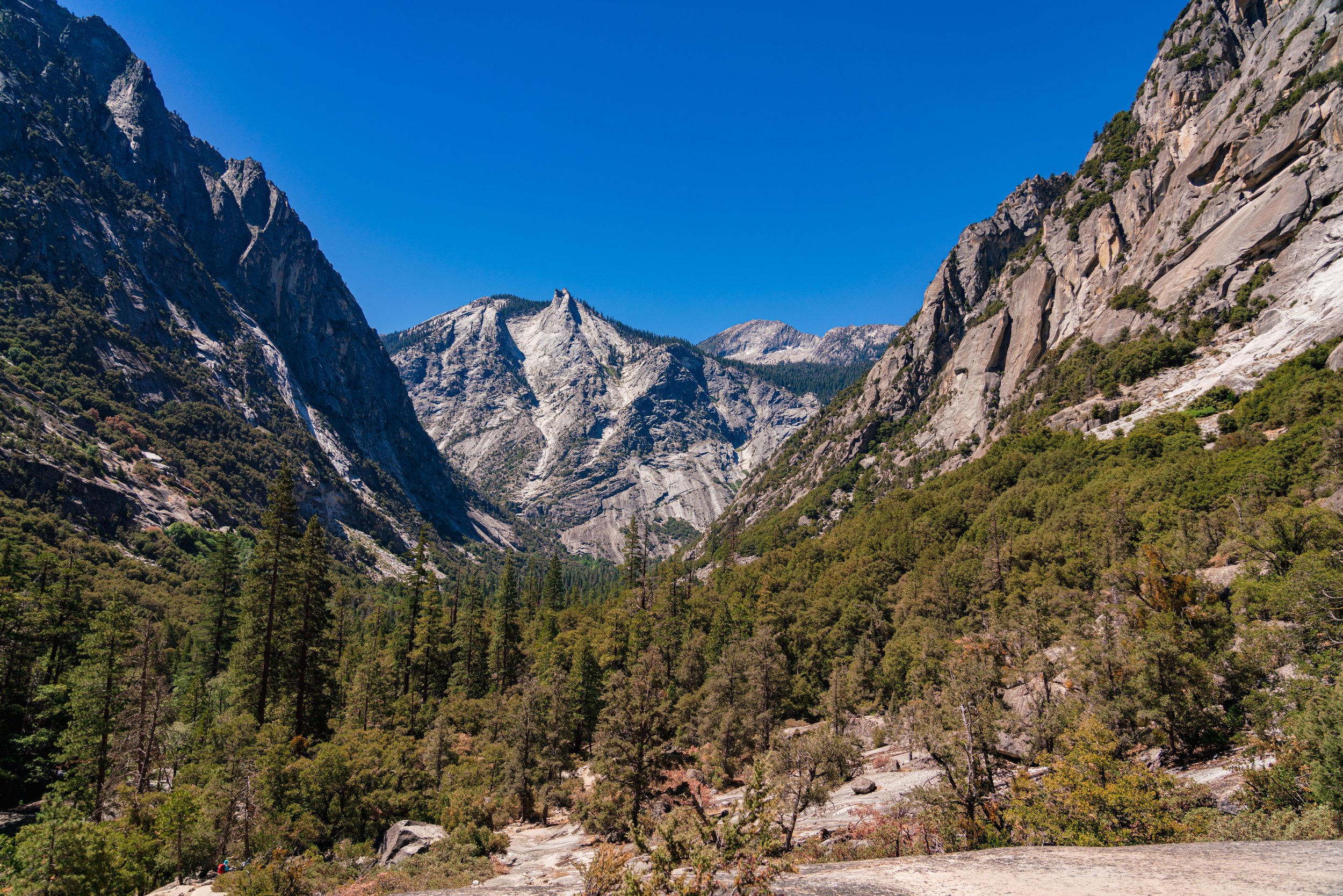
You are going to see some these and find it criminal that they are not in the top ten, but they should be everyone’s go-to list. Each very unique, and some of the best the US has to offer.
Parks 20-11
Great Smoky Mountains National Park
The Great Smoky Mountains National Park is a captivating destination that never fails to awe visitors. With its unparalleled beauty and rich biodiversity, it stands as a testament to nature's splendor.
The park is renowned for its breathtaking landscapes, featuring mist-shrouded mountains, verdant forests, and cascading waterfalls. Each turn reveals a new vista, leaving visitors in awe of the park's beauty. Home to over 19,000 species, the Great Smoky Mountains National Park showcases one of the most diverse ecosystems in North America. Rare plants, animals, and insects can be found here, making it a hotspot for nature enthusiasts and researchers. With over 850 miles of trails, the park offers something for every hiker, from novice to experienced. Trails like the Appalachian Trail and the famous Alum Cave Bluffs Trail lead visitors through enchanting forests and past scenic overlooks. From black bears and elk to salamanders and fireflies, the park is a sanctuary for a wide variety of wildlife. Birdwatchers, in particular, will be delighted by the numerous species that call this area home.
The park preserves the rich history and culture of the Appalachian people who once inhabited these mountains. Visitors can glimpse into the past by exploring preserved cabins, churches, and homesteads scattered throughout the park. And with its ever-changing scenery, the Great Smoky Mountains National Park is a dream for photographers. The vibrant fall foliage, misty mornings, and ethereal sunsets create picture-perfect moments at every corner. It offers a multitude of activities for outdoor enthusiasts, including camping, fishing, horseback riding, and cycling. Adventurers can explore the park by kayak or enjoy a refreshing swim in its crystal-clear streams.
The park's charm knows no season. Whether visited in the vibrant colors of autumn, the lushness of spring, the snowy wonderland of winter, or the verdant glory of summer, the Great Smoky Mountains National Park is a year-round destination that never fails to inspire.
Park Size
522,426 acres
Favorite Feature
Rolling mountains at dawn
Park Location
Tennessee
Year(s) Visited
2017
#20
Ranking Rationale: An adjective to this park almost had to be added because of how “great” this place is. It’sthe 2nd highest rated easy coast park on this list, and for good reason. It is teaming with trails that would take months to explore, offers wildlife, adventures, and exploring that would satisfy even the most seasoned explorer, and has more places for photography than I can count. To truly get a sense for the place, either camp or stay in a log cabin and check out the surrounding towns. Some are a bit touristy, but it fits in the old school americana charm that this park is all about.
Big Bend National Park
Nestled within the heart of the Texan desert, Big Bend National Park emerges as a captivating gem that beckons adventure enthusiasts and nature lovers alike. Spanning a vast expanse of arid landscapes and winding rivers, this national park offers a breathtaking panorama that tells a tale of untamed beauty and rugged terrains. As you embark on the journey to this remote sanctuary, the stark contrast between towering peaks and the meandering Rio Grande River unfolds before your eyes, leaving an indelible impression.
The grandeur of Big Bend is a testament to the ancient geological forces that shaped its diverse landscapes. The iconic Santa Elena Canyon stands as a striking testament to the raw power of nature, with its dramatic chasm carved by the river's relentless currents. As the sun casts shifting patterns of light and shadows across the vast desert expanse, the landscape transforms, offering a visual spectacle that's nothing short of awe-inspiring.
Exploration within Big Bend is an opportunity to immerse yourself in the diverse ecosystems that call this place home. From arid desert floors to lush riparian zones, every step reveals a blend of habitats teeming with wildlife. For those seeking a remote escape, the park's far-flung location from urban lights provides an unparalleled setting for stargazing, where the night sky unveils a cosmic canvas like no other.
Within these desert landscapes, wildlife thrives in unexpected ways. Desert bighorn sheep, roadrunners, and golden eagles navigate this challenging environment, while the Rio Grande River weaves a cultural tapestry that speaks of ancient paths walked by Native Americans and early settlers.
Park Size
801,163 acres
Favorite Feature
The Desert Peaks
Park Location
Western Texas
Year(s) Visited
2022
#19
Ranking Rationale: Big isn’t a word that captures the size of this part accurately. It’s almost like 3 parks in one. You have the mighty cliffs and river of the Rio Grande towards the edges of the park that stretch to Mexico, you have the mountains in the center that offer some amazing hiking and views, and you have wide open spaces of desert that not only offer great views of those mountains, but offer some amazing night sky viewing. Wildlife, adventure, and hiking is galore in this park, and easily the best of the parks in Texas. It’s a fitting park for a state that likes things “Big”.
Hawai’i Volcanoes National Park
The park's undeniable star power lies in its active volcanoes, Kīlauea and Mauna Loa, which put on a show of molten rock and eruptions that defy imagination. Witnessing the molten lava meeting the ocean's embrace is a sensory experience that ignites your spirit and connects you to the very heartbeat of our planet.
Exploration within this volcanic haven reveals a tapestry of landscapes that range from lush rainforests to stark lava fields. The diversity of ecosystems invites you to embark on hikes that traverse ancient craters and newly formed land. The thrill of walking on solidified lava and watching as life gradually returns to these barren stretches is a reminder of nature's incredible ability to adapt and flourish.
Wildlife finds refuge in the park's varied habitats, with rare species like the Hawaiian petrel and the nēnē goose thriving amidst this unique environment. The cultural significance of this land to the native Hawaiian people adds a layer of depth to your experience, underscoring the connection between land and heritage.
Hawai'i Volcanoes National Park is more than just a destination; it's a journey into the heart of our planet's tumultuous past and its boundless potential for creation. As you stand on the edge of craters and watch the glow of lava illuminating the night sky, you become part of a narrative that spans millennia. This is a place that fuels your curiosity, ignites your sense of wonder, and leaves you forever changed by the fiery beauty.
Park Size
325,605 acres
Favorite Feature
Lava
Park Location
Hawaii
Year(s) Visited
2024
#18
Ranking Rationale: Although quite a few parks are built on top of volcanos (Lassen and Yellowstone), none are as active (thankfully) as this one is. You can check the National Park website for where and if there is an active lava flow at the time of your visit, but the sheet size of this, and being able to tour and see an active volcano as it remakes Hawaii is truly a unique experience. Both National Parks in Hawaii are stunning, but with this being magnitudes larger, this takes the cake as the best in the State.
North Cascades National Park
Venture into North Cascades and the trails, like the iconic Easy Pass Trail, lead you through lush forests, across alpine ridges, and past cascading waterfalls. The park's varied ecosystems offer a remarkable opportunity to witness nature's intricate dance, from vibrant wildflowers adorning alpine meadows to the elusive inhabitants that roam these landscapes.
Wildlife thrives within the park's diverse habitats, with black bears, mountain goats, and bald eagles claiming their place in this pristine environment. The park's isolation and rugged terrain create a haven where the natural world reigns supreme, undisturbed by the hustle of modern life.
In the heart of North Cascades, you're not just a bystander; you're an active participant in an exploration that uncovers tales etched in ancient rocks and whispered by the wind through towering trees. The turquoise brilliance of Diablo Lake and the staggering vistas along its shores offer a vast contrast that pushes this park to the upper echelon of park rankings.
Park Size
504,780 acres
Favorite Feature
Jagged Mountain Tops and Blue Lakes
Park Location
Northern Washington
Year(s) Visited
2016
#17
Ranking Rationale: This park is a mountain lover's dream. The Cascade Mountain range is full of staggering mountains that create amazing glacier lakes (like the bright blue Lake Diablo) and stunning landscapes. Wildlife is abundant in this park, and you can spend days here hiking and exploring. The roads to get here will often get closed in the winter due to the huge amount of snowfall in the area, so its best visited between late spring and fall, and although a bit hard to get to, it’s worth a trip to get to and check out.
Death Valley National Park
The largest National Park in the continental USA, This is a landscape of contrasts, where harsh beauty and serene desolation coexist with extremes. It's not just a destination; it's an expedition into a world that tests the boundaries of what nature can create.
The vastness of the Mesquite Flat Sand Dunes strikes awe, a sea of windswept grains that shift with the passage of time. The towering peaks of the Panamint Range cradle the valley, their grandeur a testament to nature's resilience. Every vista, from Zabriskie Point to Dante's View, offers a glimpse into the depths of geological history.
As visitors traverse the salt flats of Badwater Basin, they walk on what appears to be an endless mirror, the unique result of geological processes. The muted silence is punctuated by the scorching sun, a reminder that this is a realm where temperatures push human endurance.
In this otherworldly setting, life persists against all odds. Desert plants and wildlife have evolved to thrive in this unforgiving environment, reminding us of nature's tenacity. The vibrancy of a desert wildflower bloom and the sight of a solitary coyote against the backdrop of mesas embody the essence of life's adaptability.
The park's dark skies come alive with stars, revealing a celestial painting that's often obscured by urban lights elsewhere. Yes, Death Valley is hot in the summer, but to just say that Death Valley is hot oversimplifies this amazing place.
Park Size
3,408,395 acres
Favorite Feature
Sand Dunes and Rock Formations
Park Location
California
Year(s) Visited
2015
#16
Ranking Rationale: Home to the highest recorded temperature ever recorded in the USA, there is a reason this park is called Death Valley. I am not sure I would wish even my biggest enemies to visit this park in the dead of summer, but to discount this park just because of its heat during one season would be missing out on one of the most impressive National Parks on the list. Not only is it enormous, but it is home to some beautiful landscapes, wildlife, and history that can give you days of places to explore. Being the desert, it also cools off quite a bit at night, which unveils one of the best locations for stargazing in the world.
Sequoia National Park
Sequoia National Park is undeniably special for several reasons. Firstly, it is home to some of the tallest and oldest trees on Earth, the giant sequoias, whose sheer size and majesty awe all who behold them. These ancient giants can reach heights of over 300 feet and have a lifespan of over 3,000 years, making them truly extraordinary. Secondly, Sequoia's diverse ecosystem encompasses not only the giant sequoias, but also breathtaking granite peaks, alpine meadows, and pristine rivers, offering visitors a chance to experience the stunning beauty of nature in all its forms. The park's wildlife is equally remarkable, with sightings of black bears, mule deer, and even the elusive Sierra Nevada bighorn sheep. Additionally, Sequoia National Park boasts America's most extensive network of cave systems, including the awe-inspiring Crystal Cave, inviting adventurers to explore the mysterious depths hidden beneath the towering trees. The park's rich cultural heritage also adds to its allure, with fascinating Native American history and remnants of early settlers' lives still present throughout the area. Ultimately, what truly makes Sequoia National Park special is its ability to inspire and connect people with the wonders of the natural world, leaving a lasting imprint on the hearts and minds of all who visit.
Park Size
404,062 acres
Favorite Feature
Standing in the valley of giants
Park Location
Central California
Year(s) Visited
2021
#15
Ranking Rationale: Sequoia almost has an unfortunate name, in that it draws attention to one aspect of the park, which, although incredible, is just a small sample of what makes Sequoia one of the best parks in the country. Yes, the trees are absolutely breathtaking, and enormous on a scale that defies logic, but the grand vistas in the Sierra Nevada Mountain range and hikes around the mountainside elevate this from a park about Trees to one that embraces all of the best California’s Sierra Nevada has to offer. Between this and Kings Canyon, you could easily find yourself spending a week here and still yearning for more.
Rocky Mountain National Park
As the winding roads of Rocky Mountain National Park unfold, a sense of anticipation melds with the invigorating mountain air. The landscape opens like a living masterpiece, each bend revealing a new vista straight from a dream. This isn't a mere adventure; it's an odyssey into a realm where the majesty of nature's craftsmanship takes center stage.
The Bear Lake Trail's trailhead beckons, and as visitors embark on the hike, the tranquility of the wood’s envelopes them. Bear Lake's turquoise waters mirror the towering peaks, creating a perfect reflection of nature's symmetry.
Every trail seems to lead to a hidden gem. Alpine meadows adorned with wildflowers, the subtle scent of pine in the air, and the litany of cascading waterfalls. It's akin to a treasure hunt for the perfect photo, trail, or experience, where every discovery feels like unearthing a secret.
Interactions with the park's residents infuse the journey with wonder. The imposing presence of bighorn sheep and the inquisitive gaze of a mule deer serve as a reminder that human visitors are mere guests in the park (leave no trace). The wildlife here, existing within the backdrop of peaks and valleys, adds an authentic layer to the experience.
Yet, it's the panoramas that etch themselves into memory. Standing atop a rocky precipice as the sun paints the sky with its golden hues, you truly appreciate this epic National Park. The serenity of the moment, the gentle dance of grass in the breeze, and the regal silhouettes of the peaks against the twilight canvas create a scene that appears almost surreal.
Park Size
265,807 acres
Favorite Feature
Flower Meadows with Moutain Backdrop
Park Location
Colorado
Year(s) Visited
2016
#14
Ranking Rationale: This is a National Park so synonymous with Colorado, its reputation precedes it. This enormous park is a landscape hikers paradise, and is one you can keep coming back to for more. Although it’s known for its huge mountains, even hiking in its many valleys and driving along its scenic route offer views that are accessible to anyone. The many mountain lakes, especially in early spring, show reflections of snow capped peaks that are a must visit for photographers looking for that perfect landscape shot.
Kings Canyon National Park
Kings Canyon National Park, an enchanting realm that stands as a testament to the grandeur of California's Sierra Nevada mountains. Nestled in the heart of this iconic California range, the park offers a sanctuary of towering sequoias, misty trails, and cascading waterfalls. From the moment you step foot within its borders, you'll be enveloped in a symphony of natural wonders.
The park's allure is epitomized by its towering peaks and rugged canyons, etching a dramatic backdrop that speaks of ancient geological forces. The awe-inducing Kings Canyon, with its steep granite walls, is a testament to the power of erosion and the passage of time. As the mist gently rises from lush valleys, a dreamlike ambiance envelops you, igniting your senses.
Embarking on trails like the famed Misty Trail, you'll traverse through dense forests, beneath towering trees, and alongside babbling streams. The park's diverse ecosystems offer a remarkable chance to witness nature's intricate tapestry, from vibrant wildflowers carpeting meadows to the elusive inhabitants that call these woodlands home.
Wildlife thrives within the park's varied habitats, with black bears, mule deer, and golden eagles sharing the landscape. The park's commitment to preservation creates a haven where animals roam free and human impact remains minimal.
In the heart of Kings Canyon, you're not just a spectator; you're a participant in an exploration that uncovers stories etched in ancient rock formations and echoed by the call of birds in the trees. The breathtaking spectacle of roaring waterfalls, like Roaring River Falls and Grizzly Falls, reminds you of the profound beauty shaped by the interplay of rock and water.
Park Size
461,901 acres
Favorite Feature
Seeing the Dark Sky At Night
Park Location
Central California
Year(s) Visited
2021
#13
Ranking Rationale: This park ranks very close to Sequoia and is often mentioned in the same breadth since their borders touch, but this park, like the General Grant tree within it, stands just a bit taller than its sister park. This is due to the namesake Kings Canyon, which can be explored either by backcountry, car, or by hiking amazing trails like the misty falls trail. The sense of scale is similar to Yosemite, with perhaps less unique rock formations (though still incredible). Check out the video below for a bit of a deeper dive into this amazing park.
Isle Royale National Park
Isle Royale's main draw lies in its isolated beauty and the thrill of island hopping by boat. As you traverse the crystalline waters, the sense of anticipation builds, each island offering its own story and ecosystem waiting to be explored. The feeling of escaping the mainland and immersing yourself in this pristine expanse is a true adventure for the soul.
Exploration within Isle Royale unveils a variety of landscapes, from dense forests to rugged shorelines. The trails that crisscross the island lead you through ever-changing scenery, rewarding your curiosity with breathtaking vistas and tranquil havens. The freedom to roam and the sense of solitude create an intimate connection with nature that's as liberating as it is humbling.
Wildlife takes center stage in Isle Royale, with the delicate dance between moose and wolves adding an element of intrigue. Witnessing these majestic creatures in their natural habitat (if you can see them), observing the delicate balance of predator and prey, is an experience that's both exhilarating and humbling. The symphony of wildlife, from songbirds to red foxes, reminds you of the intricate tapestry of life woven into the island's fabric.
Park Size
571,790 acres
Favorite Feature
Island Hopping on Boat
Park Location
Lake Superior Michigan
Year(s) Visited
2016
#12
Ranking Rationale: This is one of the least visited parks in the National Park System, and with its remoteness in the UP of Michigan, with no real major cities for hours in any direction, it makes sense. But its remoteness is part of what makes this park feel special. You can only access this park by boat, but once you get there, you have the ability to rent boats so you can go island hopping, exploring the dozens of islands around Isle Royale, and giving a sense of adventure that is unparalleled with almost nobody else around you. You can camp pretty much anywhere, and often can get an island just for yourself. This isn’t the only island centric National Park, but it does the best at capturing the essence of adventure, and it deservedly ranks among the best in the US.
Grand Tetons National Park
Accessed via the historic Jackson Hole region, the drive alone offers glimpses of the towering peaks that define the park's horizon. As you approach, the Teton Range rises abruptly from the valley floor, commanding attention and setting the stage for your wilderness adventure.
Grand Teton beckons adventurers with a myriad of experiences, from challenging trails to stunning vistas. The park's hiking trails cater to all skill levels, each promising breathtaking views and a sense of accomplishment. The Jenny Lake area, with its mirror-like waters reflecting the towering peaks, offers an opportunity to explore pristine landscapes accessible by boat or on foot.
Wildlife thrives within the park's diverse habitats, from the sagebrush flats to the alpine meadows. The chance to spot bison, elk, and even elusive wolves adds an element of excitement to your journey. The Snake River, a lifeline of the region, provides the setting for a scenic float trip that unveils the delicate balance between nature and its inhabitants.
For photographers, Grand Teton National Park is a canvas of unparalleled beauty. The interplay of light on the peaks during sunrise and sunset creates a captivating dance of color and shadow. Whether capturing the serene reflection in the lakes or framing the rugged peaks against the sky, every moment is an opportunity to capture the vibrant nature.
Park Size
310,044 acres
Favorite Feature
Jenny Lake
Park Location
Wyoming
Year(s) Visited
2013
#11
Ranking Rationale: It’s a true gift that a park so close to the top 10 is right in the backyard of Yellowstone, offering a chance at visiting 2 of the best parks in the country in the same visit. It offers the most dramatic mountain range of any national park on this list, with truly amazing wildlife, opportunities for photos, and hikes to allow you to spend days at this place. To truly experience this park, ensure you are in good shape and ready for long vertical hikes, but the trips will burst from the seams with beauty and wonder. There are a lot of mountain ranges on the list, but this one, and this might not be the biggest, but they are probably the most stunning of them all.

The Top 10, almost interchangeable. These are truly some of the most amazing places on earth. These places are so unique, it almost feels like experiencing something beyond imagination. Well-rounded in every way, these National Parks need to be on everyone’s bucket list.
Parks 10-1
Acadia National Park
Acadia National Park unveils a captivating saga of adventure and coastal beauty, summoning intrepid hearts to a realm that stands as a cherished jewel among national parks. Its landscapes, from rugged mountains to serene ponds, form a spectacular stage for nature's masterwork. With its infusion of exhilarating experiences, iconic features, and a rich blend of coastal allure, Acadia National Park crafts an encounter that effortlessly combines excitement and deep reverence.
Exploring Acadia leads adventurers through a realm where mountains embrace tranquil ponds, where Mt. Acadia and Cadillac Mountain loom like ancient sentinels. The ethereal beauty of Jordan Pond, its reflective surface mirroring the surrounding peaks, embodies the serene charm of Acadia. The iconic Beehive trail invites daring spirits to ascend its cliffs, unveiling breathtaking views of land and sea.
Acadia's allure extends beyond its landscapes, inviting visitors to savor delectable popovers in the charming Bar Harbor, a quaint coastal town that nestles on the park's doorstep. The park's unique blend of coastal grandeur and rugged mountains creates an unparalleled backdrop for exploration. Its dedication to preserving this natural sanctuary while offering myriad activities and vistas is both commendable and essential.
Acadia National Park's fusion of adventure, iconic landscapes, and coastal splendor cements its position as a treasure within the National Park System.
Park Size
49,071 acres
Favorite Feature
Popovers while hiking Jordan Pond
Park Location
Central Maine Coast
Year(s) Visited
2013, 2019, 2021
#10
Ranking Rationale: This is the top ranked park on the east coast, which just barely sneaks into the top 10, but it’s not just a token addition. Acadia is a wonderful spot full of history and wide variety of adventure and wildlife that makes it one of the most popular parks in the country. Combine the natural landscapes with the Maine culture, and you are left with a potent combination of adventures, scenery, and activities that rockets this east coast gem into the top National Parks around.
Grand Canyon National Park
Grand Canyon is embodied by its vastness and the feeling of standing on the edge of an ancient abyss. The layers of rock, each telling a different chapter of Earth's story, are living storybook showing intricate dance of erosion and deposition. Gazing into the depths below, you're reminded of the planet's relentless transformation over millions of years.
Exploration within Grand Canyon unveils a myriad of trails that lead you down into the heart of the chasm or along its rim. The sheer diversity of ecosystems, from desert shrublands to ponderosa pine forests, adds depth to your adventure. Each twist and turn on the trails unveils a new perspective, a different angle through which to witness the hugeness of the canyon.
Wildlife thrives within the park's varied habitats, with California condors soaring above and bighorn sheep navigating rocky terrain. The Colorado River, which carved the canyon over millennia, sustains life within its depths, offering a glimpse into the fragile web of existence in this harsh environment.
As you hike the trails, take a mule ride, or simply stand at the rim's edge, you really can’t fathom the size and amazing colors of the truly epic and legendary National Park.
Park Size
1,201,647 acres
Favorite Feature
Grand Canyon Rim Overlooks
Park Location
Northwest Arizona
Year(s) Visited
2010
#9
Ranking Rationale: This very well may be the most famous park on this list. It is internationally recognized for its size and beauty, and seeing this amazing place in person somehow is even more amazing then its reputation. Whether stopping to look at its incredible size and colors, or going into the canyon itself for some truly epic heights, this testament to erosion is a life changing park, and will be guaranteed to leave you breathless.
Zion National Park
Zion National Park is a truly unique place on earth; a symphony of sandstone and sky that elevates it to the ranks of the finest national treasures in the USA. Within its park boundaries is a world where towering cliffs and cascading waterfalls converge, a landscape that captivates the senses leaves you breathless.
The heart of Zion's is its remarkable diversity, where soaring peaks and tranquil valleys coexist in balance. The iconic Angels Landing trail is a daredevil's ascent to breathtaking heights if you are willing the look death in the face and aren’t afraid of height.
Zion's trails wind through landscapes that vary from lush groves of cottonwoods to the stark beauty of the Narrows, where the Virgin River has carved its path through narrow canyons. The whims of water have shaped these walls, creating colors and texture that shifts with the changing light. Make sure to bring your water shoes, because you could walk this trail for miles on end, completely in the river itself.
This park's popularity is due to its universal charm, drawing wanderers from all corners of the world to bear witness to its splendor. You could walk any trail and hear as many languages as you would at the UN. The very name Zion evokes reverence, and rightly so, it's a reminder of the majesty of our planet, an homage to the forces that make it wonderful, and is worthy of protection.
Park Size
147,242 acres
Favorite Feature
Zion Valley
Park Location
Southern Utah
Year(s) Visited
2010, 2017
#8
Ranking Rationale: Utah is a state known for epic landscapes and otherworldly experiences, and Zion offers both. Angels landing is famous (infamous) as being one of the most hair raising hikes in the entire national park system, and the narrows offer a miles long hike literally on top of a river that can’t be matched anywhere. It’s gotten more crowded recently, and sometimes require reservations, but that doesn’t take away from this being the cream of the Utah crop, and one of the best natural vistas you will ever set eyes on.
Wrangell-St. Elias National Park
Amidst the majestic landscapes of Alaska lies a realm of unparalleled beauty and untamed wilderness — Wrangell-St. Elias National Park. Spanning over 13 million acres, this park stands as a testament to nature's grandeur, where towering peaks, vast glaciers, and rugged terrain converge to create a visual symphony that's nothing short of breathtaking. Embarking on a journey into this remote expanse is an adventure like no other, one that promises both challenges and rewards for those who dare to venture.
Reaching Wrangell-St. Elias is a feat that requires determination and a sense of adventure. While remote access roads can be arduous, the journey itself becomes part of the experience. The McCarthy Road, a gravel route leading deep into the park, winds through awe-inspiring landscapes that shift from dense forests to wide-open vistas. As you navigate the winding path, a sense of anticipation builds, offering glimpses of what lies ahead.
Exploration within the park opens a door to a world that's both ancient and ever-changing. The Kennecott Visitor Center serves as a gateway, offering insights into the park's geological wonders, history, and suggested activities. As you step onto the hiking trails, each turn reveals a new perspective, whether it's the Root Glacier Trail that immerses you in icy splendor or the challenging ascent of Donoho Peak that rewards with panoramic views.
Glaciers reign supreme in Wrangell-St. Elias, shaping the landscape and offering a glimpse into the Earth's frozen history. Guided ice treks on the Root Glacier provide an opportunity to step onto this icy wilderness, witnessing the intricate patterns carved by time. The chance to touch the ice and explore its surreal beauty is an experience that transcends the ordinary.
The park's rich history is embodied in the remnants of the Kennecott Mines, a vestige of Alaska's mining past. Guided tours offer a journey back in time, as you explore well-preserved structures and get a sense of the toil and triumphs of those who forged a life in this rugged wilderness.
As you traverse the park, the inhabitants of Wrangell-St. Elias reveal themselves. Grizzly bears roam in their natural habitat, moose meander through the landscape, and Dall sheep navigate rocky terrain with grace. Bird enthusiasts will be delighted by the avian diversity, from soaring eagles to the elusive ptarmigans.
Preparedness is paramount in this remote realm. Alaska's weather is unpredictable, demanding layered clothing and rain gear. Safety measures are crucial — bear spray, making noise while hiking, and proper food storage are non-negotiable. And for campers, adhering to Leave No Trace principles ensures the park's pristine beauty endures.
Park Size
8,323,146 Square Miles
Favorite Feature
Jumping over a glacial stream
Park Location
Eastern Alaska
Year(s) Visited
2018
#7
Ranking Rationale: This is the largest national park system by area (larger than Switzerland), and just getting to McCarthy, the gateway to park, is an adventure not for the faint of heart. But once you are here, it’s a park that has it all. I can’t pretend to say I’ve visited even 1% of this park, but even checking out the mines of Kennecott and walking through glacial ice tunnels were enough to seal the deal for me that this was a top 10 park. Spending a week here would be effortless, and I cannot wait to return to this enormous and majestic place.
Katmai National Park
Reaching Katmai National Park is an odyssey that immerses you in Alaska's untouched beauty. Accessible primarily by boat or plane, the journey itself is an introduction to the wild allure of this region. The sense of isolation is palpable as you traverse the waters and skies, leaving behind the trappings of modern life for a more primal connection with the natural world.
Katmai is renowned for its vibrant brown bear population, and witnessing these majestic creatures in their natural habitat is a privilege that's unparalleled. The Brooks River, in particular, offers prime viewing spots where bears gather to feast on salmon. Observing these massive creatures in action, a blend of power and grace, is an experience that etches itself into your memory.
Katmai's volcanic history is on vivid display, with the Valley of Ten Thousand Smokes standing as a testament to the earth's fiery temperament (accessible by bus). The remnants of a volcanic eruption that shook the land in the early 20th century, this otherworldly landscape showcases the raw forces that shape our planet. The chance to hike amidst the ash and explore this surreal terrain is a must when visiting the park, and is offered no where else in Alaska.
Katmai's challenges come with a distinct wilderness etiquette. For campers, the electrified fencing designed to deter curious bears is a reminder of the park's untamed inhabitants. Adhering to proper food storage protocols is vital to preserving both your safety and the park's ecosystem. As you navigate the park's rugged terrain, ensuring minimal impact and respecting the natural balance are essential. Hopefully the seeing all the Grizzly Bears makes you feel and understand that.
Park Size
3,674,529 acres
Favorite Feature
Campground surrounded by electric fences
Park Location
Southern Alaska
Year(s) Visited
2018
#6
Ranking Rationale: This is my wife’s favorite National Park, and I too ranked this #2 on my personal list of favorite National Parks, and that’s due to two things. There isn’t a park on this list where you are more intimately close to danger and wonder at the same time then this park. You sleep in an electrified area to protect from grizzly bears, can access it only by boat or plane, and the little slice of humanity here in the National Park system feels like you are part of the coolest club on earth. The fact that a completely overshadowed part of this park is the Valley of 1000 smokes (Which in and of itself could be a top 10 National Park) speaks to how amazing this park is. It is far from easily accessible, but if you have the means and the time to figure out how to get here, make it a bucket list item. You will not regret it.
Denali National Park
Denali National Park unfurls an awe-inspiring narrative of adventure and unspoiled wilderness, beckoning brave souls into a realm that stands as a gem within national parks. Its landscapes, from sweeping tundras to towering peaks, compose an unparalleled stage for nature's grand spectacle. With its infusion of heart-pounding experiences, distinctive features, expansive dimensions, and soul-stirring vistas, Denali National Park crafts an encounter that seamlessly merges excitement and profound admiration.
Exploring Denali leads adventurers through a realm where alpine grandeur converges with untouched terrains, tumultuous rivers carve stories into the earth, and wildlife roams with majestic splendor. The park's distinctiveness lies in the towering presence of Denali, North America's loftiest peak, a sentinel guarding the Arctic expanse with timeless grace. The dedication to preserving this pristine realm while cultivating a deep understanding of its ecological harmony is both admirable and vital.
Denali's allure transcends its vast dimensions, spanning over six million acres of untouched wilderness and vistas that echo the pulse of the North. The ethereal beauty of Wonder Lake, reflecting the encircling peaks on its tranquil surface, stands as a testament to the serene power of unaltered nature. Inhabitants, from elusive wolves that tread softly to majestic moose moving with regal grace, offer glimpses into the intricate tapestry of life in this remote enclave.
Journeying through Denali reveals its iconic bus rides, which chart a course through landscapes that transform with the seasons. Grizzled grizzlies embody the wild resilience of the park, while autumn's arrival bathes the boreal forest in a vivid palette of changing colors that celebrate the essence of transformation. Denali National Park's blend of adventure, unmatched landscapes, expansive scope, and reverent beauty elevates it to the zenith of the National Park System.
Park Size
4,740,911 Acres
Favorite Feature
A Clear Day viewing Mt. Denali in the fall
Park Location
Central Alaska
Year(s) Visited
2017
#5
Ranking Rationale: The third National Park in a row from Alaska on this list stands to a testament of how amazing the National Parks are in Alaska. They compromise as much land in these 8 parks then all the other 55 parks combined, so there is just a ton to explore, and with the largest mountain in the hemisphere, this park feels full even at over a million acres in size. Mt. Denali, rightfully, gets all the attention here, but even smaller mountains and trails around the park are stunning and could make other mountain ranges blush.
Olympic National Park
Olympic National Park stands as a dazzling tapestry of adventure and natural extravagance that cements its position as a crown jewel among national parks. Its kaleidoscope of landscapes, from lush rainforests to rugged peaks and pristine shorelines, forms an unrivaled canvas for nature's theatrical marvels. With exhilarating escapades, distinctive ecosystems, boundless dimensions, and photographic wonders, Olympic National Park unveils an encounter that seamlessly blends excitement and profound appreciation.
Embarking on an odyssey through Olympic National Park unveils a captivating journey through ecological diversity, where dense rainforests breathe life into the landscape, towering mountains invite contemplation, and coastal vistas evoke tranquility. The park's uniqueness lies in its ability to host a trio of ecosystems—temperate rainforest, alpine wilderness, and captivating coastline—all within its expansive embrace. Its commitment to safeguarding this ecological treasure while nurturing a deeper connection to its intricate balance is both commendable and crucial.
Olympic's allure extends beyond its vast expanse, encompassing over 1,400 square miles of untamed wilderness and unparalleled landscapes. The spellbinding Hoh Rainforest, draped in mist and adorned with ancient trees, stands as a testament to the ethereal beauty of Earth's oldest living ecosystems. The park's inhabitants, from the elusive mountain goats that navigate rocky terrain to the majestic gray whales that grace its coastal waters, offer glimpses into the intricacies of interconnected life.
Olympic National Park's synthesis of adventure, ecological marvels, expansive scope, and sublime beauty elevates it to the ranks of the most treasured destinations within the National Park System. Its invitation to immerse oneself in the heart of this living laboratory awakens a sense of wonder, revealing nature's hidden gems that inspire a profound reverence for the unspoiled splendor that graces this remarkable corner of our planet.
Park Size
922,649 acres
Favorite Feature
Mountains, Rainforest, and Beaches
Park Location
Northwest Washington
Year(s) Visited
2011
#4
Ranking Rationale: This is a park that has a bit of everything. You have the mighty mountains speckled with mountain goats, you have the jungles of the lower valley, and the amazing rocks at places like Ruby Beach that are some of the most picturesque views of the Pacific ocean out there. Add those altogether, you have a park for that is in the upper echelon of the US National Park system.
Yosemite National Park
Yosemite National Park stands as the ultimate frontier of adventure and natural magnificence, beckoning intrepid souls into a realm that establishes it as a paramount national park. Its iconic landscapes, from towering granite cliffs to serene meadows, create an unparalleled arena for nature's spectacle. With its fusion of exhilarating escapades, distinctive attributes, expansive dimensions, and photographic allure, Yosemite offers an encounter that fuses excitement and deep appreciation.
Embracing a journey through Yosemite unveils a world of awe, where monumental waterfalls cascade, ancient groves whisper, and wildlife thrives in harmony. The park's uniqueness emanates from its role as a sanctuary for natural beauty and a testament to the wild heart of America's landscapes. The commitment to preserving this dynamic ecosystem while fostering an understanding of its complexity is a testament to its extraordinary essence.
Yosemite's allure transcends its immense dimensions, encompassing over 750,000 acres of untamed terrain and breathtaking vistas. The ethereal beauty of Bridalveil Fall, its mist casting rainbows against granite cliffs, stands as a living testament to the Earth's artistic brilliance. The park's inhabitants, from the majestic deer to the soaring eagles, offer captivating photographic opportunities that capture the untamed spirit of the Sierra Nevada.
Yosemite National Park's blend of adventure, unparalleled landscapes, expansive scale, and unparalleled beauty cements its place as a behemoth within the National Park System and the world.
Park Size
761,747 acres
Favorite Feature
Mirror Lake
Park Location
Central California
Year(s) Visited
2014, 2016
#3
Ranking Rationale: The background of most Apple computers for the past decade +, Yosemite’s half dome and El Captain granite peaks are some of the most photographed national wonders in the world. And even if everyone has likely seen this place in photos, experiencing it in person takes the experience to another level. This is closest I can imagine you get to feeling like you are a bug, as everything from the trees, rivers, and mountains feel like they are on a scale that doesn’t exist anywhere else. In a state with 8 National Parks, this stands towering above the rest and firmly belongs amongst the best in the US.
Yellowstone National Park
Yellowstone National Park reigns as the epitome of adventure and natural marvels, luring adventurers into an awe-inspiring realm that cements its place as a premier national park. Its iconic landscapes, from bubbling geysers to majestic waterfalls, create an unparalleled stage for nature's spectacle. Boasting an unrivaled blend of captivating experiences, expansive dimensions, and photographic wonders, Yellowstone offers an encounter that combines exhilaration and profound appreciation.
Embarking on a Yellowstone adventure unveils a world of wonder, where geothermal wonders erupt, ancient forests whisper, and wildlife roams freely. The park's uniqueness lies in its status as the world's first national park, a testament to its global significance and the pioneering spirit that fostered its creation. The dedication to preserving this dynamic ecosystem while providing educational insights is truly commendable.
Yellowstone's allure transcends its staggering dimensions, encompassing over 2 million acres of untamed wilderness and natural beauty. The vibrant colors of Prismatic Lake, with its mesmerizing hues, stand as a testament to the Earth's artistic prowess. The park's inhabitants, from the regal buffalo to the elusive bears, offer captivating photographic opportunities that narrate the untamed story of the American West.
Yellowstone National Park's fusion of adventure, unrivaled landscapes, expansive scale, and profound beauty positions it as an apex park within the National Park System. It can easily be swapped with #1 here and no one would question you.
Park Size
2,219,790 acres
Favorite Feature
Vast fields of Wildlife
Park Location
Wyoming (And Idaho and Montana)
Year(s) Visited
2013, 2022
#2
Ranking Rationale: This park is like the sampler pack of National Parks. It has a little bit of everything, it’s enormous, and shows the best of what the park system has to offer. Spend the day looking at Bison in grand valleys, gaze at acid pools, or face danger (safely) with the ever present grizzly and wolf (seriously be careful). This park may get crowded at times, but if you pick the right hike and avoid places like old faithful, you can explore this and feel like you are alone in a foreign world.
Glacier National Park
Glacier National Park asserts its supremacy as the pinnacle of adventure and natural splendor, luring explorers into a realm that distinguishes it as the ultimate national park experience. Its majestic landscapes, crowned by the rugged peaks of the Rocky Mountains, provide an unparalleled canvas of raw beauty. With a focus on exhilarating exploration, preservation, expansive dimensions, and its iconic Grinnell Glacier, Glacier National Park delivers an encounter that harmonizes heart-pounding excitement and profound inspiration.
Venturing into Glacier National Park is an entrancing adventure, where the call of the wild echoes through pristine valleys, over alpine meadows, and around turquoise lakes. The park's unique blend of glaciated peaks and diverse ecosystems forms a masterpiece that testifies to the enduring forces of nature. Its commitment to preserving this wild sanctuary while facilitating appreciation is a testament to its extraordinary character.
The allure of Glacier National Park lies not only in its staggering expanse but in its inherent singularity, boasting over a million acres of alpine grandeur. The park's iconic Grinnell Glacier stands as a testimony to the majesty of glacial forces, inviting visitors to witness a dynamic landscape shaped by time. Amidst the awe-inspiring beauty, one can't help but be humbled by the interplay of ice and rock that forms this ethereal wonder.
Glacier National Park's blend of adventure, unparalleled landscapes, expansive dimensions, and steadfast conservation efforts cements its stature as the zenith of the National Park System. Its invitation to partake in daring explorations evokes a sense of wonder, unveiling nature's hidden treasures that place this park atop the list of best national parks.
Park Size
1,012,837 Acres
Favorite Feature
Jagged Mountains and Endless Trails
Park Location
Northwest Montana
Year(s) Visited
2021
#1
Ranking Rationale: When I first started making this list. I wasn’t sure what would be number one, but when I found out it was Glacier, it clicked. This park has it all, from the crystal-clear lake McDonald, to wild trails animals from Rams to Grizzly Bears (I even encounter one in my video below), to mountains so dramatic, photos of them look photoshopped. It has so many hikes, even a week here wouldn’t scratch the whole surface. It’s a park that almost seems like it was designed as a love letter to National Parks. Many of these parks can make the argument that they are number one, but Glacier can hold it’s head high as the king of some mighty giants in the US National Park System.
How I ranked the Parks
Let’s begin with this… ranking is subjective. You may very well have a different opinion, and that’s what makes this fun. That being said, I did my best to try and rank them with as little bias as I could. I used a group of several folks who collectively have visited all the national parks, and a series of objective metrics. I then weighted different parts of the parks differently to come up with a definitive list of the top 63 National Parks in the United. Below is what I did the rank the parks.
Size of Park - 10%
Using the square aces of each park, I rank each park by sheer size of the park. 1 point for each 20th percentile the park fell into by land area.
Number of Hikes - 10%
It’s sometimes hard to actually quantify the number of trails, but I used alltrails.com to calculate the number of trails for each park. I then gave them 1 point for ever 20th percentile the trail count fell in.
Alltrails.com Rating - 7%
I know I don’t speak for all, but Alltrails has every national park ranked by reviews, so I have their ranking included here. 1 Point for every 20th percentile the national park was ranked by the site.
Wildlife Ranking- 7%
This is subjective, and I used a 1-5 scale, with a 6 reserved for a few parks that are out of this world for wildlife. 1 point for each 20th percentile the park fell into.
Drivable - 2.5%
This is a simple yes or no metric. 1 point for yes, 0 for no.
Boatable - 2.5%
Is the park accessible or navigable by boat? If so, its get 1 point, otherwise 0 points.
Staying Options - 3%
Does the park have a lodge? Does the park have a campground? It gets a point for each, and 0 for none.
Dark Sky Designation - 2%
Parks come alive at night, especially with the views of the milky way. If the park has a designated international dark sky area (or is remote enough to be one), then it gets a 1, otherwise, a 0.
Scenery - 17%
This is admittedly pretty subjective as well, but a park gets a 1-5 rating depending on their scenery.
Back Country Option - 5%
A simple yes or no (1 point for yes, 0 for no) if the park has backcountry options for you to choose from.
Uniqueness - 7%
A subjective question we answered: How unique is this national park? Can it be found anywhere else in the area, country, or world? Rated on a scale of 1-5.
Subjective Scores - 30%
Yea I know, its’s 1/3 the score which seems pretty big. But sometimes it’s the things you can’t quite measure that makes parks amazing, and this gives us the ability to do that. This is just rankings from folks who have done all the parks and ranked them whatever way they wanted.




